Posts Tagged suffering
“People who are chained to the products of their hands are never happy or free, regardless how much of that product comes back to those hands.”
Posted by sillymickel in activism, authenticity, being yourself, Culture, economics, Generations, globalrevolution, History, individualism, life, meaning, nonconform, occupywallstreet, philosophy, Politics, psychology, spirituality on June 4, 2014
The Planetmates reveal why civilization equals suffering, Marxism, free life and human misery, enslavement: “The huge structures of civilization are monuments to, and are equal in size to, the size of the freedom lost”:






— from Planetmates: The Great Reveal , which is now available in print and e-book format. at Amazon
Falls from Grace: The Devolution and Revolution of Consciousness — is also available in print and e-book formats.
To purchase any of Michael Adzema’s books, available in print and e-book formats, go to Michael Adzema’s books at Amazon.
To purchase a signed copy of any of my books, email me at sillymickel@gmail.com … Discount for blog subscribers.
Invite you to join me on Twitter: http://twitter.com/sillymickel
friend me on Facebook: https://www.facebook.com/sillymickel
“With defense of stores, or “investment,” we have another reason children were more desired, after you became sedentary. They act like little soldiers.
Posted by sillymickel in activism, authenticity, being yourself, Culture, economics, Generations, globalrevolution, History, individualism, life, meaning, nonconform, philosophy, Politics, psychology, spirituality on April 28, 2014
“At any rate, in addition to all the extra work you brought into Nature through your controlling ways as it expressed itself in food production and storage, there is additional work involved in defending those stores. Unlike the “possessions” of those in Nature, which are easily acquired and just as easily discarded for they can be easily acquired again, this new classification of possessions that are your “stores” represent a dearly acquired (through “work”) collection of things. They are the physical manifestation of human suffering. Hence they are valued highly for the fact that they are not easily or quickly replaceable. Hence also, they represent quite a concentration of labor, wrought of suffering, which, if acquired, would reduce the amount of such suffering (labor or work) for someone else. So, they are viewed with extreme attraction by equally famished … and suffering … others. With these concentrations of labor-suffering — these stores — then, comes the need to defend them from those others.

“With defense of stores, or “investment,” we have another reason children were more desired, after you became sedentary. Children are not just extra hands in the extra work you have created in your descent into ever more controlling, they are enlisted in keeping others from stealing it. They act like little soldiers.
“So, with humans we have this added labor, this added, actual, work. Your Marxists like to talk about the surplus value of worker’s labor and how the capitalist owners take that. They say it really belongs to the workers. But they have never looked deeply into its nature.
“They say there is an additional value that is created through collective endeavors over what would be created individually. What they are saying is that if one adds up the value of what people create, working individually and being self-determining, it is a certain amount — say, the total number of chairs that can be fashioned by that group in that amount of time acting on their own. However, if those workers are organized and working collectively, they produce that amount, plus more — say, the number of chairs produced by that same group acting on an assembly line.
“Anyone who has ever worked in a team knows this. Imagine you are clearing land for farming. You are leveling trees and pulling out stumps. Obviously, you can accomplish a lot more having workers collectively hauling heavy logs than if each worker is on his own straining away. Surplus value is, also, evident in Amish barn-raisings, where working together, structures can be thrown up in a day that would take weeks or months working on one’s own with one’s own strength and energy.
“This is, indeed, a benefit that accrues to humans living in groups of any kind, and it was a huge benefit of tribe life.
“But with sedentary-agrarian ways and hierarchical societies you have an additional surplus value, for humans can be organized around projects in greater numbers and working in tandem and cooperatively. Combining their strength they are able to do things that simply cannot be done, no matter how long one worked away at it, individually or in small groups.
“This is how the pyramids were built. It explains why such things were not done previous to hierarchical societies … they simply could not be.
“Further, with different units applying themselves to specific tasks within the project while other units focus on others, these units become more skilled, more efficient, and more productive in those tasks. This is the “benefit” of division of labor and, in the public sphere, of specialization in regards to task.
“These factors are realized most clearly in industrialized societies; they are the reason the assembly line and manufacturing are so much more productive than the cottage industry of previous times.

“No doubt, right now, you are thinking what a great idea this is. You see it as people having it easier because they are working together to accomplish more.
“Well, not only does that surplus value not come to the workers — this is the essence of the Marxists’ complaint — for it goes to the ones at the top, the ones doing the organizing, the ones doing the enslaving; but it is the product of effort that is onerous because it is coerced. You simply do not have people agreeing to link themselves together hour after hour — perhaps day after, day, perhaps month after month — pulling together against heavy loads. You do not have anyone, of their own volition, wanting to, over and over again, hour after hour, repeat the same simple actions, perhaps actions that are part of the creation of a product that they never see completed, so never getting even the satisfaction and pleasure of manifesting something in reality that was not there before.

“So not only are such workers deprived of the satisfaction of seeing something manifest out of nothingness through the efforts of one’s own hands, they are even ripped off of the pleasure of its completion. They are coerced into giving up their time, their life, in the carrying out of activities in which they find no real pleasure or joy. They hardly appreciate the product that results from their efforts. Not only was the actual decision to create what was created not theirs … it did not spring forth from their desires, their “instincts” … but they were allowed to participate in only a tiny part of its creation. It is about as pleasurable as chewing food that someone else has picked out for themselves, which one does not get to swallow, having to be turned over to the “employer” when one is done.
“So with hired, coerced labor, we have an example of work and free will versus “instinct.” The upshot is that for the worker, that pure pleasure involved in creating something out of relatively nothing, that feeling of awe and magic that one has for that moment identified with the creative principle of the Universe, bringing something from no-thingness into thingness, and had a sense of divinity that way, is denied them.
“There is no planetmate who is similarly deprived….”
.
[Pt 4 of 25rd prasad — Family Fortress.
— excerpted from Planetmates: The Great Reveal – now available in print and e-book format.
ABOUT THE AUTHOR, Michael Adzema. Video below … interviewed by Michael Harrell
.
https://www.youtube-nocookie.com/embed/2mm9OBbYjRE
.
.
— Related: See also other published versions of these ideas….
.
*Dance of the Seven Veils I* (2017).
At Amazon at
*The Secret Life of Stones: Matter, Divinity, and the Path of Ecstasy* (2016).
*Falls from Grace: The Devolution and Revolution of Consciousness* (2014).
*Apocalypse NO: Apocalypse or Earth Rebirth and the Emerging Perinatal Unconscious* (2013).
,
*Culture War, Class War: Occupy Generations and the Rise and Fall of “Obvious Truths”* (2013).
.
To purchase any of Michael Adzema’s books, available in print and e-book formats, go to Michael Adzema’s books at Amazon.
“To the extent one lowers the barriers of early pain and the mental defenses from it, you also can feel such Divine instruction, as “instinct,” say Planetmates
Posted by sillymickel in activism, authenticity, being yourself, Culture, Generations, globalrevolution, History, individualism, life, meaning, nonconform, philosophy, psychology, spirituality on April 25, 2014
“…there would be much more “instinctual” knowledge available to you — and is available to you — were you, for reasons of your birth and infancy and the way they have caused you to run away from the feelings in your bodies, not split off from them. Indeed, to the extent that you have not run away from such pain, or to the degree that one has turned and faced and integrated that pain and reconnected with one’s body, you do feel and receive such specific “instinctual” instruction.
“In fact, think of it, when we say we do not know where those messages come from, which we experience in the body, do you see that, to be more specific, we know them to come from the “divine”? For they are “instructions,” as it were, that guide us in the care of ourselves in life and the carrying out of our life’s actions along lines most beneficial and pleasurable. And other than a force that is comforting, beneficial, and wiser than our limited selves, what else is the Divine? For certainly that is enough for us. Keeping that in mind, do you not see that it is the same for you? And that to the extent that one is able to lower the barriers of early pain and the mental defenses that arose from it, you also can feel such Divine instruction … of an increasingly more specific quality … and become more “instinctual.” Or, in your words, divinely inspired or guided by God.
“Backing up, so you denigrate our experience as “instinctual,’ when it is no different from your own experience of life … and if there is any difference it has to do with the greater access we have, the stronger and clearer connection we have, with a wisdom and beneficence beyond our limited selves, which you have separated from, but which is still accessible deep inside you, below the levels of your early pain. Just because we have more access to Mind at Large, which contains all information and knowledge, does not mean we are mindless, feelingless machines. Does it not mean the opposite? Indeed, we are your angels in nature, as we said earlier.
“So, keep in mind, our “instinct” is what guides us in having the experiences of the joy, pleasure, and happiness of life … something you have lost so much of. And it hardly matters where it “came from.” Certainly, the fact that we are more divinely inspired is no reason to trivialize our experience, or our knowledge … any more than you should demean the brilliance of your Shakespeare or Einstein or Jesus just because they happened to have found a way to stay or become sensitive to the wisdom of the Universe and the Divine, which is everywhere around, but which you, most of you and for the most part, block yourself from feeling.
“And for us this pleasure and joy, this “instinctual” guidance, includes having offspring. It is another capacity that wants to be actualized, which, in doing so, planetmates feel pleasure. It also is not a chore, or work, which for you it has often become.
“But you also know what life is that is lived under the direction of the Divine instead of the direction of higher ups, extracting from you the suffering equivalent to the control of you, which is termed work.

For, you ask a child digging in the sand with a shovel if that is work. Ask the athlete if clearing the bar when pole vaulting is work. Ask if it is work to sidestep all tacklers and throw oneself over the goal line. Ask the sculptor if fashioning stone and watching her or his vision of it emerge from it is work.

“Lion cubs fight and wrestle with each other. You say they are just preparing themselves for an adult life of struggle and fighting off predators. Really? Do you really think they are taking it on like a class, or exercise regimen, and not just having fun?

“At any rate, creative people know what we are talking about. They know about the work that is not work, that is actually play and conducive to joy. And they know about that magical, “instinctual” knowledge that comes to one precisely and specifically. For they know that their “works” (their “plays”?) have to be just so. When it fits with their “instinct” — their unconscious knowing which only comes out in actions of following it or expressing it — they know it is done and it cannot be any different. As Amadeus, in an ironic tone, said in the movie when someone criticized his composition for having “too many notes,” “Just exactly which notes would you have me take out?”
“So for the artist in any medium, the creative product arises as if it was done somewhere else, by someone else, and one is just the channel for it. Upon its completion, it feels as if it had come forth perfect and precise in all its details … springing, as it were, “fully formed from the forehead of Zeus.” So this is instinctual knowledge, of a sort, which ultimately comes from a place beyond themselves and ourselves.
“But with sedentary ways you forgot all that and you created work, which is the non-divine actions emanating as urges, not from the inside and the body (ultimately the Divine), but from the outside, driven and pushed by coercion. Rather than the positive reinforcement one receives in following one’s “instinctual” guidance, which makes of one’s life a happy one, acting in response to the promptings of the outside is largely a product of negative reinforcement. One is not, as in Nature, just rewarded when one follows its promptings, one is punished when one does not. Overall, such a life is not a happy one….”


Pt 3 of 25rd prasad — Family Fortress. .
ABOUT THE AUTHOR, Michael Adzema. Video below … interviewed by Michael Harrell
.
https://www.youtube-nocookie.com/embed/2mm9OBbYjRE
.
.
— Related: See also other published versions of these ideas….
.
*Dance of the Seven Veils I* (2017).
At Amazon at
.
.
.
*Prodigal Human: The Descents of Man* (2016).
At Amazon at
.
.
.
*The Secret Life of Stones: Matter, Divinity, and the Path of Ecstasy* (2016).
At Amazon —https://t.co/WMyo609jCi
.
.
At Amazon at
.
.
.
At Amazon at
.
.
.
*Falls from Grace: The Devolution and Revolution of Consciousness* (2014).
At Amazon — http://amzn.to/2anYVzi
.
.
.
.
At Amazon — http://amzn.to/2aeeZUA
.
.
*Apocalypse NO: Apocalypse or Earth Rebirth and the Emerging Perinatal Unconscious* (2013).
At Amazon at
.
.
.
At Amazon at
.
.
,
*Culture War, Class War: Occupy Generations and the Rise and Fall of “Obvious Truths”* (2013).
At Amazon at
.
.
.
See Michael Adzema at Amazon for any other of the twelve books currently in print.
.
.
https://www.youtube-nocookie.com/embed/2mm9OBbYjRE
*The Secret Life of Stones: Matter, Divinity, and the Path of Ecstasy* (2016).
*Apocalypse NO: Apocalypse or Earth Rebirth and the Emerging Perinatal Unconscious* (2013).
,
*Culture War, Class War: Occupy Generations and the Rise and Fall of “Obvious Truths”* (2013).
“You could not let it be easy…. Your single-minded attention to filling your stores as a hedge against incursion of imagined darkening … brought additional work to your lot in life”
Posted by sillymickel in activism, authenticity, being yourself, Culture, economics, Generations, globalrevolution, History, individualism, life, meaning, nonconform, occupywallstreet, philosophy, Politics, psychology, science, spirituality on April 12, 2014
The Planetmates reveal the origins of work, what a Planetmate’s life is like, control, and the suffering humans brought to Nature
“The more you added to your survival burden by controlling your food sources rather than accepting Nature’s bounty and providence, the more work you created for yourself. All the things Nature does automatically, effortlessly, and joyously in the creation of its cornucopia of bounty, you increasingly took upon yourselves. You no longer simply had to focus on moving yourself and a few belongings — in the company of dear friends and family members, your tribe — to follow the food supply. Instead, you stayed stubbornly put, and dug into, cut up, carved out, and prodded, as it were, your Mother, the Earth, to extract every item of sustenance you needed rather than allow it to simply fall into your lap, as when you were nomads.
“Beyond simple sustenance, your single-minded attention to filling your stores as a hedge against the incursion of the imagined darkening, all about, of Nature, with its unpredictability, added additional work to your lot in life. Difficult enough, it was, to supplant Nature Herself as the manager of all the minute details of turning dirt of the Earth into edible food, but you had to build storehouses for such acquisitions. You needed to fashion and acquire tools for such work, too.

“Formerly, what you consumed was mostly fresh; it was recently acquired from Nature. You did not need refrigerators. In keeping with the way in which you thingify Nature, consider that, as hunters, the meat you would consume did not spoil beforehand, for Nature in her kindness had provided for it these mini-fridge units, which themselves gathered their own power to keep themselves running. They are called “animals” — specifically, the ones who keep themselves alive and their “meat” fresh until you “take it out of the fridge” (you hunt down and kill the animal) and cook it up for yourselves.

“However, you could not let it be that easy. After you took over control of all of the aspects of your food’s production, you needed to preserve what you were able to bully out of Nature, for those times, out-of-season, when nothing would be forthcoming. Endless hours of work were involved in this processing.
“You required the construction of domiciles now, not just shelters, to house yourself, your workers — usually your children — and all the excess implements needed for farming, food processing, and food storage. There is considerable work involved in “protecting one’s investments.”

“Husbandry — the corralling, enslavement of planetmates for your use — was also incredibly labor intensive. Not only did you need to build enclosing structures to bring this about, but you needed to feed your captives. Feeding was work, and it was taxing. For there was no personal leeway allowed in this chore. One could not be lax or casual about it, getting around to it when one felt the urge to. No, if your planetmates were not cared for on a daily basis, without fail, you would lose your investment. So their biological requirements were added, as extra responsibility, to your own.
“Where did this additional labor come from — this huge extra workload that humans brought to the lives of the living on planet Earth? Was it produced out of the air? Actually, the additional work manifested in Nature is exactly equal to the additional amount of control you brought to Nature. And that is control that is emanating from your pain. So the extra labor is equal in measure to the extra pain you have manifested in Nature, oh, suffering planetmate.
“Care of enslaved planetmates provides a good illustration of that. The planetmates you kidnapped needed to be housed, fed and watered, their sicknesses taken care of, and cleaned up after. That is a lot of work. Now, consider if that was needed to be done if they had not been corralled. Of course it was needed. Planetmates in Nature still have to eat.
“But is there work involved? Well, for humans, obviously not; the planetmates have to do it. But even for planetmates there is virtually none, for all these things that humans have taken on to do for kept planetmates are done by planetmates in Nature out of their own desire and joy.
“You say the life of those of us in Nature is brutish and tough, with a do-or-die quality to it. In fact, that is the opposite of the truth. But, in your wrong-gettedness, you need to keep telling yourself that, for, as always, you need to project your own flaws and depravities into Nature, both to not see them and to continue suffering in “blissful” ignorance, as well as to build up your superiority defense against the inferiority you feel in that part of you that knows the truth.
“But in Nature, life is not difficult, as you need to believe so as not to despair about the onerous quality of your own. Look at it this way. For humans it would be like the difference between doing something you call work — meaning you do not want to do it — versus your hobby or your creative work — things you do for the joy and satisfaction of them. Well, nobody is standing over planetmates insisting they take care of themselves. It is what we do! It is what we enjoy doing! It is all either pleasurable, or satisfying, or it is at least engaging … as one feels involved in a game or sport. It is interesting. Interacting with Nature and the rest of life is also awe-inspiring, beautiful, and often fantastical. We hardly want to stay home, sit on virtual couches, and not go “out” … or to stay home from “work.”
“Many of you have cat planetmates. Do you suppose they consider it work to go after mice and small critters? You know the answer. But if not, consider how they continue to enjoy, whatever their age, engaging in play around those same activities — going after a string, for example. If it was not enjoyable for them to hunt for the purpose of feeding, why do you suppose they would want to do it when they did not have to? On the other hand, you don’t see human truck drivers driving their rigs around after work just for fun….”

Pt 1 of 25rd prasad — Family Fortress.
— excerpted from *Planetmates: The Great Reveal* by Michael Adzema … now available in print and e-book formats at Amazon
ABOUT THE AUTHOR, Michael Adzema. Video below … interviewed by Michael Harrell
.
https://www.youtube-nocookie.com/embed/2mm9OBbYjRE
.
.
— Related: See also other published versions of these ideas….
.
*Dance of the Seven Veils I* (2017).
At Amazon at
*The Secret Life of Stones: Matter, Divinity, and the Path of Ecstasy* (2016).
*Falls from Grace: The Devolution and Revolution of Consciousness* (2014).
*Apocalypse NO: Apocalypse or Earth Rebirth and the Emerging Perinatal Unconscious* (2013).
,
*Culture War, Class War: Occupy Generations and the Rise and Fall of “Obvious Truths”* (2013).
.
Invite you to join me on Twitter: http://twitter.com/sillymickel
friend me on Facebook: https://www.facebook.com/sillymickel
What’s Involved in Stopping War and Ecocide and the Necessary Mess of Transformation: Hard to Believe, But We’re Getting Saner
Posted by sillymickel in activism, authenticity, being yourself, Class, Culture, economics, Generations, globalrevolution, History, individualism, life, meaning, nonconform, occupywallstreet, philosophy, Politics, psychology, spirituality on July 2, 2013
The Cycle of All Events, the Evolution of Parenting, and Auspicious Collective Regressions: Being Crazy in an Insane World Might Mean You’re the Sane One
Chapter Nine: Regressions in the Service of Society — Messy Healing
There Is a Cycle to All Events … The Spiral Dance, Why We Can’t Get No Satisfaction, and Where There Is Real Hope
The Spiral Dance – The Cycle of All Events: Wedded to Rebirthing Rituals, the Inevitability of Disappointment, and Where There is Real Hope
Wedded to Rebirthing Rituals

 At the point when the perinatal unconscious arises, individuals — and collectively, society — have the choice to turn toward the emergence of these feelings or to turn away from them.
At the point when the perinatal unconscious arises, individuals — and collectively, society — have the choice to turn toward the emergence of these feelings or to turn away from them.
In turning toward these feelings we embrace, feel, and if we go deeply enough into that, we relive the roots of them and resolve them finally.
 In turning away from them we shun them, act them out, and are enslaved by them…thus we act unconsciously, trance-like, zombie-like.
In turning away from them we shun them, act them out, and are enslaved by them…thus we act unconsciously, trance-like, zombie-like.
If we face these inner forces—we call that feeling them…in this instance, feeling through or reliving one’s birth—we integrate them and heal the underlying trauma, the perinatal trauma.

 Or the individual and society can avoid this going within—as depicted in the peace symbol—and can choose instead to act them out, which is the peace symbol upside down—the Satan symbol, the pentagram.
Or the individual and society can avoid this going within—as depicted in the peace symbol—and can choose instead to act them out, which is the peace symbol upside down—the Satan symbol, the pentagram.
 In acting them out, one distracts oneself from the uncomfortable feelings, which though not focused on, are still there.
In acting them out, one distracts oneself from the uncomfortable feelings, which though not focused on, are still there.  One tries to be “strong” in the face of feelings but one is actually driven and directed by them—they “take over one’s mind.”
One tries to be “strong” in the face of feelings but one is actually driven and directed by them—they “take over one’s mind.”  This is the source of the idea of spirit possession and in general of the idea that a devil or Satan can take over one’s soul.
This is the source of the idea of spirit possession and in general of the idea that a devil or Satan can take over one’s soul.
So in running from our feelings we are captured and enslaved by them, we are forced to act them out in ways we would not otherwise choose which are negative to horrible but in all cases self-sabotaging. Of course war is the most horrible, most self-sabotaging, greatest, and most all-consuming form of such acting-out…the greatest struggle.
Humans are characterized by a particular kind of birth process. It is a coming into being that is traumatic and which is related to our distinction of standing upright and thereby decreasing the pelvic opening as well as suffocating the fetus prior to birth. The fact is that because of this “distinction” we are destined to go through periods of rebirthing purificatory rituals, whether for good or ill. [Footnote 1]
It is a coming into being that is traumatic and which is related to our distinction of standing upright and thereby decreasing the pelvic opening as well as suffocating the fetus prior to birth. The fact is that because of this “distinction” we are destined to go through periods of rebirthing purificatory rituals, whether for good or ill. [Footnote 1]
For we are psychologically wedded to reliving that which we could not fully experience at the time because of the overwhelming quality of pain associated with it.
A “Spiral Dance”
These rebirthing rituals we are doomed to repeat, one way or the other. We are going to act out this primal pain—this birth trauma—in an unending cycle of feelings having these components
- Periods of feelings of expansion
- Closedness or entrapment, guilt, and depression
- Aggression
- Release
In winning the “war” or having the success or achievement, there begins the same cycle of expansion followed by entrapment. Losing the war…the struggle, the battle…is akin to death, even if there is no death. There is numbness and repression…akin to a kind of “limbo”…before life can begin anew. A reconception is necessary.
The Pattern of Our First Nine Months Imprints Us For Our Entire Human Lives
 The reemergence of hope in individuals and societies is biologically equivalent to conception. And following this reconceiving, there is a similar cycle of reemerging strength—akin to the expansion that follows winning.
The reemergence of hope in individuals and societies is biologically equivalent to conception. And following this reconceiving, there is a similar cycle of reemerging strength—akin to the expansion that follows winning.  Then there is continuing depression or overarching gloom and helplessness feelings coupled with revenge feelings and blame as individuals and societies stew in the vessel of indecision, inaction, and doubt. This is quite like the closedness and guilt which follows achievement-success-victory. Note, however, that the revenge and blame feelings here are aspects of the BPM II matrix, just as is closedness and guilt.
Then there is continuing depression or overarching gloom and helplessness feelings coupled with revenge feelings and blame as individuals and societies stew in the vessel of indecision, inaction, and doubt. This is quite like the closedness and guilt which follows achievement-success-victory. Note, however, that the revenge and blame feelings here are aspects of the BPM II matrix, just as is closedness and guilt.
Can’t Get No Satisfaction
 And then the cycle is the same again. Specifically, there is aggression against the oppressor (War and revolution both see the foe as an oppressor, even if one is actually the one who is the aggressor.) What follows upon fighting is release or “death”; and so on around. The “happily ever after” that inspires such battle truly only exists in fantasies and fairy tales. Prosperity and feelings of success are unfortunately doomed, on this physical plane of existence, to be short-lived.
And then the cycle is the same again. Specifically, there is aggression against the oppressor (War and revolution both see the foe as an oppressor, even if one is actually the one who is the aggressor.) What follows upon fighting is release or “death”; and so on around. The “happily ever after” that inspires such battle truly only exists in fantasies and fairy tales. Prosperity and feelings of success are unfortunately doomed, on this physical plane of existence, to be short-lived.
Where There Is Real Hope

 It would seem we are fated to never be happy, for long. But progress is possible;
It would seem we are fated to never be happy, for long. But progress is possible;  herein lies our only real choice in the entire scenario. For we either work through these cycles in some deep psychologically
herein lies our only real choice in the entire scenario. For we either work through these cycles in some deep psychologically  transformative way that helps us deal with and pass beyond the difficult and painful parts of the cycle as well as helps to fade the imprints’ potency in determining our behavior
transformative way that helps us deal with and pass beyond the difficult and painful parts of the cycle as well as helps to fade the imprints’ potency in determining our behavior  or we are doomed to act them out in the external world in ways that we are blindly unaware are not congruent with the actual facts of our circumstances and are harmful to ourselves and others around us.
or we are doomed to act them out in the external world in ways that we are blindly unaware are not congruent with the actual facts of our circumstances and are harmful to ourselves and others around us.
 We are fated to experience these cycles of birth, and we will either act them out disastrously or we find ways
We are fated to experience these cycles of birth, and we will either act them out disastrously or we find ways  of dealing with them inside of ourselves in some way—and some ways are better than others for doing this—so that we can have some inner distance from these patterns and therefore some conscious ability or choice around our actions when these pushes and pulls arise.
of dealing with them inside of ourselves in some way—and some ways are better than others for doing this—so that we can have some inner distance from these patterns and therefore some conscious ability or choice around our actions when these pushes and pulls arise.
Railing Against the Darkness: The Vanity of Will, The Impotence of Reason, Progress Requires Regress, and Healing Is Nothing if Not Messy
Railing Against the Darkness, The Vanity of Will, The Impotence of Reason, and Social Progress Requires Regression
The Vanity of Will, The Impotence of “Reason”
 What we absolutely don’t have, yet arrogantly think we do, is the ability—through will or reason alone—to choose light over darkness, to replace these inner veils of distortion with clarity of thought and perception and hence of positive behavior and actions while in the midst of them.
What we absolutely don’t have, yet arrogantly think we do, is the ability—through will or reason alone—to choose light over darkness, to replace these inner veils of distortion with clarity of thought and perception and hence of positive behavior and actions while in the midst of them. Trying to reason with and to obtain truly desired outcomes is about as possible as trying to reason with a lizard and convince it to conform to one’s wishes for its behavior. For good reason: Indeed our rational mind is as split off from the “reptilian brain” inside us within which these imprints circulate and from which they arise as are we from the consciousness of a gila monster.
Trying to reason with and to obtain truly desired outcomes is about as possible as trying to reason with a lizard and convince it to conform to one’s wishes for its behavior. For good reason: Indeed our rational mind is as split off from the “reptilian brain” inside us within which these imprints circulate and from which they arise as are we from the consciousness of a gila monster.
What We Call “Reason” Is Largely Just Rationalization
This impotence of intellectual understanding in the face of these patterns of self-destruction occurs because  these schemas are rooted in memories existing in an emotional and entirely dissociated part of the brain, which is hardly touched by neocortical admonishing of any kind. As deMause correctly points out,
these schemas are rooted in memories existing in an emotional and entirely dissociated part of the brain, which is hardly touched by neocortical admonishing of any kind. As deMause correctly points out,
[The fetus’s] “early experiences have been found to be recorded in a separate early neural network—a dissociated emotional memory system centering in the amygdala, quite distinct from the declarative memory system centering in the hippocampus that is established in later childhood.” [Footnote 2]
 Disclaiming these cycles, which inevitably pass through darkness, and reliance on “will-power” to change one’s patterns, which includes self-sabotage, has been exposed in its impotence in modern times. We see as evidence the growing acknowledgment of the ineffectiveness and, indeed, counter-effectiveness of psychoanalysis. [Footnote 3]
Disclaiming these cycles, which inevitably pass through darkness, and reliance on “will-power” to change one’s patterns, which includes self-sabotage, has been exposed in its impotence in modern times. We see as evidence the growing acknowledgment of the ineffectiveness and, indeed, counter-effectiveness of psychoanalysis. [Footnote 3]
Railing Against the Darkness
So the question begging to be asked is “What do we do about it?” What do we do about these pernicious cycles?

 And when these elements erupt in society in harmless, possibly healing ways, how do we view them? Do we, as Mayr and Boelderl do in their article, “The Pacifier Craze: Collective Regression in Europe,” decry the regression…as if by disclaiming it we could somehow keep the cycle from happening? [Footnote 4]
And when these elements erupt in society in harmless, possibly healing ways, how do we view them? Do we, as Mayr and Boelderl do in their article, “The Pacifier Craze: Collective Regression in Europe,” decry the regression…as if by disclaiming it we could somehow keep the cycle from happening? [Footnote 4]
Mayr and Boelderl write, for example, that the situation of collective regression in Europe “strikes us as being high-explosive [sic] and bitter enough.” [Footnote 5]
In another place they exclaim, “What is horrible about this insight [about the increasing collective regression in Europe] is the additional observation that regression is becoming still more radical.” [Footnote 6]
This response of railing against the “Darkness” is a Freudian response. Yet it is not even a neo-Freudian one, since regression in the service of the ego—which began to be seen as ever more important by neo-Freudians—is not acknowledged, let alone considered.
Social Progress Requires Regression

 That regression in the service of the ego is not considered is confirmed by Mayr and Boelderl in their statement that “[R]egression by definition is a process of repression and a defense mechanism.” [Footnote 7]
That regression in the service of the ego is not considered is confirmed by Mayr and Boelderl in their statement that “[R]egression by definition is a process of repression and a defense mechanism.” [Footnote 7]
These are surprising words, in light of the concept of regression in the service of the ego and awareness of the clinically based evolution of psychotherapeutic theory since Freud’s original postulations, over a half-century ago.

 They are even more awry if one considers the universal, cross-cultural, implementation by societies of rebirthing rituals to handle the same kinds of forces we are confronted with.
They are even more awry if one considers the universal, cross-cultural, implementation by societies of rebirthing rituals to handle the same kinds of forces we are confronted with.  The anthropological literature is rife with these accounts.
The anthropological literature is rife with these accounts.
Further, Grof has meticulously shown that regularly going into altered states of consciousness where one confronts this material is a prime function of cultures, and it occurs nearly universally although it is woefully lacking in Western culture for the most part.
Moreover, these words by Mayr and Boelderl indicate a conflict with or ignorance of the fact that deMause’s theory of evolution of historical change requires regression on the part of parents, while parenting their children, as the primary “engine” of sociopsychological progress.
For deMause writes,
“[T]he ultimate source of all historical change is psychogenesis, the lawful change in childrearing modes occurring through generational pressure…. Psychogenesis depends upon the ability of parents and surrogates to regress to the psychic age of their children and work through the anxieties of that age better the second time than in their own childhood.” (op. cit., 1982, p. 135, emphasis mine.)

 But this mistake by these two social scientists would not be all that important if it was not the perfect example of the kind of uninformed attitude we have, generally speaking, in Western societies about these forces. This attitude is reinforced by a Judeo-Christian tradition of specialness and scapegoating in the West. It is a pervasive feeling about these things; specifically it, itself, is the actual defense. While this is a widespread reaction to our inner realities it is far from science, and even further from the truth or reality about these things.
But this mistake by these two social scientists would not be all that important if it was not the perfect example of the kind of uninformed attitude we have, generally speaking, in Western societies about these forces. This attitude is reinforced by a Judeo-Christian tradition of specialness and scapegoating in the West. It is a pervasive feeling about these things; specifically it, itself, is the actual defense. While this is a widespread reaction to our inner realities it is far from science, and even further from the truth or reality about these things.
“Stop It!” … Yeah, That’s Gonna Work
At any rate, if we adopt this Western, Judeo-Christian, Freudian tactic of decrying the darkness, we are as effective in derailing the cycle of violence and war as Freudians are in what amounts to admonishing their clients to “stop it!” when it comes to their neurotic self-sabotaging.

 For people cannot will themselves to merely stop their cycles of neurotic self-sabotage and self-destruction, which are the individual manifestations/ acting out of their birth traumas. As mentioned these directors of action operate out of a different part of the psyche, and brain, than one’s conscious willing part. They are simply not accessible, so hardly amenable, to rational or willful input. And changing one’s thoughts to affect them is about as helpful as rearranging the furniture on the deck of the Titanic.
For people cannot will themselves to merely stop their cycles of neurotic self-sabotage and self-destruction, which are the individual manifestations/ acting out of their birth traumas. As mentioned these directors of action operate out of a different part of the psyche, and brain, than one’s conscious willing part. They are simply not accessible, so hardly amenable, to rational or willful input. And changing one’s thoughts to affect them is about as helpful as rearranging the furniture on the deck of the Titanic.
Being Crazy in an Insane World Might Mean You’re the Sane One: Auspicious Collective Regressions
People Who Have It All Figured Out Are the Ones to Watch Out For … Emotional “Sickness” Might Indicate More “Wellness”
Regression in the Service of the Ego
With the exposure of the ineffectiveness of the Freudian tactic of intellectual understanding has come the Freudian movement’s disintegration into schools advocating various other strategies for change.

 These schools/strategies include the psychiatric—the use of drugs; the neo-Freudians who acknowledge and use regression in the service of the ego
These schools/strategies include the psychiatric—the use of drugs; the neo-Freudians who acknowledge and use regression in the service of the ego  and abreaction; the humanistic-existential approaches, stressing the “experiential”; and the Jungians and neo-Jungians, who would seek the resolution of these cycles in their inner archetypal acting out, resulting in an eventual rootedness of the ego in a higher Self (a spiritual center) beyond or transcending the cycles. [Footnote 8]
and abreaction; the humanistic-existential approaches, stressing the “experiential”; and the Jungians and neo-Jungians, who would seek the resolution of these cycles in their inner archetypal acting out, resulting in an eventual rootedness of the ego in a higher Self (a spiritual center) beyond or transcending the cycles. [Footnote 8]

 Other approaches include the bulk of the spiritual, new-age, or transpersonal means that are flourishing these days. These alternative paths basically differ from all others in their belief that one can simply
Other approaches include the bulk of the spiritual, new-age, or transpersonal means that are flourishing these days. These alternative paths basically differ from all others in their belief that one can simply  bypass these perinatal pulls and pushes and go directly to the Light or the Self by dismissing the birth cycles, or the Darkness or Shadow, through affirming the Light, meditating the Darkness out or the Light in, changing one’s thoughts, creating one’s reality, and various combinations of these.
bypass these perinatal pulls and pushes and go directly to the Light or the Self by dismissing the birth cycles, or the Darkness or Shadow, through affirming the Light, meditating the Darkness out or the Light in, changing one’s thoughts, creating one’s reality, and various combinations of these.
.

 Finally, these newer schools and strategies for healing include those of what might be called experiential psychotherapy, which includes primal therapy, holotropic breathwork, some forms of (experiential) meditation (Vipassana meditation, for example), Reichian and
Finally, these newer schools and strategies for healing include those of what might be called experiential psychotherapy, which includes primal therapy, holotropic breathwork, some forms of (experiential) meditation (Vipassana meditation, for example), Reichian and 
 bioenergetic approaches, some forms of hypnotherapy—experiential ones—ones that involve reliving traumas—and virtually all the techniques, treatments, and correctives that are espoused in the field of pre- and perinatal psychology.
bioenergetic approaches, some forms of hypnotherapy—experiential ones—ones that involve reliving traumas—and virtually all the techniques, treatments, and correctives that are espoused in the field of pre- and perinatal psychology.
 The point is that from a good number of these other-than-Freudian perspectives—and all of those that acknowledge the importance of
The point is that from a good number of these other-than-Freudian perspectives—and all of those that acknowledge the importance of  regression in the service of the ego—and from the perspective of the entire field of experiential psychotherapy, the answer to the cycles of violence, war, and death-rebirth is to stop the acting out, not
regression in the service of the ego—and from the perspective of the entire field of experiential psychotherapy, the answer to the cycles of violence, war, and death-rebirth is to stop the acting out, not ![]()
![]() by simply intellectually decrying it—as if one can actually talk oneself
by simply intellectually decrying it—as if one can actually talk oneself  out of one’s inner fears and one’s Darkness/Shadow—but by reliving those cycles of violence at their origins…their primal roots. In the case of perinatal forces, those forces from “the dark side,” this is accomplished by reliving the violence of birth, a perinatal trauma that is thoroughly and masterfully delineated by Grof and deMause. [Footnote 9]
out of one’s inner fears and one’s Darkness/Shadow—but by reliving those cycles of violence at their origins…their primal roots. In the case of perinatal forces, those forces from “the dark side,” this is accomplished by reliving the violence of birth, a perinatal trauma that is thoroughly and masterfully delineated by Grof and deMause. [Footnote 9]
Auspicious Collective Regressions
But from this perspective of experiential psychotherapy—one completely  congruent with and grateful of deMause’s contributions in psychohistory as well—regression, in Europe, or elsewhere, is not seen as something to decry, disclaim, be horrified of, or be seen as dangerous but is seen as an opportunity. Regression is certainly not seen as a form of defense but as the opposite of that. Regression is part of a process of diminishing one’s defenses against one’s internal reality of pain and trauma.
congruent with and grateful of deMause’s contributions in psychohistory as well—regression, in Europe, or elsewhere, is not seen as something to decry, disclaim, be horrified of, or be seen as dangerous but is seen as an opportunity. Regression is certainly not seen as a form of defense but as the opposite of that. Regression is part of a process of diminishing one’s defenses against one’s internal reality of pain and trauma.
Thus, examples of blatant collective regression as in Europe—more so to the ![]()
 extent they are relived, released, and integrated—are entirely auspicious for the eventual elimination of war as a collective device of acting out—defending against—the painful feelings coming from one’s personal history which one carries around, all unknowingly, and which pervade, in one way or another, in forms subtle and not so subtle, every moment of one’s consciousness in the present.
extent they are relived, released, and integrated—are entirely auspicious for the eventual elimination of war as a collective device of acting out—defending against—the painful feelings coming from one’s personal history which one carries around, all unknowingly, and which pervade, in one way or another, in forms subtle and not so subtle, every moment of one’s consciousness in the present.
From this experiential psychotherapeutic perspective, we have a different feeling about developments like those that Mayr and Boelderl describe as collective regression in Europe and Lawson describes as occurring at rock concerts. [Footnote 10]
From a more enlightened viewpoint these cultural phenomena should have us, if not dancing in the streets, at least hopeful of a gradual decrease in the use of war and violence.  Why? It is because the youth who display this “regression” so blatantly were brought up by an “advanced” form of child-rearing than that of previous generations, that they have fewer defenses, fewer layers of obfuscation covering up their unconscious psychodynamics; consequently the regression is seen more clearly in their behavior. [Footnote 11]
Why? It is because the youth who display this “regression” so blatantly were brought up by an “advanced” form of child-rearing than that of previous generations, that they have fewer defenses, fewer layers of obfuscation covering up their unconscious psychodynamics; consequently the regression is seen more clearly in their behavior. [Footnote 11]
Unflinching Belief Related to Total Dissociation
Why is this important? DeMause points out that people do go to war, and that  prior to it their perinatal dynamics come to the fore, as evidenced by perinatal-laden words and images in the media and in leaders’ speeches used to describe the situation and its dynamics. Thus, our leaders take us into war, they act out their perinatal dynamics…and we in following them act out ours…in such gruesomely overt ways because these dynamics are so hidden, repressed, and overlaid with defenses that the conscious mind has absolutely no access to, and hence insight into, them as being part of one’s unconscious dynamics.
prior to it their perinatal dynamics come to the fore, as evidenced by perinatal-laden words and images in the media and in leaders’ speeches used to describe the situation and its dynamics. Thus, our leaders take us into war, they act out their perinatal dynamics…and we in following them act out ours…in such gruesomely overt ways because these dynamics are so hidden, repressed, and overlaid with defenses that the conscious mind has absolutely no access to, and hence insight into, them as being part of one’s unconscious dynamics.
 Consequently the conscious mind is completely able to convince itself that those dynamics are actual, real, and doubtless parts of the situation and therefore require an actual, real, and extreme response. The amount of resolve required to act out war can only be wrought of an unflinching belief in the rightness, the absolute correctness of one’s perspective of the situation and therefore of that extreme course of response. And that can only be brought about by a total dissociation from one’s perinatal traumas, and a complete and utter projection of it on the outside—the enemy, to be specific.
Consequently the conscious mind is completely able to convince itself that those dynamics are actual, real, and doubtless parts of the situation and therefore require an actual, real, and extreme response. The amount of resolve required to act out war can only be wrought of an unflinching belief in the rightness, the absolute correctness of one’s perspective of the situation and therefore of that extreme course of response. And that can only be brought about by a total dissociation from one’s perinatal traumas, and a complete and utter projection of it on the outside—the enemy, to be specific.
Blatant “Sickness” Related to Being Real
 The contrary is also true: When there does not exist that total and complete dissociation of the perinatal trauma—when it is, as in Europe and rock concerts currently, closer to the surface, less defended against, less repressed and, hence, more blatant—it is more accessible to consciousness and less likely to be acted out in the extreme as in war. Instead it is more likely to be acted out in less extreme forms, such as jumping into mosh pits, carrying pacifiers, listening to baby tunes about the, very real, difficulties of being a baby, and so on.
The contrary is also true: When there does not exist that total and complete dissociation of the perinatal trauma—when it is, as in Europe and rock concerts currently, closer to the surface, less defended against, less repressed and, hence, more blatant—it is more accessible to consciousness and less likely to be acted out in the extreme as in war. Instead it is more likely to be acted out in less extreme forms, such as jumping into mosh pits, carrying pacifiers, listening to baby tunes about the, very real, difficulties of being a baby, and so on.
Finally, it is more likely to be actually allowed to emerge in consciousness and be relived, and thereby “healed”…and gone beyond, to be replaced by something more benign and more socially constructive, and thus to be removed forever as a motivation to war or violence. This is the auspicious view of the developments described by Mayr and Boelderl. [Footnote 12]
Janov was the first to point out that a permanent resolution of underlying trauma initially entailed an aggravation of symptoms and symbolic acting out. That is to say, the underlying dynamics become more blatant and apparent in behavior. [Footnote 13]
Janov was also the first to note that the acting-out and overt neurotic was closer to being “real,” and therefore really sane, than his or her highly functioning and “normal,” but repressed, rigidly defended, and unfeeling neighbor. [Footnote 14]
.
.
.
.
.
.
The Most Evolved Parenting … Boomers and Millennials … and The Cyclical Nature of History: I Know It’s Hard to Believe But We’ve Been Getting Saner
Thanks to You We’re Getting Saner: The Most Evolved Parenting … Boomers and Millennials … and The Cyclical Nature of History
Evolution of Parenting – We’ve Been Getting Saner
Finally, the correctness of the view that being “crazy” in an insane world might be more sane has been borne out in recent history. DeMause describes an evolution of parenting from ancient times to the present which involved ever decreasing psychosis and violence and increasing caring and consciousness of the needs of children. He connects this decrease in violent child caring to ever decreasing violence and psychotic acting out in societies.
DeMause labels the most common modern parenting mode the socializing mode. Short of the quite recent helping mode—which only really rose to prominence in the last three decades—the socializing mode is the most advanced and most humane.
Lest there be any confusion, I wish to point out that my own theoretical  understanding differs from deMause’s in one important respect. While I agree with his evolution of child-rearing over the course of civilization and within recorded time, I believe he is wrong about prehistory and what primal peoples were like and the kind of child-caring they engaged in. He depicts prehistoric societies as psychotically oblivious of the needs of children, engaging in, first, infanticidal; then, second, abandoning; then, third, ambivalent modes of child-rearing. Whereas it seems to me the overwhelming evidence and increasing numbers of anthropologists point to a natural “organic” child-caring being employed in the the mists of the past quite a bit more “advanced” than even many modes employed today.
understanding differs from deMause’s in one important respect. While I agree with his evolution of child-rearing over the course of civilization and within recorded time, I believe he is wrong about prehistory and what primal peoples were like and the kind of child-caring they engaged in. He depicts prehistoric societies as psychotically oblivious of the needs of children, engaging in, first, infanticidal; then, second, abandoning; then, third, ambivalent modes of child-rearing. Whereas it seems to me the overwhelming evidence and increasing numbers of anthropologists point to a natural “organic” child-caring being employed in the the mists of the past quite a bit more “advanced” than even many modes employed today.
 I believe the change from the loving parenting we see in many primal peoples and in Nature among many of our planetmates to the infanticidal, abandoning, and ambivalent modes he has described for early historic cultures is a product of that ever increasing control of Nature that went into full gear with the agrarian revolution, some ten to twenty-five thousand years ago. So, I am saying that brutal parenting was a consequence of “civilization” and was at its worst at the beginnings of recorded time.
I believe the change from the loving parenting we see in many primal peoples and in Nature among many of our planetmates to the infanticidal, abandoning, and ambivalent modes he has described for early historic cultures is a product of that ever increasing control of Nature that went into full gear with the agrarian revolution, some ten to twenty-five thousand years ago. So, I am saying that brutal parenting was a consequence of “civilization” and was at its worst at the beginnings of recorded time.
But I agree we have been gradually evolving to better modes of child-caring over the history of civilization to the most sane and psychologically beneficial modes employed in recent decades, which, you might want to note, are very much like the modes of the earliest humans. I describe why and how we lost our connection with Nature and loving ways of parenting—how we left “Eden”—in my book and blog “The Great Reveal.”
The Cycles of Time
I believe my understanding shows once again how much of what modern folks thought of “development”—including it being linear and increasing from “darkness” to “light” with ourselves always at the top (conveniently)—is wrong and merely part of an anthropocentric bias and an ethnocentric heritage. For more and more, as we lay down those blinders to reality, we notice the evidence of the cyclical nature of everything—from our lives (ashes to ashes) to the physical Universe’s expansion and contraction, to the vibrations at the subatomic level, the waves in the sea, the turning of the Earth and the revolutions of the solar systems, and I contend now also, the so-called “history” of our species on Earth. This is the thoroughly postmodern idea that human time is also cyclical, with over and again peoples returning to earlier halcyon times only to “fall” away from them.
The Worst of Times Quality of Current Events
This idea of time as cyclical not linear is in keeping with Eastern philosophies, as well as indigenous ones. Hindu thinking currently has us at the depths of the Kali Yuga, the worst part of the cycle right now, with matters to be reversed very soon and the best of times just ahead. And, as I have been describing in my books Falls from Grace and Primal Renaissance and will be directly pointing out in my upcoming book, Primal Return, we are currently seeing a most necessary return to a more harmonious way of being and a more natural self. And with it, requiring it, to some extent preceding it, we are evolving to the most advanced mode of loving parenting.
The “Best of Times” Nature of Our Parenting
Psychohistorian Glenn Davis, following deMause, analyzed the most advanced form of child-caring short of the most recent helping mode—the psychogenic parenting mode deMause termed socializing—and found that it comprised four submodes. In order, beginning in the mid-nineteenth century to the mid-twentieth century and each one a more “evolved” and humane one than the previous one, they are the submodes of psychic control, aggressive training, vigorous guidance, and delegated release. [Footnote 15]
Oh, Be-HAVE. WWII Generation … Received Aggressive-Training and Vigorous-Guidance Parenting
Davis concluded that in America the Vietnam War was perpetrated by individuals belonging almost entirely to the aggressive-training and vigorous-guidance psychoclasses. [Footnote 16]
Questioning Authority and Oneself Is Good. Boomers … Received Delegated Release Parenting

 Yet the Vietnam War was brought to an end largely as a result of the efforts of an antiwar movement whose largest component was a Sixties youth brought up under a more advanced delegated-release child-caring mode. [Footnote 17]
Yet the Vietnam War was brought to an end largely as a result of the efforts of an antiwar movement whose largest component was a Sixties youth brought up under a more advanced delegated-release child-caring mode. [Footnote 17]
The delegated release mode, which resulted in the phenomenon of Sixties youth and the counterculture, is the most “advanced” mode short of the helping mode.
“Let’s Collaborate” – Millennials. Received the Most Advanced Parenting – Helping … “We Just Want You to Be Happy.”

 The helping mode is the child-caring mode employed widely by the Sixties generation for their children, the Millennial Generation, also known as Generation Y. So, a helping mode of parenting was enjoyed by the children of a delegated-release psychoclass, the Boomers. Sixties youth are seen, psychologically, to have the most the most “advanced” ego structures short of their children taught within a helping mode. [Footnote 18]
The helping mode is the child-caring mode employed widely by the Sixties generation for their children, the Millennial Generation, also known as Generation Y. So, a helping mode of parenting was enjoyed by the children of a delegated-release psychoclass, the Boomers. Sixties youth are seen, psychologically, to have the most the most “advanced” ego structures short of their children taught within a helping mode. [Footnote 18]
What’s Involved in Stopping War and Ecocide – Peace Is Painful: But Better Psychotic Than Warring
Ending War and Humanicide—Peace Is Worth its Price of Suffering: Better “Emotionally Disturbed” Than “Healthily” Fighting in War
Walking In Another’s Moccasins
It is obvious that these Sixties youth did not have the same unflinching and unqualified belief in the absolute rightness of their country’s position in Vietnam as did many of their parents. ![clip_image009[1] clip_image009[1]](https://apocalypseknow.files.wordpress.com/2012/07/clip_image00911.jpg?w=301&h=201) This is obviously the case in a psychoclass of youth chanting a generational mantra, “Question authority!” and whose more extreme members would at times even go over to the perspective of seeing the war from the eyes of the “enemy,” the Other.
This is obviously the case in a psychoclass of youth chanting a generational mantra, “Question authority!” and whose more extreme members would at times even go over to the perspective of seeing the war from the eyes of the “enemy,” the Other.
As I mentioned earlier, among the Sixties Generation we saw Jane Fonda’s journey to Hanoi, the waving of North Vietnamese flags by protesters, ![clip_image011[2] clip_image011[2]](https://apocalypseknow.files.wordpress.com/2012/07/clip_image0112.jpg?w=336&h=289) and the carrying of little red books on the sayings of Chairman Mao. These are obvious indicators that the generation as a whole was open to seeing the war from the North Vietnamese perspective: That is, as a conflict perpetrated by a foreign nation that was hypocritical in its espousal of democracy in that it prevented democratic elections that would have without doubt elected Ho Chi Minh and instead it installed a puppet-ruler in the South, making Vietnam a virtual colony of the United States. From this perspective, the
and the carrying of little red books on the sayings of Chairman Mao. These are obvious indicators that the generation as a whole was open to seeing the war from the North Vietnamese perspective: That is, as a conflict perpetrated by a foreign nation that was hypocritical in its espousal of democracy in that it prevented democratic elections that would have without doubt elected Ho Chi Minh and instead it installed a puppet-ruler in the South, making Vietnam a virtual colony of the United States. From this perspective, the ![clip_image013_thumb[3] clip_image013_thumb[3]](https://apocalypseknow.files.wordpress.com/2012/07/clip_image013_thumb3_thumb.jpg?w=237&h=339) Vietnam War was for the Vietnamese as much a war for independence as the American Revolution was for the U.S.
Vietnam War was for the Vietnamese as much a war for independence as the American Revolution was for the U.S.
This is just an example of how there are two sides to every issue and how an attempt at empathy or “walking in The Other’s moccasins”—made possible by a closeness to a perinatal unconscious that is also an opposite perspective than that of the conscious mind—can lead, at the minimum, to the reluctance necessary to prevent engaging in at least the most blatant and horrific forms of violence…against others, but consider also, against Nature.
The Perinatal Generation
 At any rate, is there evidence that this undermining of the self-righteous position necessary for the instigation and carrying out of war and ecocide—this ability to see at least somewhat from The Other’s perspective and not just one’s own—is in truth correlated with a closeness to perinatal dynamics, a closeness to the unconscious for that generation of youth, those of the Sixties? The answer: Absolutely yes!
At any rate, is there evidence that this undermining of the self-righteous position necessary for the instigation and carrying out of war and ecocide—this ability to see at least somewhat from The Other’s perspective and not just one’s own—is in truth correlated with a closeness to perinatal dynamics, a closeness to the unconscious for that generation of youth, those of the Sixties? The answer: Absolutely yes!
 As mentioned in a previous part, sociologist Kenneth Keniston did psychological studies of members of the Sixties Generation.
As mentioned in a previous part, sociologist Kenneth Keniston did psychological studies of members of the Sixties Generation.
He was inspired to do so through his noticing that he was seeing something really unusual and radically different in these youth than what he had ever seen. This led to his fascination with discovering what made them so different. And he documented his findings in two books—The Uncommitted: Alienated Youth in American Society and Young Radicals: Notes on Committed Youth. Roughly speaking he chose to study the unconscious dynamics of both the “alienated-hippie” and the “activist” sectors, respectively, of that generation. [Footnote 19]
Blushing Troll-Handlers

 At the risk of repeating myself, I wish to remind the reader that a reading of his books—keeping in mind that Keniston knew nothing of perinatal dynamics at that time, and few people did, for that matter—reveals a degree of perinatal imagery, fantasy, and acting out—especially among “the uncommitted”—enough to make a troll-handling, pacifier-wearing, mosh-pit jumping youth of today to blush! [Footnote 20]
At the risk of repeating myself, I wish to remind the reader that a reading of his books—keeping in mind that Keniston knew nothing of perinatal dynamics at that time, and few people did, for that matter—reveals a degree of perinatal imagery, fantasy, and acting out—especially among “the uncommitted”—enough to make a troll-handling, pacifier-wearing, mosh-pit jumping youth of today to blush! [Footnote 20]
Self-Analysis and Psychological-Mindedness

 Because of this peculiar perinatal access, I don’t believe it is any coincidence that Keniston also found an unusual amount of inner reflection—questioning oneself—alongside the more well known questioning authority. This he labeled “overexamined life” for the alienated sector and “psychological mindedness” for the activists.
Because of this peculiar perinatal access, I don’t believe it is any coincidence that Keniston also found an unusual amount of inner reflection—questioning oneself—alongside the more well known questioning authority. This he labeled “overexamined life” for the alienated sector and “psychological mindedness” for the activists.
Better Emotionally Disturbed Than “Healthily” Engaging in War
So, being close to one’s perinatal imprints, being less defended against one’s inner unconscious painful memories, leads to one being able to question not just oneself—and therefore to be a catalyst to personal growth and a quest for truth—but also the actions of one’s society. It is a counterbalance to our tendency to act out in violence to others as in war and to Nature as in ecocide. It means people will suffer more inner turmoil and pain, will feel more psychologically “disturbed,” and will be less likely to take it out on others, will be less likely to make others or the environment “pay” for what happened to them.
Let us contrast that with its opposite. DeMause writes,
Hitler’s projection of his fears…into Jews and foreigners helped him avoid a psychotic breakdown and enabled him to function during his later life, as long as others shared his delusion of poisonous enemies.
Therefore acting out collectively, as in war, can prevent a psychotic breakdown in certain individuals.
Better Psychotic Than Waging War
 But when the consequences of acting out one’s birth trauma, collectively, is millions of people—including oneself—dead, not to mention the uncountably large loss of material and personal resources, it is clear that by comparison a psychotic breakdown is a more benign alternative for either the individual or the society in which that or those individuals act.
But when the consequences of acting out one’s birth trauma, collectively, is millions of people—including oneself—dead, not to mention the uncountably large loss of material and personal resources, it is clear that by comparison a psychotic breakdown is a more benign alternative for either the individual or the society in which that or those individuals act.
 Similarly, not providing the outlet of war as a collective birth ritual…oftentimes, for the soldier involved, euphemistically called a “rite of passage”…would allow the genuine neurotic breakdowns, the collapse of people’s defenses, and their opening up to their underlying perinatal dynamics. Thus accessed, they can be healed, or in the least they would prevent the kind of unflinching belief or self-righteousness required for war and violence.
Similarly, not providing the outlet of war as a collective birth ritual…oftentimes, for the soldier involved, euphemistically called a “rite of passage”…would allow the genuine neurotic breakdowns, the collapse of people’s defenses, and their opening up to their underlying perinatal dynamics. Thus accessed, they can be healed, or in the least they would prevent the kind of unflinching belief or self-righteousness required for war and violence.
Some folks might even be motivationally paralyzed—receiving information from the unconscious that contradicts and undermines the stance and beliefs of their conscious ego. But when that egoistic stance is slanted, commonly, towards war, violence, selfishness and greed and corresponding environmental apathy, then better one would be indecisive, overwhelmed, and doing nothing.
The Price of Emotional Pain Is Minuscule Compared to That of War
Yet it is true that this neurotic breakdown, of at least a small amount, on the scale of society would result in the kind of collective regressions that Mayr and Boelderl, and Lawson describe. That is, the cause of peace, of the saving of human lives, requires that people pay the price of encountering their primal pain.
![clip_image019[1] clip_image019[1]](https://apocalypseknow.files.wordpress.com/2012/07/clip_image0191.jpg?w=375&h=248) By all measures, this peace price is minuscule. It is even more worth it when you take into account the fact that many people, after initially “breaking down” for lack of a collective…and highly destructive…act-out like war/aggression, will actually succeed in reconstructing a self more in line with reality, through the dynamics and means categorized under the term regression in the service of the ego, desccribed above. Regardless of professional help…which would be nice but is not always available or practical…some people just find a way.
By all measures, this peace price is minuscule. It is even more worth it when you take into account the fact that many people, after initially “breaking down” for lack of a collective…and highly destructive…act-out like war/aggression, will actually succeed in reconstructing a self more in line with reality, through the dynamics and means categorized under the term regression in the service of the ego, desccribed above. Regardless of professional help…which would be nice but is not always available or practical…some people just find a way.
Continue with Chapter Ten: Where There Is Hope, Cultural Rebirthing
Return to Apocalypse No! Chapter Eight:
Derailing the Cycles of War and Violence
Footnotes
1. A. Briend, “Fetal Malnutrition: The Price of Upright Posture?” British Medical Journal 2 (1979): 317-319.
2. DeMause, op. cit., 1995, p. 12, emphasis in original.
3. See, for example, Alice Miller, For Your Own Good: Hidden Cruelty in Child-Rearing and the Roots of Violence, trans. by Hildegarde and Hunter Hannum. New York: Farrar, Straus and Giroux, especially “Vantage Point 1990,” pp. vii-ix.
4. Daniela F. Mayr & Artur R. Boelderl, “The Pacifier Craze: Collective Regression in Europe.” The Journal of Psychohistory 21 (1993): 143-156.
5. Ibid., p. 144.
6. Ibid., p. 148, emphasis mine.
7. Ibid., pp. 149-150.
8. Regarding the “experiential,” I should make clear that this approach is, from the perspective of the experiential psychotherapeutic approach I will be describing shortly, actually the superficial symbolic acting out of these underlying and powerful cycles in a way that is only a little less impotent than the Freudians.
9. DeMause, op. cit., 1995.
10. Alvin H. Lawson, “Placental Guitars, Umbilical Mikes, and the Maternal Rock-Beat: Birth Fantasies and Rock Music Videos.” The Journal of Psychohistory 21 (1994): 335-353.
11. Mayr and Boelderl claim quite wrongly and quite strangely—as if to make the facts not conflict with DeMause’s psychogenic theory, or as if to cover up some hole in their analysis—that those caught up in the pacifier craze were raised under the intrusive and socializing parenting modes (op. cit., 1993, p. 145) and yet, in 1992, were between the ages of 15 and 30 (Ibid., p. 143). This is hard to understand because these youth would have been born between the years 1962 and 1977 in advanced Western countries of mostly Western Europe—Italy, Germany, Austria, all of Europe, and even the U.S. (Ibid.).
However, the intrusive and socializing modes are associated, by DeMause, with the eighteenth century and the nineteenth to mid-twentieth centuries, respectively, in the Western world (DeMause, op. cit., 1982, p. 62). On the other hand, the helping mode begins mid-twentieth century in the Western world (Ibid., p. 63).
The conclusion from this is that these youth, described by Mayr and Boelderl, would have been greatly influenced by the helping mode. They would be expected, at least, to have received the most advanced methods of child-caring overall in the world at this time—considering DeMause’s theory—since they are the most recent progeny of the Western world!
Indeed, if these cannot be considered products of the helping mode, who can be? In order for Mayr and Boelderl to dispute this and claim they were exceptions to the rule and were raised under intrusive and socializing modes, they would have had to do a study demonstrating this, or at least cite one done. And this they do not do.
12. Michael D. Adzema, “Reunion With the Positive (Self), Part 1: The Other Half of ‘The Cure.’” Primal Renaissance: The Journal of Primal Psychology 1(2): 72-85. Reprinted on the Primal Spirit site.
13. Arthur Janov, The Primal Scream: Primal Therapy: The Cure for Neurosis. New York: Dell, 1970.
15. Glenn Davis, Childhood and History in America. New York: The Psychohistory Press, 1976.
16. Ibid., especially Ch. 7, “The Great Society and the Youth Revolt,” and p. 240.
19. Kenneth Keniston, The Uncommitted: Alienated Youth in American Society. New York: Dell, 1965; Young Radicals: Notes on Committed Youth. New York: Harcourt, Brace & World, Inc., 1968.
20.While these aspects of youth are laid out by Keniston, a fuller delineation of these dynamics are to be seen in my work-in-progress, tentatively titled The Once and Current Generation: “Regression,” Mysticism, and “My Generation.” [Stay tuned.]
Continue with Chapter Ten: Where There Is Hope, Cultural Rebirthing
Return to Apocalypse No! Chapter Eight:
Derailing the Cycles of War and Violence
Invite you to join me on Twitter:
http://twitter.com/sillymickel
friend me on Facebook: https://www.facebook.com/sillymickel
Derailing the Cycles of War and Violence: What Say We Leave a Planet For Our Offspring? And Can You Handle Happiness?
Posted by sillymickel in activism, authenticity, being yourself, Class, Culture, economics, Generations, globalrevolution, History, individualism, nonconform, occupywallstreet, philosophy, Politics, psychology, spirituality on June 23, 2013
Cycles of War, Cycles of Birth … What Can Be Done: Changing the Patterns of Millennia Requires Learning That Feeling Good Is Not Bad
Apocalypse No! Chapter Eight:
Derailing the Cycles of War and Violence
Men Would Rather Be Manly Than Alive and What Say We Leave a Planet for Our Offspring?
Why We Invite War, Allow Fascism, and Pollute: Our Coming Into the World Makes Us Want to Leave It
The question posed at the end of the last chapter was whether we had opened the door to an unimaginable armageddon or were experiencing the birth pangs of a massive consciousness transformation and subsequent Earth rebirth. Are we going to self-destruct, bringing death to the entire planet along with us, or will we become good citizens of this planet and our species continue on?
What Say We Leave a Planet For Our Offspring?
Most folks would think there would be only one answer to that question desired by virtually all humans.  But in previous chapters, especially Apocalypse Emergency, Chapter Five: Death Wish – Thanatos Walking, I showed how, and why, that common-sense notion would, amazingly, be wrong: We saw how there is a huge percentage of our human Earth citizens, and a part of all of us, that wants to “throw in the towel.” This has always been true of humans, but it is of critical importance only now.
But in previous chapters, especially Apocalypse Emergency, Chapter Five: Death Wish – Thanatos Walking, I showed how, and why, that common-sense notion would, amazingly, be wrong: We saw how there is a huge percentage of our human Earth citizens, and a part of all of us, that wants to “throw in the towel.” This has always been true of humans, but it is of critical importance only now.
But I will assume anyone reading this will at least consciously be wanting our vital question to be answered in the affirmative. You know as well as I that the folks on the other side of this question are doing vastly different things right now than us and are nowhere to be found around here.
How Do We “Like” Life?
 So the next thing to be addressed is how we might change our fortunes and live. Since continuing on is not just of matter of deciding it—voting “like” on it or checking its box—as we saw in Chapter Five: Death Wish, how can we get around this part of ourselves and our population that wants to do us all in? We need to know how to derail our perpetual cycles of war and violence. We need know how to quit bringing pollution and suffering on us. We have to know how we can stop our secret desire to take comfort in failure, how to “unlike” self-sabotage on our inner “profile.”
So the next thing to be addressed is how we might change our fortunes and live. Since continuing on is not just of matter of deciding it—voting “like” on it or checking its box—as we saw in Chapter Five: Death Wish, how can we get around this part of ourselves and our population that wants to do us all in? We need to know how to derail our perpetual cycles of war and violence. We need know how to quit bringing pollution and suffering on us. We have to know how we can stop our secret desire to take comfort in failure, how to “unlike” self-sabotage on our inner “profile.”
How Do We “Unlike” Fascism?
I have written a great deal on this question, including an entire book in 2011 on the way we act out this masochistic tendency politically and culturally by taking comfort in totalitarianism and embracing fascism. [Footnote 1]
For our purposes presently I will focus on the element of it all that is critical to answering our question. So we first need to look into the place from which emanates our dilemma. I showed that this bugaboo is our Will to Death.
Our Coming Into This World Makes Us Want to Leave It
Now we need to get more specific on this negative inclination of ours. As we have seen this Will to Death arises from human’s unique-among-all-species primal pain rooted in our singular way of coming into the world, our unique human birth.
We Need Look Deeper
We need to look deeper into the elements of that part of ourselves that would have us take us all down. We need inquire into that tendency of ours to choose pollution over health, tyranny over freedom, war over peace, enslavement over autonomy, violence over pacifism, oppression over liberty, misery over happiness. We must derail the cycles of war, violence, and fascism. We must know how to “like” happiness.
We Need Know Where Exactly to Focus Our Efforts to Be Successful
To do so, we must separate the skeins of this inner entanglement and shed light into this darkness within. We need to know specifically, precisely where to place the lever of effort we will apply to truly move the world, to derail it from its current acceleration into oblivion.
So we look now into the elements of that perinatal unconscious manifesting currently as a will to die on the grandest scale imaginable.
Cycles of War, Cycles of Birth
We find there are two researchers who are particularly relevant to our understanding of the elements of the perinatal unconscious in a way as to avert collective, worldwide disaster. These are Stanislav Grof and Lloyd DeMause. [Footnote 2]
Men Would Rather Be “Manly” Than…Alive…
DeMause writes,
[T]he group-fantasy shared prior to wars expresses the nation’s deep feeling that the increase in pleasure brought about by the prosperity and progress that usually precede wars “pollutes” the national blood-stream with sinful excess, making men “soft” and feminine”—a frightful condition that can only be cleansed by a blood-shedding purification. [Footnote 2]
Men are more terrified of appearing “feminine” than of losing their lives. Why we invite war.
DeMause is saying we go forever into war because after a while peace makes men feel guilty, “sinful.” Men have uncomfortable, even shameful…homophobic…feelings of being “soft” or “feminine” when their lives are good. So men choose the “purifying,” masculinizing ritual of war to fight off these feelings. Nothing distracts one from looking inward better than a “good, old-fashioned” life-or-death struggle, and war is the most all-encompassing of them.
Men are more terrified of appearing “soft” than having the boot of totalitarianism on their neck. Why we allow fascism.
What DeMause says about bringing war upon us can be said also about allowing fascism, inviting totalitarianism. For whether we are fighting enemies of another nation or struggling to survive against oppression at home, we are involved in a daily struggle. Secret to us, we feel better being engaged in a dramatic battle, though it brings us suffering and misery.
We simply can’t hack peace for very long. We feel guilty, for some reason, lolling on the beach. You ever notice how at the end of your vacation time, you are anxious for it to be over and to get back to work? That feeling—that one where we feel…guilty?…uncomfortable…tense?…unfulfilled?…(you tell me)—that’s it. That’s the one I’m talking about.
It happens the same way collectively after we have experienced a “vacation” of national peace—for example, in the Nineties when we were prosperous and mostly peaceful under Clinton. At the end of it, with Bush, we ended up getting the misery and struggle many in America were driven to want, though no one would ever admit that.
A quick aside. The fact that the majority of Americans actually didn’t vote for Bush and so tried to choose happiness over struggle is a source of hope for us in all this. That’s a hint of what’s coming.
Cycles of Birth, Cycles of War … The Four “Colors” of the Perinatal Veils and Why Women Fear Fatness and Men Fear Femininity
Four Kinds of Early Experience Color Our Adult Experience in Four Distinct Ways … Cycles of Birth and War
Four Kinds of Experiences in Our First Nine Months Imprint Us for Four Feeling “Flavors” as Adults
 But for now, let us get back to this opening provided us. We can make better use of deMause’s insight on the birth feelings that take us into war using Stanislav Grof’s delineation of this birth unconscious of ours. Let us review as described earlier and further stipulate on them: Grof explains we are moved as adults by four specific kinds of drives emanating from our earliest experiences. These specific tendencies in us relate to four different times in the birth process which involve four radically different kinds of experiences.
But for now, let us get back to this opening provided us. We can make better use of deMause’s insight on the birth feelings that take us into war using Stanislav Grof’s delineation of this birth unconscious of ours. Let us review as described earlier and further stipulate on them: Grof explains we are moved as adults by four specific kinds of drives emanating from our earliest experiences. These specific tendencies in us relate to four different times in the birth process which involve four radically different kinds of experiences.
Grof uses the term, basic perinatal matrices (BPMs), to refer to these four aspects of our inner urges. I will describe them here and refer to them along with DeMause’s cycles of social-historical violence and war to pull apart the roots of our current apocalyptic dilemma. [Footnote 3]
Our Tendency to Always Screw Up a Good Thing, BPM I
The first of Grof’s aspects of our unconscious he terms Basic Perinatal Matrix I, BPM I for short.
Prosperity and Progress Equal Feeling “Soft” and “Feminine”

 Grof’s BPM I is sometimes described as “oceanic bliss” and involves the experiences and feelings related to the relatively undisturbed prenatal period. On the social, macrocosmic level, it is the period described in the quote by deMause above in which there is a period of “prosperity and progress” and feelings of being “soft” and “feminine.”
Grof’s BPM I is sometimes described as “oceanic bliss” and involves the experiences and feelings related to the relatively undisturbed prenatal period. On the social, macrocosmic level, it is the period described in the quote by deMause above in which there is a period of “prosperity and progress” and feelings of being “soft” and “feminine.”

 The strong connection between individual experience (personal psychology) and collective realities (social-historical events and elements) is patent here since in BPM I experience the individual is still in the mother’s womb and to some extent shares her identity, which is of course feminine. Being unborn and not having gone through the “toughening” experiences of birth and later trauma, which predominantly create one’s defenses, the individual is also “soft,” in other words, undefended.
The strong connection between individual experience (personal psychology) and collective realities (social-historical events and elements) is patent here since in BPM I experience the individual is still in the mother’s womb and to some extent shares her identity, which is of course feminine. Being unborn and not having gone through the “toughening” experiences of birth and later trauma, which predominantly create one’s defenses, the individual is also “soft,” in other words, undefended.
“No Pain, No Gain,” Hell, Satan, and Poisonous Placenta; BPM II
“No-Exit” Claustrophobia

 To further review Grof’s schema and its relation to deMause’s cycles of war, I want to remind you that BPM II is related on the individual level to the time near the end of pregnancy when the fetus is no longer rocking blissfully on the waves of oceanic bliss but is trapped in an ever more confining womb. As the fetus grows in size, the suffering becomes greater; no doubt this is the source of the common-sense belief that growing has to involve suffering, for example, “No pain, no gain.” At any rate, the feelings are those of claustrophobia and “no exit.”
To further review Grof’s schema and its relation to deMause’s cycles of war, I want to remind you that BPM II is related on the individual level to the time near the end of pregnancy when the fetus is no longer rocking blissfully on the waves of oceanic bliss but is trapped in an ever more confining womb. As the fetus grows in size, the suffering becomes greater; no doubt this is the source of the common-sense belief that growing has to involve suffering, for example, “No pain, no gain.” At any rate, the feelings are those of claustrophobia and “no exit.”

 There is heavy non-agitated depression here, since there appears to be no hope, no change in the situation that would indicate a way out of the suffering. Indeed, this period continues practically right up to the time of birth, ending only when the cervix becomes dilated and, experientially speaking, there appears suddenly to be a “light at the end of the tunnel” and therefore hope.
There is heavy non-agitated depression here, since there appears to be no hope, no change in the situation that would indicate a way out of the suffering. Indeed, this period continues practically right up to the time of birth, ending only when the cervix becomes dilated and, experientially speaking, there appears suddenly to be a “light at the end of the tunnel” and therefore hope.
Where the Hell We Get the Idea of Hell

 However, up until that time there are feelings of being totally unempowered, completely in the hands of an entity—the womb—that imposes a horrifying reality that appears to be unending and eternal. Herein we have the psychological roots of notions of hell and Satan. Feelings associated with this state include despair, victimization, blame, and guilt.
However, up until that time there are feelings of being totally unempowered, completely in the hands of an entity—the womb—that imposes a horrifying reality that appears to be unending and eternal. Herein we have the psychological roots of notions of hell and Satan. Feelings associated with this state include despair, victimization, blame, and guilt.
“You’ll Wallow in Your Shit, and You’ll Think You’re Happy.” – Kurt Cobain, from the Song, “Sad”

 As birth comes nearer, “fetal malnutrition” increases, since the neonate’s increasing size and weight press down on and constrict the blood vessels that carry blood to and from the placenta, when the mother is standing. The decreased blood supply means a reduction of life-giving oxygen as well as the buildup of toxins that would otherwise be taken away by a normal blood flow. So feelings of suffocation as well as skin irritation and other feelings of wallowing in waste matter—deemed poisonous placenta by deMause—increase. [Footnote 4]
As birth comes nearer, “fetal malnutrition” increases, since the neonate’s increasing size and weight press down on and constrict the blood vessels that carry blood to and from the placenta, when the mother is standing. The decreased blood supply means a reduction of life-giving oxygen as well as the buildup of toxins that would otherwise be taken away by a normal blood flow. So feelings of suffocation as well as skin irritation and other feelings of wallowing in waste matter—deemed poisonous placenta by deMause—increase. [Footnote 4]
“You’re Really in a Laundry Room.” – Kurt Cobain, from the Song, “Sad”
As I have said previously, deMause has found that these feelings exist to an extraordinary degree in a society and its leaders prior to its engaging in a war. Similarly, they precede, and obviously can be held to be accountable for, individual acts of violence—including everything from murder and rape to unfortunately all-too-common and ordinary spousal and child abuse in the household, and of course everything in between.
Bloody War, Bloody Birth — BPM III

 BPM III is birth. Its social analogue is war or violent assault. Feelings that accompany this state on both the individual and societal level include rage and intense aggressiveness, all-encompassing struggle, and sexual excess.
BPM III is birth. Its social analogue is war or violent assault. Feelings that accompany this state on both the individual and societal level include rage and intense aggressiveness, all-encompassing struggle, and sexual excess.
Nothing’s Ever Good Enough, BPM IV
BPM IV relates to the time of actually coming out of the womb and the post-natal period. On the societal level it is the ending of a war.
“Busting Out All Over”

 Feelings of expansiveness, release, exultation, coming finally out into the light and/or being “on top” of things, and victory are feelings associated with this matrix, whether in the individual birth or the collective war cycle.
Feelings of expansiveness, release, exultation, coming finally out into the light and/or being “on top” of things, and victory are feelings associated with this matrix, whether in the individual birth or the collective war cycle.

 As I said the societal analogue to BPM IV, or actually being born, is a war’s end. It is no coincidence that in triumph or peace, the two-finger peace symbol is used. What better way to signal we have come from constriction into openness, specifically through the vise of a mother’s cervix, out from between two legs. As John Lennon so aptly put it, using the peace sign frequently, “War is over (if we want it).”
As I said the societal analogue to BPM IV, or actually being born, is a war’s end. It is no coincidence that in triumph or peace, the two-finger peace symbol is used. What better way to signal we have come from constriction into openness, specifically through the vise of a mother’s cervix, out from between two legs. As John Lennon so aptly put it, using the peace sign frequently, “War is over (if we want it).”
Mission Accomplished … Not!

 Interestingly, just as in recent times harsh modern obstetrical practices and the removal of the baby from the mother can leave lifetime feelings of success not bringing with it the expected rewards and thus a post-accomplishment sort of depression, so also the ending of successful wars sometimes also leaves a society with a sort of letdown. For example, the euphoria following George H. W. Bush’s Gulf War—which catapulted his approval ratings into the ninety percent range in 1991—was followed, only a year later, by the increasing agony of a recession and Bush’s defeat at the polls.
Interestingly, just as in recent times harsh modern obstetrical practices and the removal of the baby from the mother can leave lifetime feelings of success not bringing with it the expected rewards and thus a post-accomplishment sort of depression, so also the ending of successful wars sometimes also leaves a society with a sort of letdown. For example, the euphoria following George H. W. Bush’s Gulf War—which catapulted his approval ratings into the ninety percent range in 1991—was followed, only a year later, by the increasing agony of a recession and Bush’s defeat at the polls.
Cycles of Birth, Cycles of War

 All of this is to say that in society, as in the womb, a period of uninterrupted and relatively undisturbed feelings of growth leads to feelings of depression—being too “soft” and “feminine,” but also “too fat” in the womb and, therefore, extremely constricted and compressed.
All of this is to say that in society, as in the womb, a period of uninterrupted and relatively undisturbed feelings of growth leads to feelings of depression—being too “soft” and “feminine,” but also “too fat” in the womb and, therefore, extremely constricted and compressed.
Why Women Fear Becoming Fat and Men Fear Appearing “Feminine”

 Another way of saying this: feelings of expansion are followed by a fear of entrapment. And I agree wholeheartedly with deMause in saying that it happens this way in a nation’s cycle of feelings because it happened that way to us prior to and during our births. We have these patterns of feelings as collective groups of individuals because our first experience of expansion was followed by extreme depression, guilt, despair, and then struggle and something bloodily akin to war—our actual births.
Another way of saying this: feelings of expansion are followed by a fear of entrapment. And I agree wholeheartedly with deMause in saying that it happens this way in a nation’s cycle of feelings because it happened that way to us prior to and during our births. We have these patterns of feelings as collective groups of individuals because our first experience of expansion was followed by extreme depression, guilt, despair, and then struggle and something bloodily akin to war—our actual births.
What to Do to Stop War and Violence: Changing the Patterns of Millennia Requires Learning That Feeling Good Is Not Bad
To Derail War and Violence, Replace Self-Sabotaging With Self-Actualizing … We Can No Longer Afford Our Delusional Ways
What Can Be Done?

 So knowing this, how can we use it? In previous chapters, I explained how and why we see the dynamics of this perinatal unconscious, not coincidentally right now, on the ascendance, just at the time when it is crucial we deal with it to survive. I called this an emerging perinatal unconscious, and I went into detail about why it is happening now, what it means, and how we should take advantage of the opportunity it brings that could aid us in our current dilemma.
So knowing this, how can we use it? In previous chapters, I explained how and why we see the dynamics of this perinatal unconscious, not coincidentally right now, on the ascendance, just at the time when it is crucial we deal with it to survive. I called this an emerging perinatal unconscious, and I went into detail about why it is happening now, what it means, and how we should take advantage of the opportunity it brings that could aid us in our current dilemma.
For now, I need only remind that is imperative we face these unconscious forces instead of turning away from and thereby insuring our continued ignorance of them and helpless acting out of them.
So, how do we consciously participate in these drives, not merely be driven by them?
 Lloyd DeMause, in his article, “Restaging of Early Traumas in War and Social Violence,” printed in the spring 1996 issue of The Journal of Psychohistory, called for kinder and gentler birthing and child-caring practices to mitigate the ferocity of these forces within humans and help us avoid an otherwise inevitable planetary disaster. He was restating what other pre- and perinatal psychologists…I am
Lloyd DeMause, in his article, “Restaging of Early Traumas in War and Social Violence,” printed in the spring 1996 issue of The Journal of Psychohistory, called for kinder and gentler birthing and child-caring practices to mitigate the ferocity of these forces within humans and help us avoid an otherwise inevitable planetary disaster. He was restating what other pre- and perinatal psychologists…I am  one, by the way…including Thomas Verny and Stanislav Grof assert. [Footnote 5]
one, by the way…including Thomas Verny and Stanislav Grof assert. [Footnote 5]
However, I believe we need to go further than that. I, along with Grof, call for a larger awareness of and efforts in the direction of healing these perinatal elements in the consciousness and unconscious of those already alive right now. For unless we act to heal the people currently inhabiting this planet, we might not leave a planet that babies can be born into!…let alone people to conceive and give birth to them. Healing the perinatal traumas can be accomplished through, at this point, thoroughly tested and effective techniques of experiential regression and emotional release.
But it is impossible for everyone to take advantage of these techniques, especially in the short time we have to make the changes. But something short of that ideal may be sufficient to stave off otherwise inevitable doom.
Let me explain what I mean by that.
Finding the Weakest Spot
Of course only time will tell what will be the result of this emerging perinatal unconscious for our species.
Real, not blindly delusional, action is required.
But to get an idea of what we might hope for, given a readiness to actually do something about this, I offer a perspective. This understanding requires we remember some critical aspects of the cartography of the psyche described above. Looking into them we might begin to see where are the openings allowing for realistic action to be taken to bring about true, not just blindly delusional, change for our species.
We can no longer afford otherwise.

 For our purposes here, the most important part of the cycle is BPM I. Societies, according to deMause, go through these cycles of war and peace and have been doing so for as long as we know. But we can no longer afford these wars, as World War I and World War II have shown—with each one being an increase in our ability to destroy and to commit atrocities. We cannot afford to have a World War III as that most likely would end life on our planet.
For our purposes here, the most important part of the cycle is BPM I. Societies, according to deMause, go through these cycles of war and peace and have been doing so for as long as we know. But we can no longer afford these wars, as World War I and World War II have shown—with each one being an increase in our ability to destroy and to commit atrocities. We cannot afford to have a World War III as that most likely would end life on our planet.
Indeed, as I’ve been pointing out, we cannot even afford the less extreme forms of acting out of perinatal trauma that we have been doing in our poisoning of the earth and air, global overpopulation, and the ongoing regional wars to give just a few of many examples I could have used. These things, along with many other current quite insane tendencies of ours, have the capacity to end our species and possibly all life on this planet.
Feeling Good Is Not Bad

 So the cycle of societal perinatal acting out must be stopped. And the most obvious place to derail the insidious cycle is at the point of societal prosperity and progress. Feeling soft, undefended, and feminine are, rationally speaking, not things to be alarmed about.
So the cycle of societal perinatal acting out must be stopped. And the most obvious place to derail the insidious cycle is at the point of societal prosperity and progress. Feeling soft, undefended, and feminine are, rationally speaking, not things to be alarmed about.

 Quite to the contrary, it is rational that prosperity should make people feel good. It is rational that feeling soft should be a source of contentment, sensitivity, and intimacy with others. It makes sense that men should have no shame about feeling feminine because that only means that they have access to sensitive and nurturing feelings that are a source of joy, “color,” and fulfillment in life.
Quite to the contrary, it is rational that prosperity should make people feel good. It is rational that feeling soft should be a source of contentment, sensitivity, and intimacy with others. It makes sense that men should have no shame about feeling feminine because that only means that they have access to sensitive and nurturing feelings that are a source of joy, “color,” and fulfillment in life.
Changing the Patterns of Millennia

 But how do we do this? How do we convince people that feeling good is not bad? For these unconscious forces, these cycles of violence, have been pulling our strings for at least tens of thousands of years. How can we change such an engrained pattern?
But how do we do this? How do we convince people that feeling good is not bad? For these unconscious forces, these cycles of violence, have been pulling our strings for at least tens of thousands of years. How can we change such an engrained pattern?
Chasing the Mirages of the Future
Well, again, we get our leads from the experiences of individuals undergoing experiential psychotherapy.
“It’s never enough.”
For individuals also, if they are to heal themselves, have to learn how to appreciate success and to stop sabotaging themselves in the myriad of ways they do. Individuals act out their mini-cycles of “war” in their struggles to achieve. And people are driven to struggle to achieve because they cannot be pleased with what they have.

 Relating back to deMause’s societal schema, people cannot simply enjoy their “prosperity.” People cannot stop to smell the roses occasionally. We cannot count our blessings and feel contented with what we have. Nor can we enjoy the natural pleasure of being alive in the moment.
Relating back to deMause’s societal schema, people cannot simply enjoy their “prosperity.” People cannot stop to smell the roses occasionally. We cannot count our blessings and feel contented with what we have. Nor can we enjoy the natural pleasure of being alive in the moment.
“Wrong…It IS enough.”
No, instead what characterizes we humans—for the most part because of our having birth trauma—is a persistent drive to always have more than we do. We find that every accomplishment or success is short lived, with inexplicable depression following it. For each new attainment does not bring the expected (unconscious) rewards and leads us almost immediately to a new struggle, a new accomplishment to be sought.
Humans are driven to chasing mirages of better times somewhere off in the future, and we fail to live in the present. We feel unsatisfied with what we have and are continually deluded that some new possession, accomplishment, or love “conquest” will bring with it the missing happiness.
Becoming Self-Actualizing Instead of Self-Sabotaging
 When people are aware of the way they unconsciously sabotage their happiness, they sometimes seek help. And if they seek help in the experiential psychotherapies, they are enabled to work through their birth trauma so that they are no longer driven out of the moment, with its pleasure and pain, into an imagined but never attainable pleasureful and happy future.
When people are aware of the way they unconsciously sabotage their happiness, they sometimes seek help. And if they seek help in the experiential psychotherapies, they are enabled to work through their birth trauma so that they are no longer driven out of the moment, with its pleasure and pain, into an imagined but never attainable pleasureful and happy future.
Learning that it is enough
 So people derail their cycles of drivenness and their tendencies to sabotage their successes by learning to enjoy their “prosperity,” even if it is the simple pleasure of being alive. And when they act to add to that pleasantness, they do so, not out of drivenness, but out of feelings of flow and the simple joys of acting and actualizing one’s tendencies, talents, and desires. They become self-actualizing instead of self-sabotaging.
So people derail their cycles of drivenness and their tendencies to sabotage their successes by learning to enjoy their “prosperity,” even if it is the simple pleasure of being alive. And when they act to add to that pleasantness, they do so, not out of drivenness, but out of feelings of flow and the simple joys of acting and actualizing one’s tendencies, talents, and desires. They become self-actualizing instead of self-sabotaging.
Can You Handle Happiness? What to Do – We Get By With a Little Help, from Our Nature … Stand in the Place Where You Are
A Hierarchy of Healing … Becoming Human Beings (Not Doings): Removing the Hood from Homophobes, A Hard Rain, and Stand
OK, knowing this, one might ask if I am suggesting that to save our species everyone needs to get into experiential therapy. While that would be nice, it is not practical.
But I believe it is not necessary either. There is an element of that societal period of prosperity that can be used and focused on in order to make the societal change of pattern, the societal derailing of the tendency to self-sabotage through war-making.
Getting By, With a Little Help From Our Nature

 And that element is this: During times of prosperity, when one is less engaged in a struggle to survive, we find that one’s body will naturally try to heal itself of unresolved and somatically imprinted trauma by bringing into consciousness the repressed traumatic memories needing resolution.
And that element is this: During times of prosperity, when one is less engaged in a struggle to survive, we find that one’s body will naturally try to heal itself of unresolved and somatically imprinted trauma by bringing into consciousness the repressed traumatic memories needing resolution.
Hierarchy of Healing
This occurs in a manner similar to that of Maslow’s hierarchy of needs. Basically, one’s needs to “grow emotionally”…i.e., clear away the unresolved trauma…can only come to the fore when one’s physical survival needs are relatively taken care of. And arise they unerringly do, given any opportunity to do so.
“Don’t just do something, STAND there!”

 However, when these traumatic memories come up seeking resolution, they, also unerringly, bring with them the associated feelings of depression, unease, and pain. But because these feelings are anything but pleasant, to their detriment most people seek to avoid these feelings through addictions and other forms of “acting-out” behavior. So addictions and acting-out behavior emerge after periods of relative stability precisely because that stability allows unresolved feelings an opening for emergence and a possibility of resolution and healing.
However, when these traumatic memories come up seeking resolution, they, also unerringly, bring with them the associated feelings of depression, unease, and pain. But because these feelings are anything but pleasant, to their detriment most people seek to avoid these feelings through addictions and other forms of “acting-out” behavior. So addictions and acting-out behavior emerge after periods of relative stability precisely because that stability allows unresolved feelings an opening for emergence and a possibility of resolution and healing.
Allowing Our Society to Be Honestly, Blatantly “Sick”

 So there you have it; that is the crux. The period of societal prosperity can be maintained and added to if that society refuses to run away from the negative feelings that come up with success. As I have said, one needs to get “sicker” in order to get really well.
So there you have it; that is the crux. The period of societal prosperity can be maintained and added to if that society refuses to run away from the negative feelings that come up with success. As I have said, one needs to get “sicker” in order to get really well.
“Stand in the Place Where You Are … Just Stand.”

 Societally, we need to allow the social, formerly repressed, “sicknesses,” negativities, and the pain that comes with them to arise and be socially worked out, to be hashed out, rather than to escape them by resorting to scapegoating enemies and waging war against them. [Footnote 6]
Societally, we need to allow the social, formerly repressed, “sicknesses,” negativities, and the pain that comes with them to arise and be socially worked out, to be hashed out, rather than to escape them by resorting to scapegoating enemies and waging war against them. [Footnote 6]
Are We Doing This?
But can societies do this? Are they doing this?
Apparently Not
It does not seem so at the moment. For we have extreme acting out going on from Tea Party type elements. The homophobia that characterizes them is an indicator of the degree to which they are fearful of that feeling of being “soft” and “feminine,” I mentioned.
But Then Again…

 However there is a pattern in change that things can not really change until the negative slide has “hit bottom.” These negative forces cannot be gone beyond until they have wasted themselves in desperate acts. At this time also, positive forces are strengthening in the wings, burnishing their skills, tempering their character and nobility, fully capable when the time comes to take over. There are so many examples of this in social and individual histories, but not to get bogged down, I will mention one powerful one—Nelson Mandela. You can take it from there.
However there is a pattern in change that things can not really change until the negative slide has “hit bottom.” These negative forces cannot be gone beyond until they have wasted themselves in desperate acts. At this time also, positive forces are strengthening in the wings, burnishing their skills, tempering their character and nobility, fully capable when the time comes to take over. There are so many examples of this in social and individual histories, but not to get bogged down, I will mention one powerful one—Nelson Mandela. You can take it from there.
The more common thing to mention about change is that prior to a major paradigm shift, the forces on the decline always wage a fierce, desperate battle…a bloody retreat, a burning of the fields, near suicidal and totally reckless forays.
We see people do this, too, just before they are about to change. We see people who self-destruct being the ones whose last desperate battle before awareness can dawn being something that takes their life and perhaps others with them.
 We currently can point to Gaddafi, Assad, and other tyrants. We can observe reckless tea-baggers willing, as in the debt ceiling clash, to bring down the country for ideals that, however rationalized and spun, are at their roots as simple and crude as jealousy—of those smarter and more capable; hatred—of minorities, the poor, the “dirty,” the “slobs,” the “lazy”…basically all the scapegoats society allows them to vent the rage of their inner fears and hurt on; and homophobia—that fear of being “soft,” feminine, unmasculine, and being willing to kill or be killed rather than to let oneself be seen that way.
We currently can point to Gaddafi, Assad, and other tyrants. We can observe reckless tea-baggers willing, as in the debt ceiling clash, to bring down the country for ideals that, however rationalized and spun, are at their roots as simple and crude as jealousy—of those smarter and more capable; hatred—of minorities, the poor, the “dirty,” the “slobs,” the “lazy”…basically all the scapegoats society allows them to vent the rage of their inner fears and hurt on; and homophobia—that fear of being “soft,” feminine, unmasculine, and being willing to kill or be killed rather than to let oneself be seen that way.
Homophobes Don’t Fear Homosexuals … They Fear What’s Inside Themselves
 Before continuing, one big misconception around that last point needs clearing up: homophobia is at base not fear/hatred of homosexuals, it is terror/hatred of the “feminine” and “softness” inside of the man himself who is homophobic. And this is the result of tens of thousands of years of “civilization,” still continuing, in which men are threatened with disapproval, ostracism, ridicule, attack, or worse for not repressing their softer sides down to the level of the norm of their group.
Before continuing, one big misconception around that last point needs clearing up: homophobia is at base not fear/hatred of homosexuals, it is terror/hatred of the “feminine” and “softness” inside of the man himself who is homophobic. And this is the result of tens of thousands of years of “civilization,” still continuing, in which men are threatened with disapproval, ostracism, ridicule, attack, or worse for not repressing their softer sides down to the level of the norm of their group.
Boys Learn They Must Be Less Alive to Survive
Boys learn they must constrict their potentials and diminish themselves to that which coincides with—and does not threaten—the older males in their group or face severe punishment. Boys learn the consequences for not becoming less than they could be are severe, often from their own fathers.
Girls Learn They Must Feel Less Pleasure to Be Liked
And by the way, something similar goes on with young girls and the reduction of their potentials. We see a blatant example of this in the practice of cliterectomy—also called female genital mutilation—in some cultures. In this practice the older women—mother and aunts usually—are responsible for this brutal and extremely painful and bloody attack. It tells little girls they will have no pleasure more than that which was allowed the older women, themselves, in that patriarchal world. So girls must diminish themselves in order to not be hated and ostracized by the women of the group, who, already having been diminished, would be jealous of someone being allowed to have what they have not. This is an exact mirror image of the process that goes on in the diminution of the personalities—the potentials—of young boys.
A Hard Rain’s Gonna Fall
Now to continue: So seeing so much of this pathos, hate, and bitter fear and anger is hopeful for us to be near the end of the cycle. Certainly it could get worse. But I personally don’t see how we could go much further on this path to oblivion without going past the point of no return. Perhaps we are not meant to succeed. Perhaps we are doomed. But I know in my own life, and that is the only true basis anyone can have for knowing how things really work, that, without fail, every seeming “loss of ground” was a prelude to an even bigger “advance.”
As Jung said, we need to take two steps backward to make a big leap forward. That is the way individuals are. And societies and populations are just collections of individuals. As the Tao symbol depicts, the seed of light is in the depths of darkness. So we can hold on to that, for one thing.
So Let Us See. A Scenery of Healing?
With these considerations in mind, the next chapter will evaluate our current social-cultural scenery for our prospects. In Rebirthing Rituals – The Sometimes Messy Scenery of Healing—we will look for any indications that this standing firm in the face of the rising up of the repressed social Shadow—allowing the pain of it and facing it foursquare, hashing it out—is to be found in the current social arena.
If we can find this being done, we may allow ourselves at least the hope for a change in consciousness radical enough to save us from extinction. On the contrary, if we find little or no evidence for this kind of auspicious, fruitful healing activity, we might as well consider ourselves doomed.
Continue with Apocalypse No! Chapter Nine: Regressions in the Service of Society — Messy Healing
Return to Apocalypse No, Chapter Seven: Through Gaia’s Eyes – Nature Balances HerSelf
Footnotes
1. The book mentioned was posted online in two places in August, 2011: Culture War and Culture War, Class War.
2. Lloyd deMause, “Restaging of Early Traumas in War and Social Violence.” The Journal of Psychohistory 23 (1995): 2. Reprinted with permission on the Primal Spirit site.
Stanislav Grof, Realms of the Human Unconscious: Observations from LSD Research. New York: Viking Press, 1975; LSD Psychotherapy. Pomona, CA: Hunter House, 1980; Beyond the Brain: Birth, Death, and Transcendence in Psychotherapy. Albany, NY: State University of New York Press, 1985; The Adventure of Self-Discovery: Dimensions of Consciousness and New Perspectives in Psychotherapy and Inner Exploration. Albany, NY: State University of New York Press, 1988; The Holotropic Mind: The Three Levels of Human Consciousness and How They Shape Our Lives. San Francisco: HarperSanFrancisco, 1993.
3. I explain this in more detail in Chapter Seven: We Ain’t Born Typical under the heading “Elements of Birth Experience.”
4. “You’ll wallow in the shit and you’ll think you’re happy” and “You’re really in a laundry room” from, and with appreciation to, Kurt Cobain. These are lyrics in his song, “Sad.” The video and lyrics are reproduced again here for your convenience:
Nirvana – “Sad” (also “Sappy” and “Verse Chorus Verse”) – Lyrics
And if you save yourself You will make him happy He’ll keep you in a jar And you’ll think you’re happy He’ll give you breathing holes Then you’ll think you’re happy He’ll cover you with grass And you’ll think you’re happy Now You’re really in a laundry room, You’re really in a laundry room Conclusion came to you, oh And if you cut yourself You will think you’re happy He’ll keep you in a jar Then you’ll make him happy He’ll give you breathing holes Then you’ll think you’re happy He’ll cover you with grass Then you’ll think you’re happy Now You’re really in a laundry room, You’re really in a laundry room Conclusion came to you, oh (x2) And if you fool yourself You will make him happy He’ll keep you in a jar And you’ll think you’re happy He’ll give you breathing holes Then you will seem happy You’ll wallow in your shit Then you’ll think you’re happy Now You’re really in a laundry room (x3) Conclusion came to you, oh Alternate lyrics: And if you kill yourself You will make him happy
5. Lloyd deMause, “Restaging of Early Traumas in War and Social Violence.” The Journal of Psychohistory 23 (1995): 2. Reprinted with permission on the Primal Spirit site.
Stanislav Grof, Realms of the Human Unconscious: Observations from LSD Research. New York: Viking Press, 1975; LSD Psychotherapy. Pomona, CA: Hunter House, 1980; Beyond the Brain: Birth, Death, and Transcendence in Psychotherapy. Albany, NY: State University of New York Press, 1985; The Adventure of Self-Discovery: Dimensions of Consciousness and New Perspectives in Psychotherapy and Inner Exploration. Albany, NY: State University of New York Press, 1988; The Holotropic Mind: The Three Levels of Human Consciousness and How They Shape Our Lives. San Francisco: HarperSanFrancisco, 1993.
6. “Stand in the place where you are…just stand” from and with appreciation to R.E.M. While it seems no one understood the group’s huge initial release, “Stand,” it is quite meaningful in the current context. A video and lyrics are included here for your consideration:
R.E.M. – “Stand” … lyrics
Stand in the place where you live
Now face North
Think about direction
Wonder why you haven’t before
Now stand in the place where you work
Now face West
Think about the place where you live
Wonder why you haven’t before
If you are confused check with the sun
Carry a compass to help you along
Your feet are going to be on the ground
Your head is there to move you around
[repeat 1st verse]
Your feet are going to be on the ground
Your head is there to move you around
If wishes were trees the trees would be falling
Listen to reason
Season is calling
[repeat 1st verse]
If wishes were trees the trees would be falling
Listen to reason
Reason is calling
Your feet are going to be on the ground
Your head is there to move you around
So Stand (stand)
Now face North
Think about direction, wonder why you haven’t before
Now stand (stand)
Now face West
Think about the place where you live
Wonder why you haven’t
[repeat 1st verse]
Stand in the place where you are (Now face North)
Stand in the place where you are (Now face West)
Your feet are going to be on the ground (Stand in the place where you are)
Your head is there to move you around, so stand.
Derailing the Cycles of War and Violence – Audiocasts
“Part 1; What Say We Leave a Planet for Our Offspring?” – the audio by SillyMickel Adzema
For the author’s reading, with elaboration, of this part, click on the link to the audio site above or click the audio player here:
http://ecdn0.hark.com/swfs/player_fb.swf?pid=pffbztrfkv
“Part 2; Can You Handle Happiness (And the Pain That Comes With It)?” – the audio by SillyMickel Adzema
For the author’s reading, with elaboration, of this part, click on the link to the audio site above or click the audio player here:
http://ecdn0.hark.com/swfs/player_fb.swf?pid=syglfhsvld
Continue with Apocalypse No! Chapter Nine: Regressions in the Service of Society — Messy Healing
Return to Apocalypse No, Chapter Seven: Through Gaia’s Eyes – Nature Balances HerSelf
Invite you to join me on Twitter:
http://twitter.com/sillymickel
friend me on Facebook: https://www.facebook.com/sillymickel
Everything You “Know” About Life You Learned as a Fetus: Foundations of Myth and Mind and my Personal Involvement with This Research into Our Actual “Human Nature”
Posted by sillymickel in activism, authenticity, being yourself, Culture, globalrevolution, individualism, meaning, philosophy, psychology, spirituality on June 5, 2013
Your Map of Reality Was Written in the Womb: Falls from Grace, Chapter One — Prenatal and Perinatal Psychology and the Phenomenon of Re-Experience
Pre- and Perinatal Psychology and the Phenomenon of Re-Experience
Prenatal and perinatal psychology is the field that deals with the effects of events occurring prior to (prenatal) and surrounding (perinatal) the time of birth upon later life and personality. An ever increasing amount though certainly not all of the information we have about these periods of our lives and their effects is derived through the later and  vivid remembering of these events in a phenomenon known as re-experience. Correspondingly, the two most frequently asked questions about this relatively new field, put by those initially encountering it, are those concerning the specific meanings of the terms perinatal and re-experience.
vivid remembering of these events in a phenomenon known as re-experience. Correspondingly, the two most frequently asked questions about this relatively new field, put by those initially encountering it, are those concerning the specific meanings of the terms perinatal and re-experience.
At the outset, I wish to present an explanation of these two terms and of my unique personal relation to this topic as well as some of my background in exploring it. I will follow this with an historical overview of the field of prenatal and perinatal psychology, which will reveal the key concepts and understandings employed throughout this book.
Re-Experience and Reliving
For over forty years, beginning in 1972 when I was a senior undergraduate in college, I have been involved both personally and professionally in a comprehensive investigation into the phenomenon of re-experience. Also called reliving, this phenomenon is reported to consist of a full somato-cognitive remembering of previous events in a person’s life. Reliving involves experiential but also observable and measurable components, such as brain wave changes, characteristic physiological and neurological changes, and typical observable body movements.
This phenomenon can occur, to varying degrees, in many consciousness-altering modalities—including hypnosis, LSD psychotherapy, primal therapy, rebirthing, and holotropic breathwork; to a considerable degree in re-evaluation co-counseling and treatment for post-traumatic stress disorder; and, occasionally and spontaneously, even in mainstream forms of psychotherapy, counseling, and “growth seminars.”
to a considerable degree in re-evaluation co-counseling and treatment for post-traumatic stress disorder; and, occasionally and spontaneously, even in mainstream forms of psychotherapy, counseling, and “growth seminars.”
Re-experience is a more vivid and more completely somatic catharsis than what has been described in psychotherapy in terms of abreaction. It is in such contrast to normal abreaction that when these seemingly bizarre yet healing events have spontaneously erupted in traditional or mainstream Western contexts they have usually been mistakenly labeled psychotic, been intervened upon, and then aborted—via drugs and other highly coercive measures—by the attending therapeutic authorities.
.
However, with an increasing appreciation for their therapeutic value, these events are gradually becoming understood and accepted in therapeutic contexts and thus allowed to complete themselves and to instruct the participants and observers in their meanings. Therefore, they appear to represent something new in our culture in terms of both a way of approaching knowledge and in terms of the kinds of information that are discovered (Grof 1976, 1985; Hannig 1982; Janov 1971; Lake 1966/1986; Noble, 1993; Stettbacher, 1992).
My Relationship to the Phenomenon of Re-Experience
My interest in the phenomenon of reliving began forty-four years ago at Franklin and Marshall College in Lancaster, Pennsylvania. As an undergraduate there I was most inspired by a course in religious studies titled “Religious and Psychological Approaches To Self-Understanding.” I was so inspired by the course that I constructed my major around its topic and initially even used the same title for my program’s name. This major in “self-understanding” would lead me, in a few years, to a profound interest in and exploration of primal therapy, as presented by Arthur Janov (1970) in his much-publicized book, The Primal Scream: Primal Therapy: The Cure for Neurosis.
 By 1972, I had completed all but the one final semester for a B.A. That semester was to include the cumulative project—required of such a Special Studies (individually structured) major. However, since my project would focus on primal therapy and one of primal therapy’s basic premises is that knowledge cannot really be known except through experience, I could not in good conscience turn in a project describing primal therapy without first experiencing it. Consequently I withdrew from college, for what was supposed to be only a semester, with the intention of “going through” primal therapy and then returning to school to write my cumulative project on it. In those days, the entire process of primal therapy was reputed to take only three to six months.
By 1972, I had completed all but the one final semester for a B.A. That semester was to include the cumulative project—required of such a Special Studies (individually structured) major. However, since my project would focus on primal therapy and one of primal therapy’s basic premises is that knowledge cannot really be known except through experience, I could not in good conscience turn in a project describing primal therapy without first experiencing it. Consequently I withdrew from college, for what was supposed to be only a semester, with the intention of “going through” primal therapy and then returning to school to write my cumulative project on it. In those days, the entire process of primal therapy was reputed to take only three to six months.
But a lot was unknown about that modality in those early days. As it turned out, I would not return to school to complete that final project until 1978—at which point I had five years’ experience of primal therapy behind me and was living in Denver, Colorado.
In addition to these experiences, I have amassed a broad array of other experience and training over the years that have contributed to my understanding of re-experience and of this field in general. Besides my two decades and more of primal therapy … both formally and in “the buddy system” … I have received training as a primal therapist. I am also a trained rebirther, having explored that modality since 1986. I have been experientially exploring the modality of holotropic breathwork since 1987 and did training with Stanislav and Christina Grof in that technique.
Finally, I have been facilitating people in their journeys into deep inner primal and holotropic states since 1975. I’ve given individual sessions in all three modalities of primal therapy, rebirthing, and holotropic breathwork. And with my wife, Mary Lynn Adzema, I conducted three day workshops in something we called primal breathwork. I’ve conducted two-day group workshops in this modality at conferences, which were attended by as many as sixty experiencers at a time.
Thus, I have experience in my own process in these modalities; but in addition I have facilitated for others on many occasions, and at times, it was my main profession—though most of my life I have spent in writing, teaching, and research.
Pre- and Perinatal Re-Experience
Re-experience of birth and of the events immediately prior to and after birth are termed perinatal—from the Greek, literally “surrounding birth.” It has been widely described at this point by a number of authors but is most closely associated with the work of Stanislav Grof, Arthur Janov, and Frank Lake.
However, one significant and as yet little explored or understood phenomenon, arising also from the modalities mentioned, is that of prenatal re-experience. In this case, the experiencer reports … and observationally appears to be … experiencing events that happened en utero, sometimes going back as far as sperm, egg, and zygote states (Buchheimer 1987; Farrant 1987; Grof 1976, 1985; Hannig 1982; Janov 1983; Lake 1981, 1982; Larimore 1990a, 1990b; Larimore & Farrant, 1995).
These reports of remembering experiences that occurred before birth are at such variance with Western professional and popular paradigms that they are met with near-universal incredulity and, too often, premature dismissal. Yet the evidence from the mounting numbers of experiential reports and empirical studies attests that something which is at least unique and interesting is going on here.
Nevertheless, much of this prenatal information is thus far unformulated, untheorized, and unintegrated into a coherent structure for making sense of these experiences. This book will go a long way toward doing just that—making sense of prenatal experiences and exploring the implications and prospects of the knowledge gleaned from this fascinating new area of research and which arises from the vision that an exposure to this material induces.
The present work represents an attempt to bring this new information concerning our origins and our earliest experiences into such a coherent structure. After the initial overview of the field to be presented in this chapter, I deepen that review of the current understanding and findings in this area in making a case, in Chapter Two, for the legitimacy of prenatal spirituality.
First, let us take a closer look at what we know about the time before and around birth and what it means for us throughout our lives.
Overview of the Pre- and Perinatal Psychology Field—Early Theorists: Psychoanalysis and Birth
Sigmund Freud — Birth as Prototype for All Anxiety

 While Freud (1927) disregarded major effects of birth on personality, he still saw the birth experience as the prototype of all later anxiety. His overall disregard of birth, however, was largely influenced by the belief—although discredited (see Chamberlain, 1988), still common in mainstream psychology and medicine today—that a newborn does not possess the neurological capacity for consciousness at birth.
While Freud (1927) disregarded major effects of birth on personality, he still saw the birth experience as the prototype of all later anxiety. His overall disregard of birth, however, was largely influenced by the belief—although discredited (see Chamberlain, 1988), still common in mainstream psychology and medicine today—that a newborn does not possess the neurological capacity for consciousness at birth.
Otto Rank — Psychoanalysis, Birth Trauma, Foundations of Personality and Some Myth, Separation Anxiety
Other early psychoanalysts disagreed with Freud on this. Otto Rank is the most notable of these. Following Freud’s basic psychoanalytic reasoning for personality patterns in early infancy,  he asserted basic patterns of experience and ideas that are rooted in even earlier experience. Rank (1929) claimed the deepest, most fundamental patterns of these personality constructs originated at the time of birth, which Freud thought was not possible. Based upon the dream, fantasy, and other patterns of associations arising in his patients in psychoanalysis, Rank postulated a birth trauma, which he saw as a critical event in laying down in each of us particular patterns of thinking, motivation, and emotion for the rest of our lives. Notable among these prototypes was a feeling of a paradise once known but somehow lost, a separation anxiety caused by the separation at birth, and a resulting futile and lifelong struggle to re-unite with that golden age and that early beloved because of a desire to return to the womb.
he asserted basic patterns of experience and ideas that are rooted in even earlier experience. Rank (1929) claimed the deepest, most fundamental patterns of these personality constructs originated at the time of birth, which Freud thought was not possible. Based upon the dream, fantasy, and other patterns of associations arising in his patients in psychoanalysis, Rank postulated a birth trauma, which he saw as a critical event in laying down in each of us particular patterns of thinking, motivation, and emotion for the rest of our lives. Notable among these prototypes was a feeling of a paradise once known but somehow lost, a separation anxiety caused by the separation at birth, and a resulting futile and lifelong struggle to re-unite with that golden age and that early beloved because of a desire to return to the womb.
Nandor Fodor — Dreamwork, Birth and Prenatal Processing and Relivings, Prenatal Origins of Consciousness and Trauma
Also a psychoanalyst, Nandor Fodor (1949) focused on the reflections of birth and prenatal material in dreams. He also designed interventions in therapy to release the negative effects of birth and to process prenatal memories. He was the first to mention actual relivings of birth, in which veridical memories were recovered. He agreed with Rank on many points, but he stressed the origins of consciousness and of trauma being in the prenatal period.
Donald W. Winnicott — First Primal Therapist? Birth Relivings, Importance of Birth—Negative Imprints but Positive Effects, Too
 Another psychoanalyst, and pediatrician as well, Winnicott (1958) also held that birth is remembered and is important. He insisted that the birth trauma is real, but he disagreed with Rank and Fodor that it is always traumatic. He suggested that a normal, nontraumatic, birth has many positive benefits, particularly for ego development. Still, he contended that traumatic birth is permanently etched in memory and leaves a lifetime psychological scar. Winnicott (1958) also suggested the possibility of prenatal trauma.
Another psychoanalyst, and pediatrician as well, Winnicott (1958) also held that birth is remembered and is important. He insisted that the birth trauma is real, but he disagreed with Rank and Fodor that it is always traumatic. He suggested that a normal, nontraumatic, birth has many positive benefits, particularly for ego development. Still, he contended that traumatic birth is permanently etched in memory and leaves a lifetime psychological scar. Winnicott (1958) also suggested the possibility of prenatal trauma.
He has been called the first primal therapist in that he described the first birth primals—actual observable relivings of birth—spontaneously occurring by some of his patients during their sessions with him. Thus he was beginning the trend beyond mere talking association or dream analysis as ways of accessing and integrating this material.
Overview of the Pre- and Perinatal Psychology Field — Later Research and Theorists: Hypnosis, Primal Therapy, and Birth
David Cheek and Leslie LeCron — Hypnosis, Birth Memories and Imprints on Personality and Relation to Psychiatric Disorders
Cheek and LeCron (1968) used hypnosis to retrieve early memories in their patients. They discovered that memories earlier than what they expected, going back to birth, were possible. Importantly, a relief of symptoms seemed to follow from the re-experience of these birth memories. They came to the conclusion that a birth imprint occurs, which is induced by the extreme stress of that time and is resistant to fading from later experience. Further they asserted that this imprint could be the cause of a wide spectrum of psychiatric and psychosomatic disorders.
Importantly, a relief of symptoms seemed to follow from the re-experience of these birth memories. They came to the conclusion that a birth imprint occurs, which is induced by the extreme stress of that time and is resistant to fading from later experience. Further they asserted that this imprint could be the cause of a wide spectrum of psychiatric and psychosomatic disorders.
Leslie Feher — Psychoanalysis, Birth, Cutting of Umbilical Cord, Separation Trauma
Leslie Feher (1980) sought to extend the Freudian tradition farther back into areas that, she asserts, were until only recently unknowable.  Thus, she describes a natal theory and therapy that includes experiences of cutting the umbilical cord, birth, and even prebirth. In fact, she considers the cutting of the umbilical cord to be central in her theory of trauma, calling it the “crisis umbilicus,” and echoes Fodor in claiming that it is the true origin of the castration fears made so much of in psychoanalysis. This is so because, according to Feher, the cord and placenta is an object of security and is considered by the fetus to be part of him- or herself. Thus, this cutting represents a supreme threat in being a separation from a total life support system, a major organ, a part of oneself. In these ways, she also brings forward for renewed appreciation Rank’s speculations on the element of separation trauma as a crucial element of the birth trauma.
Thus, she describes a natal theory and therapy that includes experiences of cutting the umbilical cord, birth, and even prebirth. In fact, she considers the cutting of the umbilical cord to be central in her theory of trauma, calling it the “crisis umbilicus,” and echoes Fodor in claiming that it is the true origin of the castration fears made so much of in psychoanalysis. This is so because, according to Feher, the cord and placenta is an object of security and is considered by the fetus to be part of him- or herself. Thus, this cutting represents a supreme threat in being a separation from a total life support system, a major organ, a part of oneself. In these ways, she also brings forward for renewed appreciation Rank’s speculations on the element of separation trauma as a crucial element of the birth trauma.
Arthur Janov — Primal Therapy, Traumas of Birth and Early Life and Healing Them, Empirical Foundations and Neurophysiology of Early Events and Healing
 Perhaps the major theorist and popularizer of the phenomenon of re-experience (which he termed primaling), Janov was reluctant to acknowledge the pervasiveness of pre- and perinatal re-experience and trauma. Yet when he did, it was in a major work on birth trauma, which remains as a touchstone in the field in its depth and detail. Imprints: The Lifelong Effects of the Birth Experience, published in 1983, among other things places birth as the determining factor in creating basic personality constructs, called sympathetic and parasympathetic, which roughly coincide with the more common terms introversion and extroversion.
Perhaps the major theorist and popularizer of the phenomenon of re-experience (which he termed primaling), Janov was reluctant to acknowledge the pervasiveness of pre- and perinatal re-experience and trauma. Yet when he did, it was in a major work on birth trauma, which remains as a touchstone in the field in its depth and detail. Imprints: The Lifelong Effects of the Birth Experience, published in 1983, among other things places birth as the determining factor in creating basic personality constructs, called sympathetic and parasympathetic, which roughly coincide with the more common terms introversion and extroversion.
 This work is more empirical and neurophysiologically rooted than most in the field. While the book is recognized in the field, Janov and his work have not gotten anywhere near the respect and attention that they deserve. He remains the unfortunate kicking-boy of a movement that is itself scapegoated by the academy and the larger scientific community.
This work is more empirical and neurophysiologically rooted than most in the field. While the book is recognized in the field, Janov and his work have not gotten anywhere near the respect and attention that they deserve. He remains the unfortunate kicking-boy of a movement that is itself scapegoated by the academy and the larger scientific community.
Thomas Verny — Primal Therapy, Birth, Especially Womb Life and Relation to Personality … Prenatal Mother-Infant Bonding
![]() The actual stimulus for a new field of pre- and perinatal psychology and the Association for Pre- and Perinatal Psychology and Health—APPPAH was Thomas Verny’s (1981) The Secret Life of the Unborn Child.
The actual stimulus for a new field of pre- and perinatal psychology and the Association for Pre- and Perinatal Psychology and Health—APPPAH was Thomas Verny’s (1981) The Secret Life of the Unborn Child. His work brought together a good deal of the new empirical research that had opened the doors to us on the events in the womb. While himself a practitioner of “holistic primal therapy,” he integrated the accumulating data from the phenomenon of re-experience with the new information from the more traditional, “objective,” scientific research into the prenatal—made possible by the latest advances in technology.
His work brought together a good deal of the new empirical research that had opened the doors to us on the events in the womb. While himself a practitioner of “holistic primal therapy,” he integrated the accumulating data from the phenomenon of re-experience with the new information from the more traditional, “objective,” scientific research into the prenatal—made possible by the latest advances in technology.
One of his conclusions from this combination of lines of inquiry was that “birth and prenatal experiences form the foundations of human personality” (1981, p. 118).  His other conclusions center around the importance of intrauterine bonding in that his research strongly suggests that the prenate, via pathways hormonal and unknown, picks up on the thoughts, feelings, and attitudes of the mother. More importantly, he asserted, the imprint of these factors on the fetus predetermines the later mother-child relationship. He emphasized that positive thoughts and feelings toward the fetus—”maternal love”—acts to cushion the new individual against the normal stresses and unavoidable harshness inherent in birth and early infancy. Yet all of this cannot be completely avoided. “Birth is like death to the newborn,” writes Verny (1984, p. 48).
His other conclusions center around the importance of intrauterine bonding in that his research strongly suggests that the prenate, via pathways hormonal and unknown, picks up on the thoughts, feelings, and attitudes of the mother. More importantly, he asserted, the imprint of these factors on the fetus predetermines the later mother-child relationship. He emphasized that positive thoughts and feelings toward the fetus—”maternal love”—acts to cushion the new individual against the normal stresses and unavoidable harshness inherent in birth and early infancy. Yet all of this cannot be completely avoided. “Birth is like death to the newborn,” writes Verny (1984, p. 48).
David Chamberlain — Hypnosis, Confirmed Validity of Birth Memories
David Chamberlain (1988), for many years the president of APPPAH (the Association for Prenatal and Perinatal Psychology and Health), has further substantiated the claim of consciousness at birth and the accuracy of pre- and perinatal memory in the phenomenon of re-experience.  He reported one study he did in which he compared hypnotically retrieved memories of birth from mother and child and found an astonishing degree of conformity in their responses. Of note was the degree of inner consistency and originality in these memories as reported by the former neonate. They often contained technical details of the delivery and labor unlike what would be expected of the medically unsophisticated, a perceptive critique of the way the birth was handled, and other details of the event that could not have been known through normal conscious channels.
He reported one study he did in which he compared hypnotically retrieved memories of birth from mother and child and found an astonishing degree of conformity in their responses. Of note was the degree of inner consistency and originality in these memories as reported by the former neonate. They often contained technical details of the delivery and labor unlike what would be expected of the medically unsophisticated, a perceptive critique of the way the birth was handled, and other details of the event that could not have been known through normal conscious channels.
.
Overview of the Pre- and Perinatal Psychology Field — Later Theorists: Societal Implications, Psychohistory, Birth and Prenatal
Lloyd deMause — Psychohistory, Prenatal and Poisonous Placenta, Sociohistorical Implications of Gestational and Birth Events
 Lloyd deMause (1982, 1987) was instrumental in establishing the new interdisciplinary field of psychohistory. In his study of historical happenings he discovered that stages in the progression of events related to stages in the progression of gestation and birth … which stages happened to correspond, by the way, remarkably well with Stanislav Grof‘s four stages of birth, his Basic Perinatal Matrices.
Lloyd deMause (1982, 1987) was instrumental in establishing the new interdisciplinary field of psychohistory. In his study of historical happenings he discovered that stages in the progression of events related to stages in the progression of gestation and birth … which stages happened to correspond, by the way, remarkably well with Stanislav Grof‘s four stages of birth, his Basic Perinatal Matrices.
 He found that natal imagery especially predominates in societies during times of crisis and war, when national purpose and state of affairs are construed as a need to escape or break free from an enclosing and constricting force. He also noted the suffering fetus and the poisonous placenta as sources of these later metaphors and imagery. In fact, in studying the imagery in the national media of various countries he has been able to predict political, social, and economic events such as wars and invasions, recessions, and political downfalls.
He found that natal imagery especially predominates in societies during times of crisis and war, when national purpose and state of affairs are construed as a need to escape or break free from an enclosing and constricting force. He also noted the suffering fetus and the poisonous placenta as sources of these later metaphors and imagery. In fact, in studying the imagery in the national media of various countries he has been able to predict political, social, and economic events such as wars and invasions, recessions, and political downfalls.
His work begins to look at the prenatal influences and imprints and how they related to macrocosmic issues of politics, history, social movements, and issues of war and peace.
Later Theorists — Dream Analysis
Francis Mott — Conception and Gestational Basis of Myth, Archetype, all Patterns of Macrocosmic and Microcosmic Realities and the Nature of Reality, Devolutional Model of Development
Francis Mott’s work is less well known even by this field’s standards, yet it is undeniably impressive. Mott’s (1960, 1964) major contribution lies in his focusing on basic patterns of mind and cosmos that correlate with prenatal feelings and states. He traced consciousness back to events around conception and saw these events as instituting patterns affecting all later experience and conceptual constructions. Through dream analysis he elicited these “configurations,” and he demonstrated their manifestation as seemingly universal archetypes in myths and universal human assumptions about the nature of reality.
In fact, through his study of womb and conception patterns he claimed to have discovered patterns that underlie and unite all of reality at all levels of manifestation—astronomical, social, personal, cellular, and even nuclear. While this may seem rather grandiose, his work was highly regarded and admired by Carl Jung.
Mott also carried forward the intimations of earlier prenatal theoreticians, notably Rank and Fodor, on the gestational basis of archetypes. While he does not address or seek to discredit the range of, supposedly genetic, archetypes postulated by Jung, his work is highly suggestive of an experiential, specifically, pre- and perinatal, as opposed to genetic basis for many of these.
Denial and Incest Taboo
Mott (1960) also helped us to understand why if these prenatal memories are possible they are not more prevalent by suggesting denial is necessary in order to protect against incestuous feelings that might arise around feelings remembered from being inside one’s mother.
Devolutional Model of Consciousness Development
Finally, he made the postulation—hugely relevant to the theme of this work—that our original expanded capacity to feel is diminished, as he says, “divided,” by experience not increased by it. The idea is that there is a reduction in awareness as a result of early traumatic events, beginning around conception and then on, and not the buildup of consciousness and feeling that we assume from the mechanistic paradigm that sees consciousness as a byproduct of increasing physical, specifically brain, activity during our early years. (See, for example, The Doors of Perception: Each of Us Is Potentially Mind At Large… When Perception Is Cleansed, All Kinds of Nonordinary Things Happen and Occupy Science … A Call for a Scientific Awakening: In Tossing Away Our Species Blinders, We Approach a Truth Far Beyond Science.)
Later Theorists — Breathwork
Stanislav Grof — Breathwork, LSD, Birth and Prenatal, Myth and Archetype, Spiritual and Consciousness
![]() A pioneer in this prenatal area is Stanislav Grof (1976, 1980, 1985, 1990, to name a few). His many works, providing a framework for conceptualizing perinatal and transpersonal experiences, are a profound and useful starting point for an investigation into this area.
A pioneer in this prenatal area is Stanislav Grof (1976, 1980, 1985, 1990, to name a few). His many works, providing a framework for conceptualizing perinatal and transpersonal experiences, are a profound and useful starting point for an investigation into this area.
In his use of LSD beginning in 1956 for psychotherapy, called psycholytic therapy, he discovered four levels of experience of the unconscious: the sensory, the biographical, the perinatal, and the transpersonal. He noted a tendency for growth and healing to occur in a progressive way through these levels. The sensory band is the level of expanded sensory awareness and is usually initially encountered by participants. The biographical band is the realm of the personal unconscious wherein unintegrated and traumatic memories and material from childhood and one’s personal history are retrieved, often relived, and integrated. The perinatal level of experience usually follows after dealing with the biographical material and involves the remembering, re-experiencing, and integrating of material that is related to the time prior to and surrounding birth. The transpersonal band, the level of spiritual experience, is usually reached after dealing with the other three levels.
Four Modes of Experiencing—the Basic Perinatal Matrices
Grof has also delineated four matrices of experience, four general experiential constructs, which he called basic perinatal matrices (BPMs).  He discovered that experiences at all levels of the unconscious often group themselves in four general ways that are roughly related to the four stages of birth. Thus, Basic Perinatal Matrix I (BPM I) is related to the generally blissful or “oceanic” feelings that often characterize the fetus’s state in the womb in early and middle pregnancy. BPM II is characterized by “no exit,” hellish feelings that are related to the situation of the fetus in late pregnancy when the confines of the womb become ever more apparent but there is as yet no indication of any possibility of relief. BPM III relates to the birth process itself, the birth struggle, which is still characterized by feelings of compression and suffering but in which there is movement and change and thus hope of relief through struggle. If BPM II can be compared to hell, where there is no hope, BPM III is more like purgatory. Finally, BPM IV relates to the actual entry into the world, the termination of the birthing process, and is characterized by feelings of triumph, relief, and high, even manic, elation.
He discovered that experiences at all levels of the unconscious often group themselves in four general ways that are roughly related to the four stages of birth. Thus, Basic Perinatal Matrix I (BPM I) is related to the generally blissful or “oceanic” feelings that often characterize the fetus’s state in the womb in early and middle pregnancy. BPM II is characterized by “no exit,” hellish feelings that are related to the situation of the fetus in late pregnancy when the confines of the womb become ever more apparent but there is as yet no indication of any possibility of relief. BPM III relates to the birth process itself, the birth struggle, which is still characterized by feelings of compression and suffering but in which there is movement and change and thus hope of relief through struggle. If BPM II can be compared to hell, where there is no hope, BPM III is more like purgatory. Finally, BPM IV relates to the actual entry into the world, the termination of the birthing process, and is characterized by feelings of triumph, relief, and high, even manic, elation.![]()
In his descriptions of the levels of experience and the matrices of perinatal experience, Grof has provided useful maps of the unconscious and experience in nonordinary states, which have incredible heuristic value in our understanding of cross-cultural religious and spiritual experience, psychopathology, personal growth, and consciousness and personality in general.  And they have been utilized successfully in providing a context and guide for many tens of thousands of participants in his psycholytic and holotropic therapies.
And they have been utilized successfully in providing a context and guide for many tens of thousands of participants in his psycholytic and holotropic therapies.
However, while Grof is exhaustive in his descriptions of fetal and perinatal experience, he says less about the earlier experiences in the womb—the first trimester—and even less about conception and the experiences of sperm and egg—what is known as cellular consciousness. Still, this area is beginning to be discussed among his followers. And through his current nondrug modality, called holotropic breathwork, people are accessing these areas and beginning to give word to them (e.g., Carter, 1993).
Frank Lake—Breathwork, First Trimester, Early Experience as Foundation for Myths
 Frank Lake, though less well-known again, has probably been the premier theoretician on the topic of prenatal events during the first three months of gestation. Just prior to his death in the early eighties, he wrote a culmination of his thirty-year investigation into pre- and perinatal influence in two works titled Tight Corners in Pastoral Counselling and The First Trimester. In these works he goes beyond his other works (for example, 1966) in placing the roots of all later experience, and in particular, distress, at the first three months of physical existence.
Frank Lake, though less well-known again, has probably been the premier theoretician on the topic of prenatal events during the first three months of gestation. Just prior to his death in the early eighties, he wrote a culmination of his thirty-year investigation into pre- and perinatal influence in two works titled Tight Corners in Pastoral Counselling and The First Trimester. In these works he goes beyond his other works (for example, 1966) in placing the roots of all later experience, and in particular, distress, at the first three months of physical existence.
Lake began his investigation of re-experience in 1954. Like Stanislav Grof, he did this using LSD, initially, in the psycholytic therapy that was being developed at that time to facilitate therapeutic abreaction. Later he, again like Grof, developed a nondrug modality to accomplish the same thing.  His method of “primal therapy” employed a type of fast breathing—again, like Grof’s later technique—to access theta-wave brain levels, which are levels of consciousness that he saw as crucial to accessing and integrating these memories.
His method of “primal therapy” employed a type of fast breathing—again, like Grof’s later technique—to access theta-wave brain levels, which are levels of consciousness that he saw as crucial to accessing and integrating these memories.
His thirty-year research led him to the realization of the importance of ever earlier experience. Thus his earlier stress on the importance of birth gave way to his later emphasis on the first trimester in 1981 (Tight Corners in Pastoral Counselling) and in 1982 (The First Trimester).
 He stressed the maternal-fetal distress syndrome, beginning at around implantation, as a major time of trauma. He also described a blastocystic stage of relative bliss just prior to that.
He stressed the maternal-fetal distress syndrome, beginning at around implantation, as a major time of trauma. He also described a blastocystic stage of relative bliss just prior to that.
His one other major disagreement with Grof was his belief that the mythological and symbolical elements described by Grof were a product of LSD and that the first trimester events were the actual roots of much of such symbolism and supposed transpersonal/mythological scenarios (1981, p. 35).
Later Theorists — Myth and Sacred Text/Mysticism
S. Giora Shoham — Devolutional Model of Development, Falls from Grace
 While not strictly a pre- and perinatal psychologist, I include this too little-known theoretician and criminologist because of the close relationship and influence his work has had upon my own work regarding these Falls from Grace. Falls from Grace and other devolutional models of consciousness postulate that during life and over time, beginning at conception, we actually are reduced in consciousness and awareness, not increased in it, and it corresponds to a “brain as reducing valve” theory of consciousness. (Again, See The Doors of Perception and Occupy Science.)
While not strictly a pre- and perinatal psychologist, I include this too little-known theoretician and criminologist because of the close relationship and influence his work has had upon my own work regarding these Falls from Grace. Falls from Grace and other devolutional models of consciousness postulate that during life and over time, beginning at conception, we actually are reduced in consciousness and awareness, not increased in it, and it corresponds to a “brain as reducing valve” theory of consciousness. (Again, See The Doors of Perception and Occupy Science.)
 While I initially constructed and wrote down my devolutional theory of consciousness—Falls from Grace—without the benefit of Shoham’s work, upon discovering it I could not help but be both confirmed and reinspired by the astounding resonance his understanding has with my own.
While I initially constructed and wrote down my devolutional theory of consciousness—Falls from Grace—without the benefit of Shoham’s work, upon discovering it I could not help but be both confirmed and reinspired by the astounding resonance his understanding has with my own.
Shoham (1979, 1990) starts his devolutional model in the womb and carries it through birth, weaning, and the oedipal periods of development. Though, as I delineate in Part Two, I disagree with his model by beginning mine at the creation of sperm and egg—as does other devolutional theorists like Francis Mott and David Wasdell—in virtually all other major instances his model corresponds to my own if one simply … in keeping with a normal trend in child development in general as it begins to integrate the new pre- and perinatal evidence … places everything back a little farther in time—in this case, specifically, one stage back.
Later Prenatal Psychology Theorists — Cellular Memory and Conception, Foundations of Myth and Personality, Spirituality and Soul
Lietaert Peerbolte — Conception and Cellular Memory, Soul, Spirituality
Peerbolte (1954) was one of the earliest theorists to relate spirituality to conception and sperm/egg dynamics. In addition to claiming that a regression to conception is the inevitable result of all prenatal states, he traced the sense of “I” — the “I-function” — back to the egg, existing even in the mother’s ovaries. He further postulated that the spiritual self was invisibly present within the field of attraction between the egg and the sperm. Correspondingly, he was the first to point out that the existence of conception, preconception, and even ovulation symbolism in dreams indicates the existence of a soul. For, he asked, what mind records these events otherwise?
I wrote the article, “A Primal Perspective on Spirituality,” which later became the next chapter in this book before I knew about Peerbolte’s work. Yet, once again the conclusions I came to, especially about the existence of soul being established by the fact of these memories and especially those at the cellular levels of sperm and egg existence, are very much in line with his.
Michael C. Irving — Primal Therapy, Birth, Sperm, Egg, Myth, Dragon Symbolism, Prehistoric Cult and Ritual
 Michael C. Irving is a primal therapist whose contributions include his relation of these earliest events from sperm and egg through the birth experience to fundamental mythological motifs and images across cultures. The originator of a way of interpretation that he calls natalism, he has brought together a host of artistic and artifactual images from a wide range of time periods and cultures which relate, with an astonishing degree of accuracy, to actual pre- and perinatal events.
Michael C. Irving is a primal therapist whose contributions include his relation of these earliest events from sperm and egg through the birth experience to fundamental mythological motifs and images across cultures. The originator of a way of interpretation that he calls natalism, he has brought together a host of artistic and artifactual images from a wide range of time periods and cultures which relate, with an astonishing degree of accuracy, to actual pre- and perinatal events.
In particular, he has traced the universal serpent/dragon motifs and mythology to birth and sperm experience, noting, among other things, that the serpent/dragon shape represents the birth canal or tunnel, that the fire-spewing characteristics of dragons relate to consuming pain, and that the constricting characteristics of snakes correspond to the constriction of the birth canal. Of great interest is his deduction that the widely prevalent snake and dragon cults, which were especially popular in prehistory, indicate an attempt to deal with such unfinished birth trauma material as we are only now, in modern times, rediscovering the importance of doing.
Graham Farrant — Primal Therapy; Sperm, Egg, Cellular Consciousness; Soul and Spirituality
Graham Farrant (1987; Buchheimer 1987), a psychiatrist and primal therapist from Australia, is probably the most influential and well-known of those discussing the phenomena that occur at the earliest times of our lives. In addition to echoing Frank Lake in describing fetal, implantation, and blastocyst feelings, he has been able to elicit and describe sperm and egg imprints. He has found trauma from these earliest events to influence lifelong patterns of personality and behavior. He produced a notable video in which segments from the widely acclaimed movie “The Miracle of Life,” which shows actual footage of gamete and zygote events, are juxtaposed via a split-screen with actual footage of a person reliving the exact same events in primal therapy, which occurred before such cellular events were ever able to be seen and recorded. The effect is astounding in the detail in which the relivings replicate the actual cellular happenings.
In addition to echoing Frank Lake in describing fetal, implantation, and blastocyst feelings, he has been able to elicit and describe sperm and egg imprints. He has found trauma from these earliest events to influence lifelong patterns of personality and behavior. He produced a notable video in which segments from the widely acclaimed movie “The Miracle of Life,” which shows actual footage of gamete and zygote events, are juxtaposed via a split-screen with actual footage of a person reliving the exact same events in primal therapy, which occurred before such cellular events were ever able to be seen and recorded. The effect is astounding in the detail in which the relivings replicate the actual cellular happenings.
In addition to his emphasis on cellular consciousness, Farrant has stressed the spiritual aspects of these earliest events. He relates incidents of spiritual trauma at the cellular level in which the individual splits off from Divinity—thus setting up a lifelong feeling of loss and yearning and a desire to return to Unity and the Divine.
Paul Brenner — Sperm, Egg, Cellular Consciousness and Biological Foundations of Myths
Paul Brenner (1991), a biologist and obstetrician, has been presenting at conferences and in workshops on the idea of the biological foundations of myth. For example, he relates basic biological, cellular events to biblical events described in Genesis.
He also relates male and female adult behavior to basic patterns of sperm and egg behavior and to events prior to and surrounding conception. He has said that male and female behavior are just sperm and egg activity grown up!
Elizabeth Noble — Cellular Consciousness and Spirituality, Empirical Underpinnings
 Elizabeth Noble (1993) is an educator in the field of pregnancy and childbirth and is a student of Farrant’s. She published a comprehensive overview of this new field, titled Primal Connections, in which she doesn’t hesitate to stress the issues of cellular consciousness and the spirituality that appears to coincide with the re-experience of these earliest events. She provides empirical and theoretical avenues for understanding how memory can occur at such early times. Some of these are consistent with mainstream physicalist science while others coincide with the cutting-edge, new-paradigm discoveries in fields such as biology, physics, and neuroscience.
Elizabeth Noble (1993) is an educator in the field of pregnancy and childbirth and is a student of Farrant’s. She published a comprehensive overview of this new field, titled Primal Connections, in which she doesn’t hesitate to stress the issues of cellular consciousness and the spirituality that appears to coincide with the re-experience of these earliest events. She provides empirical and theoretical avenues for understanding how memory can occur at such early times. Some of these are consistent with mainstream physicalist science while others coincide with the cutting-edge, new-paradigm discoveries in fields such as biology, physics, and neuroscience.
David Wasdell — Sperm/Egg and First Trimester Imprints, Devolutional Model of Development, Social and Historical Implications
One of the more recent theoreticians in this area is David Wasdell. Wasdell’s (1979, 1985a, 1985b, 1990) major contribution lies in his relating these earliest events to social and cultural patterns. He describes a process of devolution of consciousness beginning at around conception and proceeding through other reductions caused by traumas at implantation, in the womb, and at birth.
Most importantly, he delineates how the result of this diminution of potentiality is projected outwards into the problems and crises of violence, wars, and the mediocrity of modern personality on the scale of the masses and the macrocosms of the group, society, and global events.
In describing the problems of “normality” as rooted in a deprivational and deformational series of traumas from our earliest biological history, Wasdell emphasizes that this gives us the possibility to change that tragic social and personality outcome by focusing on the prevention and healing of such traumas. Thus, he holds out the vision of a new person and new society as an outcome of the efforts directed at the earliest laying down of human experience.
The Importance of the Intrauterine for Understanding Our Times and the Goal of This Book
Despite this long legacy of work and thought in this pre- and perinatal area, much of it, especially the prenatal, remains ignored by mainstream psychology and is largely unavailable to the public. Within the field itself, in addition, the prenatal information, in relation to the more widely accepted and circulated perinatal evidence, seems to be analogous to Otto Rank’s (1929) ideas of birth trauma were to Sigmund Freud’s concerning early infancy in that they are cast under an extra cloud of suspicion and disbelief and disregarded accordingly. Yet, like Rank’s findings also, their main problem may lie with unfamiliarity and prejudice rather than validity or scientific viability; and these findings, like his were, may end up harkening the outlines of future endeavors and being confirmed by subsequent research.
Thus, I believe that this prenatal area in particular is ripe for reaping what it can teach us about what is human, about “human nature.”
Therefore, this book will put forth the possible relationship between our earliest ontogenetic experiences as humans and the structure of human consciousness and stages of human “development.”
I build a model that seeks an initial formulation of this information, teasing out its implications, and integrating it with relevant thinking and theoretical perspectives in anthropology, philosophy, psychology, and others.
However, before proceeding, it seems important to establish this pursuit within the logical-empirical framework that validates it. To do this, let us now turn to the re-experience movement I am most familiar with and feel to be the most important, primal therapy, and discuss its relation to the phenomenon of prenatal re-experience and spirituality.
Continue with How Valid Are Spiritual Experiences? Psychedelic Research and Deep Experiential Psychotherapy Have Intensified the Exploration of Spiritual Aspects of the Unconscious
Return to Falls from Grace, Introduction — The Radical Rational View of Us and It: “Normal” Truth Is Convenient Truth … and Is Anything But True
Invite you to join me on Twitter:
http://twitter.com/sillymickel
friend me on Facebook: https://www.facebook.com/sillymickel
Psychology of Generations —The Changing of the Generational Guard: Why There Is Less Violence but More Depression…. And What’s Good About That
Posted by sillymickel in activism, authenticity, being yourself, Class, Culture, economics, Generations, globalrevolution, History, individualism, life, meaning, nonconform, occupywallstreet, philosophy, Politics, psychology, spirituality on February 23, 2013
Consciousness Evolution from the WWII to the Millennial Generations: A Hierarchy of Healing, a Global Healing Crisis, and the Unseen Revolution 
Wounded Deer and Centaurs, Chapter Fourteen: Psychological History of Today’s Generations and Changing of the Guard 
Healing Crisis Means Needing to Get “Sicker” Before We Can Be “Weller” and Making It When You DON’T Fake It: Centaurs, Wounded Deer, and the Consciousness Revolution, Untold
What’s in Your Head, Zombie? Being Really Sick, But Denying It — WWII Generation, Nazis, KKK, Right Wing, Tea Party
Birth Woes ~ World Wars and Can’t Know What You Don’t Know … What’s in Your Head, Zombie? 
Getting Sick In Order to Get Well
What does this all mean? What does this portend? What might be the outcome of this emerging perinatal unconscious? In other words, consciousness evolution or apocalypse? And what is the meaning of this change in consciousness and of these wounded deer and centaurs? Is there hope in this development?
To answer what is the portent of these wounded deer and centaurs and what the emerging perinatal unconscious might mean on a macrocosmic or societal-global scale, it is helpful to look at what an emerging perinatal unconscious portends on the individual or microcosmic level.
What we have learned from the experiential modalities—holotropic breathwork™, primal therapy, rebirthing, vivation, and others like them—is that unerringly people need to get “sicker” before they can get well. This should not be news to psychoanalysts or any of the other mainstream psychotherapists or counselors either.
Healing Crisis

 Basically, the underlying repressed material must come to the “surface,” must become more conscious…and obviously when it becomes more conscious its accompanying symptoms are exacerbated. This can be called a healing crisis in that the symptoms get worse, more obvious, more blatant; and there is a period of acting them out before integration and resolution happens.
Basically, the underlying repressed material must come to the “surface,” must become more conscious…and obviously when it becomes more conscious its accompanying symptoms are exacerbated. This can be called a healing crisis in that the symptoms get worse, more obvious, more blatant; and there is a period of acting them out before integration and resolution happens.
One Must “Die” to One’s Sickness Before One Can Be “Born” Well

 When Grof talks about birth/death scenarios in the perinatal unconscious, he is including these sorts of healings, where one must “die” to one’s sickness before one can be “reborn” into another way of being, without those sick patterns or symptoms.
When Grof talks about birth/death scenarios in the perinatal unconscious, he is including these sorts of healings, where one must “die” to one’s sickness before one can be “reborn” into another way of being, without those sick patterns or symptoms.
Degrees of Disease
Dissociation – Completely Split Off
It’s YOU! YOU’re the f&^$#r!
 We see a progression over the last century in which there was complete dissociation from the perinatal unconscious by those of the Fifties, the World-War-Two, and previous generations—hence complete projection of it on The Other—to lesser dissociations from it by the generations since, baby-boomer and afterward, which involve more awareness of it as being a part of oneself and less projection of it on The Other.
We see a progression over the last century in which there was complete dissociation from the perinatal unconscious by those of the Fifties, the World-War-Two, and previous generations—hence complete projection of it on The Other—to lesser dissociations from it by the generations since, baby-boomer and afterward, which involve more awareness of it as being a part of oneself and less projection of it on The Other.
Wounded Deer

 In this latter instance, there is more suffering from it and more individual acting out of it, so that in a sense one appears “sicker”—the perinatal is more obvious in one’s behavior, taking more individual forms, and it is more easily recognized and seen to be a personal problem…a “sickness.” Earlier I described this consciousness as being the way of the centaur, for it reflects Chiron, in ancient myths, having an ongoing wound but eventually becoming a teacher and healer.
In this latter instance, there is more suffering from it and more individual acting out of it, so that in a sense one appears “sicker”—the perinatal is more obvious in one’s behavior, taking more individual forms, and it is more easily recognized and seen to be a personal problem…a “sickness.” Earlier I described this consciousness as being the way of the centaur, for it reflects Chiron, in ancient myths, having an ongoing wound but eventually becoming a teacher and healer.
To understand the ways the perinatal manifests depending upon one’s “closeness” to it, let us contrast the two extremes of being split off from it and being close to it.
Being Really Sick, But Denying It: WWII Generation, Nazis, KKK, Right Wing, Tea Party
Can’t Know That You Don’t Know
![clip_image010[3] clip_image010[3]](https://apocalypseknow.files.wordpress.com/2012/06/clip_image0103.jpg?w=306&h=217)
 First let us take a look at what the perinatal appears like when it is completely split off from one’s conscious personality. This complete splitting off from the perinatal entails
First let us take a look at what the perinatal appears like when it is completely split off from one’s conscious personality. This complete splitting off from the perinatal entails 
 a complete repression and denial of it. Consequently, one has absolutely no access to it, and thus one is in total ignorance of the underlying motivations of one’s actions. One unconsciously acts out perinatal elements and traumas and manifests them in one’s behavior, rationalizing all the while that one has really good—non-perinatal, “real world”—reasons for why one is doing the things one is doing.
a complete repression and denial of it. Consequently, one has absolutely no access to it, and thus one is in total ignorance of the underlying motivations of one’s actions. One unconsciously acts out perinatal elements and traumas and manifests them in one’s behavior, rationalizing all the while that one has really good—non-perinatal, “real world”—reasons for why one is doing the things one is doing.
What”s in Your Head, Zombie?
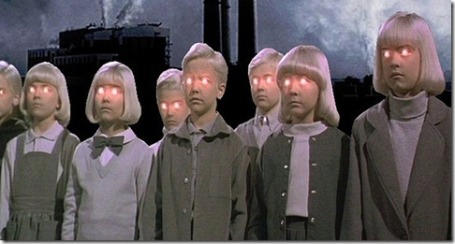 Psychohistorians deem this state to be such an oblivious one that they use the term trance-state for it, fully intending all the implications and connotations that term engenders. That is, they are saying that people who are this repressed and split off do their acting zombie-like and out of motivations completely hidden from themselves. [Footnote 1]
Psychohistorians deem this state to be such an oblivious one that they use the term trance-state for it, fully intending all the implications and connotations that term engenders. That is, they are saying that people who are this repressed and split off do their acting zombie-like and out of motivations completely hidden from themselves. [Footnote 1]
Birth Woes ~ World Wars

 In such total ignorance, and of course being totally ignorant that one is in ignorance, people in the past century have been able to act out their perinatal underbellies in ways to make such hideous and all-encompassing wars as World War I and World War II possible.
In such total ignorance, and of course being totally ignorant that one is in ignorance, people in the past century have been able to act out their perinatal underbellies in ways to make such hideous and all-encompassing wars as World War I and World War II possible.
![clip_image013[3] clip_image013[3]](https://apocalypseknow.files.wordpress.com/2012/06/clip_image0133.jpg?w=423&h=298) Leaving aside for a moment the myriad ways the perinatal has unconsciously been acted out in this century in creating the current situation in which we are on the brink of extinction—which can be considered the most serious consequences of this splitting off imaginable—simply focusing on this century’s major wars as evidence of perinatal acting-out alone is instructive.
Leaving aside for a moment the myriad ways the perinatal has unconsciously been acted out in this century in creating the current situation in which we are on the brink of extinction—which can be considered the most serious consequences of this splitting off imaginable—simply focusing on this century’s major wars as evidence of perinatal acting-out alone is instructive.
![clip_image014[3] clip_image014[3]](https://apocalypseknow.files.wordpress.com/2012/06/clip_image0143.gif?w=410&h=331) The Nazis, in particular, were extreme in their dissociation from their perinatal, in their projection of it onto the Jews, and their consequent ability to act it out in horrific ways on them and others. Alice Miller and Lloyd deMause have each detailed the psychodynamics of this projection of primal pain—both perinatal and childhood—in the creation of the people that Adolf Hitler and the Nazis became in their adulthood. [Footnote 2]
The Nazis, in particular, were extreme in their dissociation from their perinatal, in their projection of it onto the Jews, and their consequent ability to act it out in horrific ways on them and others. Alice Miller and Lloyd deMause have each detailed the psychodynamics of this projection of primal pain—both perinatal and childhood—in the creation of the people that Adolf Hitler and the Nazis became in their adulthood. [Footnote 2]
![clip_image016[3] clip_image016[3]](https://apocalypseknow.files.wordpress.com/2012/06/clip_image0163.jpg?w=479&h=359) The Nazis present us with the patterns of these processes of dissociation and projection in blatant and obvious relief. The way Nazis, especially in concentration camps, acted out perinatal trauma on their prisoners has been described in great detail by Grof as well. [Footnote 3]
The Nazis present us with the patterns of these processes of dissociation and projection in blatant and obvious relief. The way Nazis, especially in concentration camps, acted out perinatal trauma on their prisoners has been described in great detail by Grof as well. [Footnote 3]
Wounded Deer and Centaurs – Being “Weller,” But Appearing Sicker – Perinatal Awareness of Boomers and Beyond
Perinatal Boomers and Beyond—We Know THAT We Don’t Know…We Could Be Wrong.… But You Certainly Are
Being “Weller,” But Appearing Sicker—Generations Since
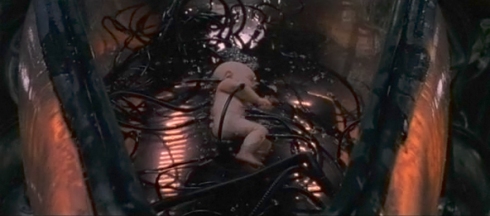 As I said, contrasted with being completely split off — dissociated — from one’s perinatal unconscious, as the Fifties and WWII Generation are predominantly, is being less cut off from it and having
As I said, contrasted with being completely split off — dissociated — from one’s perinatal unconscious, as the Fifties and WWII Generation are predominantly, is being less cut off from it and having  some access to its energies. This means that rather than being totally and blindly driven by these forces, which are acting on one indirectly,
some access to its energies. This means that rather than being totally and blindly driven by these forces, which are acting on one indirectly, one actually feels them somewhat: One has a sense of their being a part of one’s experience as opposed to living within them so thoroughly that one has not a clue of their existence.
one actually feels them somewhat: One has a sense of their being a part of one’s experience as opposed to living within them so thoroughly that one has not a clue of their existence.
This means that one has more options than to act them out, but it also means they make one aware of one’s perinatal sickness. One feels them, suffers from them, struggles with them.
On the other hand, one does not suffer or struggle from unconscious energies that one is compliant with and that are completely manifest and supported in one’s social and cultural environments (for example, the worlds of the WWII and previous generations), however destructive that makes one’s actions.
Trancing Vs. Suffering

 This difference may be likened to the difference between being a fish in water and totally oblivious to that fact versus living out of water and experiencing a downpour. When one is in less of a trance state, one is aware of alternative ways of being; in the example, that would be being dry. Consequently, one suffers and struggles amidst these forces and options…and one has at least some ability to choose one’s actions.
This difference may be likened to the difference between being a fish in water and totally oblivious to that fact versus living out of water and experiencing a downpour. When one is in less of a trance state, one is aware of alternative ways of being; in the example, that would be being dry. Consequently, one suffers and struggles amidst these forces and options…and one has at least some ability to choose one’s actions.
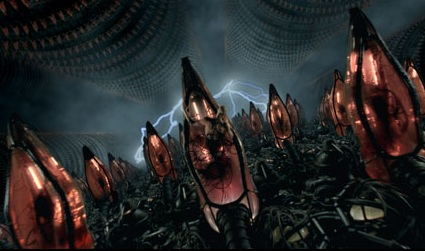 I do not believe it is simply coincidence that we are currently going from the Piscean Age — symbolized by fish in water — to the Aquarian Age — symbolized by a water bearer. This change was a big part of the consciousness during the Sixties,
I do not believe it is simply coincidence that we are currently going from the Piscean Age — symbolized by fish in water — to the Aquarian Age — symbolized by a water bearer. This change was a big part of the consciousness during the Sixties,  and I think we are beginning to see why: Going from a state where one is oblivious to the forces around one to a state where one can see the things one is dealing with (carrying the water) is no small thing.
and I think we are beginning to see why: Going from a state where one is oblivious to the forces around one to a state where one can see the things one is dealing with (carrying the water) is no small thing.
 It seems everything about evolution in humans has something to do with being between two mediums and the advance/the added perspective that comes with that,
It seems everything about evolution in humans has something to do with being between two mediums and the advance/the added perspective that comes with that,  going all the way back to being the only ape to take to the water so much as to become partly aquatic—placing our species between water and land, halfway between a dolphin and a chimpanzee. I think we are heading toward being like the fairies and angels we imagine—halfway between land and air—but that is a whole other post.
going all the way back to being the only ape to take to the water so much as to become partly aquatic—placing our species between water and land, halfway between a dolphin and a chimpanzee. I think we are heading toward being like the fairies and angels we imagine—halfway between land and air—but that is a whole other post.
Another analogy I’ve heard of this difference between the two modes of being completely oblivious and somewhat aware of one’s unconscious is that ![nomadic 382[9]](https://apocalypseknow.files.wordpress.com/2012/06/nomadic-3829.jpg?w=454&h=318) between living full-time in an arctic environment where one has to wear a heavy coat versus living in a milder climate. In the warmer climes, one is both aware of what it is like to not have a coat—one has capacity to feel better ways of being—as well as how bulky, obstructing, and uncomfortable it is to have the coat on—suffering
between living full-time in an arctic environment where one has to wear a heavy coat versus living in a milder climate. In the warmer climes, one is both aware of what it is like to not have a coat—one has capacity to feel better ways of being—as well as how bulky, obstructing, and uncomfortable it is to have the coat on—suffering  more from it, suffering from one’s perinatal memories. Finally one is better able to decide when to have it on and not—one has more options.
more from it, suffering from one’s perinatal memories. Finally one is better able to decide when to have it on and not—one has more options.  At some point I will discuss what this has to do with the increase of bipolar disorders, but not now.
At some point I will discuss what this has to do with the increase of bipolar disorders, but not now.
One analogy I find especially provocative is the difference between watching a movie and being fully engrossed in it so that one does not know it is a movie, which is equivalent to acting out unconsciously from one’s early imprints. Compare this to watching the same movie with equal interest, but being aware that one is in a theater. You can see where in the second instance one would feel there are more options; and one would feel that one could step back before finding oneself caught up in horrific actions.
Wounded Deer and Centaurs

 However, being aware of one’s discomfort (having “more access” to the perinatal), one suffers like the wounded deer—the innocent who feels things and so struggles with society’s sickness that many others are unconsciously perpetrating. But, with time and success in handling this pain, one can become the wounded healer—the Centaur.
However, being aware of one’s discomfort (having “more access” to the perinatal), one suffers like the wounded deer—the innocent who feels things and so struggles with society’s sickness that many others are unconsciously perpetrating. But, with time and success in handling this pain, one can become the wounded healer—the Centaur.
 Now, why and how would this occur? As I’ve said, some access to the perinatal and more blatant and direct acting it out is exhibited by many of the baby-boomer generation. This is in large part due to their having been raised in a way that required less in the way of ego defenses to keep their primal pain suppressed. Psychohistorians like Glen Davis and Lloyd deMause have detailed a slow advance of child-caring techniques, with generations since the WWII Generation being raised with more attention to their needs and less harshness and cruelty…increasingly more love.
Now, why and how would this occur? As I’ve said, some access to the perinatal and more blatant and direct acting it out is exhibited by many of the baby-boomer generation. This is in large part due to their having been raised in a way that required less in the way of ego defenses to keep their primal pain suppressed. Psychohistorians like Glen Davis and Lloyd deMause have detailed a slow advance of child-caring techniques, with generations since the WWII Generation being raised with more attention to their needs and less harshness and cruelty…increasingly more love.
“What the World Needs Now, Is…”
 Before anyone begins thinking “permissive” or “spare the rod, spoil the child,” let me point out that I will be continually stressing how this development is not only a good thing (why wouldn’t love be good?)
Before anyone begins thinking “permissive” or “spare the rod, spoil the child,” let me point out that I will be continually stressing how this development is not only a good thing (why wouldn’t love be good?) but is one of the few sources of hope for our future we really do have.
but is one of the few sources of hope for our future we really do have.
For less childhood pain and trauma means one is stronger and more able to face the even deeper perinatal pain.
Choosing Lesser Evils
 At any rate, the extreme acting-out and total dissociation from the perinatal exhibited by the World-War-Two Generation was followed, in the generations coming after, by less relative dissociation and less horrific forms of acting it out. Quite simply, generations as a whole had better ability to refrain from the more blatantly evil act outs—wholesale murders and world wars, pogroms and genocide,
At any rate, the extreme acting-out and total dissociation from the perinatal exhibited by the World-War-Two Generation was followed, in the generations coming after, by less relative dissociation and less horrific forms of acting it out. Quite simply, generations as a whole had better ability to refrain from the more blatantly evil act outs—wholesale murders and world wars, pogroms and genocide,
 inquisitions and witch-burning, racism and slavery. They were more able to choose seemingly milder forms of suffering and self-destruction — polluting the atmosphere, water, and food; population explosions and crowding of cities; and traffic jams.
inquisitions and witch-burning, racism and slavery. They were more able to choose seemingly milder forms of suffering and self-destruction — polluting the atmosphere, water, and food; population explosions and crowding of cities; and traffic jams.
 The common everyday traffic jam is especially instructive of perinatal dynamics as traffic congestions replicate asphalt birth tunnels where one not only breathes exhaust fumes from trucks and other autos—fetal malnutrition—but also can become gridlock at any moment, thus re-creating the intense frustration and no-exit hopelessness, and rage, of BPM II.
The common everyday traffic jam is especially instructive of perinatal dynamics as traffic congestions replicate asphalt birth tunnels where one not only breathes exhaust fumes from trucks and other autos—fetal malnutrition—but also can become gridlock at any moment, thus re-creating the intense frustration and no-exit hopelessness, and rage, of BPM II.
Baby-Boomer Perinatal Awareness
Other examples of the scenery of modern times where the perinatal is manifesting but is less projected onto another:
We Know THAT We Don’t Know…We Could Be Wrong.
 Many baby-boomers had enough access to their perinatal underbellies to question the absolute rightness of the Vietnam War and so they campaigned against it. This is indicative of closeness to the perinatal because it shows an ability to doubt one’s egocentric defenses—as given by society and family of origin—and to look at situations from the eyes of the Other.
Many baby-boomers had enough access to their perinatal underbellies to question the absolute rightness of the Vietnam War and so they campaigned against it. This is indicative of closeness to the perinatal because it shows an ability to doubt one’s egocentric defenses—as given by society and family of origin—and to look at situations from the eyes of the Other.
 So much was this evident in boomers that some were even able
So much was this evident in boomers that some were even able  to see the Vietnam War through the eyes of the enemy—exemplified by Jane Fonda’s trip to Hanoi, the waving of North Vietnamese flags at demonstrations, and the carrying of little red books of the sayings of Chairman Mao tse Tung.
to see the Vietnam War through the eyes of the enemy—exemplified by Jane Fonda’s trip to Hanoi, the waving of North Vietnamese flags at demonstrations, and the carrying of little red books of the sayings of Chairman Mao tse Tung.
But It’s Clear You’re Wrong.
 The baby-boomer—or Sixties—generation also indicate their closeness to their perinatal in their campaigns against some of the act-outs of the perinatal mentioned above: These include actions against pollution; a rejection of city life, with its gridlocks, pollution, and crowding , and a return to the country, in communes or otherwise; an awareness and rejection of polluted foods and creation of a natural and organic foods movement; and actions against global overpopulation including support for birth control, a pro-choice stance on abortion, and delaying of baby-making on their own parts along with a reduction in the size of their families.
The baby-boomer—or Sixties—generation also indicate their closeness to their perinatal in their campaigns against some of the act-outs of the perinatal mentioned above: These include actions against pollution; a rejection of city life, with its gridlocks, pollution, and crowding , and a return to the country, in communes or otherwise; an awareness and rejection of polluted foods and creation of a natural and organic foods movement; and actions against global overpopulation including support for birth control, a pro-choice stance on abortion, and delaying of baby-making on their own parts along with a reduction in the size of their families.
The sexual excess that is characteristic of the perinatal, specifically BPM III, was evident in boomers’ free love and promiscuous sexual behavior.
 Many more examples could be given. But the proof of their closeness to their unconscious dynamics lies not only in their actions—as mentioned above, in their more blatant acting them out or in their actual actions against the blatant acting out, both of which indicate closer access—but also
Many more examples could be given. But the proof of their closeness to their unconscious dynamics lies not only in their actions—as mentioned above, in their more blatant acting them out or in their actual actions against the blatant acting out, both of which indicate closer access—but also 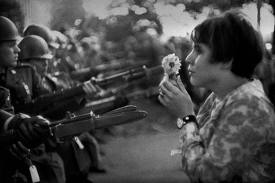 in the study of their unconscious dynamics.
in the study of their unconscious dynamics.  As mentioned in Chapter Twelve, Kenneth Keniston found in his study of the psychodynamics of the Sixties generation when they were in their youth an unusual amount of perinatal symbolism and self-analysis. (See “Raging to Reenter, Digging Under Ground.”)
As mentioned in Chapter Twelve, Kenneth Keniston found in his study of the psychodynamics of the Sixties generation when they were in their youth an unusual amount of perinatal symbolism and self-analysis. (See “Raging to Reenter, Digging Under Ground.”)
Boomer Rage, Perinatally So
We Shall Overcome.
We also see perinatal feelings in the focus of the baby-boomers on empowerment. This word appears to come up in every area of their lives. It can be seen as the natural focus of a generation that feels itself inside to be a helpless fetus facing an overpowering obstruction of a womb.
Hence baby-boomers are of course also closer to the frustration, rebellion, and yes, rage, that is part of the perinatal complex. We saw it exhibited by them in their anger at authority in the Sixties, their rebellion against the Vietnam War.
“Get the &%$ OFF Me!”
 Keep in mind that a huge aspect of the perinatal is feelings of restriction, thus frustration, and, consequently rage against large entities of obstruction—like the womb was in relation to the small and helpless fetus. In doing so, we see that the reason for their rage is simple and understandable.
Keep in mind that a huge aspect of the perinatal is feelings of restriction, thus frustration, and, consequently rage against large entities of obstruction—like the womb was in relation to the small and helpless fetus. In doing so, we see that the reason for their rage is simple and understandable.
Baby-boomers, characterized as being closer to their unconscious, especially the perinatal, have more access to their anger: This means they feel their anger and are less likely to act it out in more hidden, disguised, and dire ways such as war-making, racism, and anti-Semitism.
This does not mean their rage would not be troublesome. The perinatal lets no one get off scot free. We see lots of pre- and perinatal anger coming out in the last few decades in the phenomenon of the “angry electorate.” Let’s look at that next.
You Didn’t Really Believe Elections Had Anything to Do With Issues, Did You? Biting the Feeding Hand … Perinatal Rage and Panicky Electorate
Seriously? You Actually Think Elections Have Something to Do With Issues? Biting the Feeding Hand … Perinatal Rage and Panicky Electorate
More recently these baby-boomers have been coming into the triumphant phase of their lives. They make up the largest sector of the electorate, and their influence is reflected more as they come into positions of power in the media and elsewhere.
The Angry Electorate and Boomers

 But their influence has been diffused and confused because of the anger of some of them. Their irrational rage—combined with the reactionary consciousness of the Fifties Generation, many of the Fifties Gen children of Yuppies-Gen Xers, and the remaining WWII folks—has most often skewed election results against the Boomers interests and their true desires. Though not the majority of boomers, enough of them expressed their rage to swing election results in favor of the other side.
But their influence has been diffused and confused because of the anger of some of them. Their irrational rage—combined with the reactionary consciousness of the Fifties Generation, many of the Fifties Gen children of Yuppies-Gen Xers, and the remaining WWII folks—has most often skewed election results against the Boomers interests and their true desires. Though not the majority of boomers, enough of them expressed their rage to swing election results in favor of the other side.
1992 – “Mad as Hell”
Beginning in the 1992 and 1994 national elections, these baby-boomers exhibited their perinatal influences in contributing to the totally unexpected phenomenon of the “angry electorate.”

 At the time, pundits and media analysts were at a total loss to explain the rage of the electorate that was affecting these elections. In 1992, they were totally surprised by the showing of three men in particular—Jerry Brown, Pat Buchanan, and Ross Perot—who seemed to have one thing in common: the angry tones and rebelliousness that characterized their speeches, as compared to others. [Footnote 4]
At the time, pundits and media analysts were at a total loss to explain the rage of the electorate that was affecting these elections. In 1992, they were totally surprised by the showing of three men in particular—Jerry Brown, Pat Buchanan, and Ross Perot—who seemed to have one thing in common: the angry tones and rebelliousness that characterized their speeches, as compared to others. [Footnote 4]
 The demeanor of these candidates was at such odds with the other candidates that when Bill Clinton one night responded angrily to a comment by Jerry Brown about Hillary, Clinton’s wife, it was that part of the debate—of Clinton being angry, all issues aside—that made the news that night!
The demeanor of these candidates was at such odds with the other candidates that when Bill Clinton one night responded angrily to a comment by Jerry Brown about Hillary, Clinton’s wife, it was that part of the debate—of Clinton being angry, all issues aside—that made the news that night!
Though the rage of the electorate in 1992 caused the Brown, Perot, and Buchanan phenomena, it was split among them, so Clinton ended up winning.  This of course was also OK with the baby-boomers in that (1) Clinton and Gore were baby-boomers like themselves and (2) in the race against Bush, Clinton was the challenger, and thus the rebel; and Bush was the “bum to be thrown out.”
This of course was also OK with the baby-boomers in that (1) Clinton and Gore were baby-boomers like themselves and (2) in the race against Bush, Clinton was the challenger, and thus the rebel; and Bush was the “bum to be thrown out.”
However, this rage did not go away after the election, which highlights its having perinatal origins. In fact, after the shortest “honeymoon period” in history, by some accounts, it became directed at the most likely target/center—the President, Bill Clinton, himself.
We all know how despite the successes and progress of Clinton’s first year, he was especially singled out for ridicule and denigration by the media. He could not seem to do anything right, and the most incredibly outrageous behaviors were attributed to him.
1994 – “Throw the Bums Out … Again.”
 This rage spilled over into the next year and, sure enough, during the midterm election—the issues be damned—the angry electorate was in a mood to “throw the bums out” again. It did not matter the party….I do not claim that all those of my generation are always as politically astute as they are angry.
This rage spilled over into the next year and, sure enough, during the midterm election—the issues be damned—the angry electorate was in a mood to “throw the bums out” again. It did not matter the party….I do not claim that all those of my generation are always as politically astute as they are angry.
The Republicans called it a “revolution.” It was simply the acting out of an electorate in the throes of perinatal feelings—that is, feelings of frustration,  being “tied up” by red tape, an inability to go forward…that is, up the economic ladder—wages had been stagnating since the early 80s…being overcontrolled and pushed around by regulations…big government being the big mother womb keeping the fetus locked in and unable to move…and out of all this, the consequent anger and rage.
being “tied up” by red tape, an inability to go forward…that is, up the economic ladder—wages had been stagnating since the early 80s…being overcontrolled and pushed around by regulations…big government being the big mother womb keeping the fetus locked in and unable to move…and out of all this, the consequent anger and rage.
1996 and 1998 — “To Hell With You!”
 At any rate, succeeding elections bear out this analysis of an angry electorate. In 1996, despite the much ballyhooed “Republican Revolution,” sure enough, the electorate was spoiling to “throw the bums out” again—only this time it was the Republican Congress.
At any rate, succeeding elections bear out this analysis of an angry electorate. In 1996, despite the much ballyhooed “Republican Revolution,” sure enough, the electorate was spoiling to “throw the bums out” again—only this time it was the Republican Congress.  So there were Democratic gains at the time.
So there were Democratic gains at the time.
And in 1998, when everything pointed to a huge Republican landslide because of the Lewinsky scandal, the electorate again showed their rebellion and anger toward both the pundits and the Republicans who had been lambasting them with details of the scandal for nearly a year by giving the Democrats gains again! [Footnote 4]
2006, 2008, and 2010 — Panicky Electorate
In 2006, 2008, and 2010, it was an angry electorate reeling against oppression; and in the case of 2010, doing it mindlessly, against their own interests. If there were not perinatal charge to all this, Americans would not be so irrational about their choices.
Perinatal Rage
People have had good reasons to feel oppressed since the Eighties when Reagan began the giveaways to the rich and the budget cutbacks, continuing to this day, that have caused the masses to feel constricted and oppressed.
Yet, if this did not result in their being perinatally overloaded so that they cannot reason, they would not have been able to be led to fight their own interests as they were in 2010 and in an ongoing way as exemplified by the Tea Party and the success of right-wing agendas.
Reacting, Too Angry and Confused to Think
 Another aspect of this irrationality on both sides of the political spectrum has to do with this idea that there is no difference between the two major parties. Feeling oppressed perinatally is characterized by a pressure from all sides simultaneously.
Another aspect of this irrationality on both sides of the political spectrum has to do with this idea that there is no difference between the two major parties. Feeling oppressed perinatally is characterized by a pressure from all sides simultaneously.  There is an inability to distinguish or discriminate between forces that are helpful and those that are dire, as any and all developments seem threatening in situations of crisis. In a situation of overwhelm, further, there is an inability to think clearly. One just fights back, explodes, reacts. It’s no coincidence that righties are called reactionaries.
There is an inability to distinguish or discriminate between forces that are helpful and those that are dire, as any and all developments seem threatening in situations of crisis. In a situation of overwhelm, further, there is an inability to think clearly. One just fights back, explodes, reacts. It’s no coincidence that righties are called reactionaries.
Biting the Feeding Hand
 The upshot is an inability, under the pressure of perinatal feelings, provoked endlessly by actual oppression economically, environmentally, socially, and culturally, to rail against any authority, to bite the hand that feeds one. This is exactly like the panicked swimmer who in danger of drowning fights off his or her rescuer.
The upshot is an inability, under the pressure of perinatal feelings, provoked endlessly by actual oppression economically, environmentally, socially, and culturally, to rail against any authority, to bite the hand that feeds one. This is exactly like the panicked swimmer who in danger of drowning fights off his or her rescuer.
Can anyone at this point still maintain that the politics of the last few decades had anything at all to do with ideology or issues?
Millennials and Their Opposites – Fifties Generation Tea Partyers … How OWS and Tea Party Movements Are Generationally and Perinatally Different
Millennial Gen Occupiers and Eisenhower Gen Tea Partyers Are Perinatally As Well As Generationally Opposed
Right-Wing “Hate Groups,” the Tea Party, and the Fifties Generation: Perinatally Oblivious
![clip_image004[5] clip_image004[5]](https://apocalypseknow.files.wordpress.com/2012/06/clip_image0045.jpg?w=212&h=276)
 One might also note the rise of “hate groups” occurring at the same time as the phenomenon of the angry electorate. Hate groups fill their ranks from folks on the extreme right and their actions are exemplified in the Oklahoma bombing tragedy and more recently in the Tea Party.
One might also note the rise of “hate groups” occurring at the same time as the phenomenon of the angry electorate. Hate groups fill their ranks from folks on the extreme right and their actions are exemplified in the Oklahoma bombing tragedy and more recently in the Tea Party.
Perinatally Clueless
But notice again then that these hate groups are always on the extreme right of the political spectrum and thus exemplify a World-War-Two mindset in relation to their perinatal unconscious: Specifically, the mindset is one of being completely cut off from one’s unconscious dynamics and being in total denial of unconscious motivations so that one can have the complete certitude—lacking any access to the unconscious which would give rise to doubts—that makes violent actions possible.
![clip_image007[4] clip_image007[4]](https://apocalypseknow.files.wordpress.com/2012/06/clip_image0074_thumb.jpg?w=277&h=233) However the reason for bringing up the hate groups is to show how much their actions as well are dominated by
However the reason for bringing up the hate groups is to show how much their actions as well are dominated by  perinatal—in their case, totally unconscious—dynamics.
perinatal—in their case, totally unconscious—dynamics.
For without exception their reasons for rising up against the government—representing the overwhelming womb—has to do with frustrations, like the trapped fetus feels, in regards to “oppressive” taxes, governmental red tape, laws, and other regulations that they feel restrict their freedom…to move freely, as one wanted to but couldn’t, in the womb.
 Tea Party and hate group ranks are prevalent with Fifties Generation folks. The Eisenhower Generation — after the WWII Gen and before Boomers — were born just before or during WWII. They are mired in prenatal fears coming from the fact that their parents were living through such distressing times as WWII and the Great Depression when they were
Tea Party and hate group ranks are prevalent with Fifties Generation folks. The Eisenhower Generation — after the WWII Gen and before Boomers — were born just before or during WWII. They are mired in prenatal fears coming from the fact that their parents were living through such distressing times as WWII and the Great Depression when they were  inside their mothers. They were “marinated” in the womb with fear and insecurity. They also were not brought up with the societal advance in child-rearing the next generation of boomers, and those afterward, would be granted. So it is understandable they would be both cut off from perinatal access yet full of perinatal pushes and pulls to act out in confused and self-destructive ways.
inside their mothers. They were “marinated” in the womb with fear and insecurity. They also were not brought up with the societal advance in child-rearing the next generation of boomers, and those afterward, would be granted. So it is understandable they would be both cut off from perinatal access yet full of perinatal pushes and pulls to act out in confused and self-destructive ways.
Perinatal Access of Millennials
Being Boomer Kids, Wouldn’t You Kind of Expect That?
Now on the other end of this perinatal spectrum we have the most recent generational cohort to be making a mark. The Millennial, or Baby-Boomer Echo generation, show the same inner access as their Boomer parents. They demonstrate as well their parents’ consequent refusal to act it out on a larger scale: It has been said that the greatest concerns of those in this generation, now in their twenties and thirties, are the environment and racism-bigotry.
Activist, Progressive
![clip_image001[4] clip_image001[4]](https://apocalypseknow.files.wordpress.com/2012/06/clip_image0014_thumb.png?w=274&h=280) They show the progressive bent of their parents, also, in their having a lot to do with giving America its first African-American president. And to the environment and minority rights, we need to add classism, economic fairness, and human rights because of their phenomenal outpouring of support in the past year for Occupy Wall Street and for union rights in Wisconsin and other states. They are showing global strength in opposing fascism, economic injustice, political oppression, and human rights abuses in Occupy and Arab Spring movements. They’ve filled massive demonstrations against the draconian economic policies of Republicans in Wisconsin.
They show the progressive bent of their parents, also, in their having a lot to do with giving America its first African-American president. And to the environment and minority rights, we need to add classism, economic fairness, and human rights because of their phenomenal outpouring of support in the past year for Occupy Wall Street and for union rights in Wisconsin and other states. They are showing global strength in opposing fascism, economic injustice, political oppression, and human rights abuses in Occupy and Arab Spring movements. They’ve filled massive demonstrations against the draconian economic policies of Republicans in Wisconsin.
Climate Change and The Environment
We know how pollution and action against pollution indicates a closeness to one’s perinatal. To put it another way, it is clear that only a total denial and disconnect between one’s consciousness and one’s unconscious perinatal dynamics would allow one to act it out unconsciously in the creation of pollution and in the denial of it as a problem or a mindless neglect of it. So the fact that these Baby-Boomer children, the Millennials, are so cognizant, concerned, and active in relation to global pollution and climate change shows their lack of denial of this perinatal act-out.
Multicultural, Resisting Racism and Oppression
But what of racism and bigotry? How is this an indication of a closeness to the perinatal. There are several ways in which this is so. As mentioned, a closeness to the perinatal allows one to doubt one’s given defenses and to glimpse alternate perspectives—in particular to look at things from the eyes of The Other.
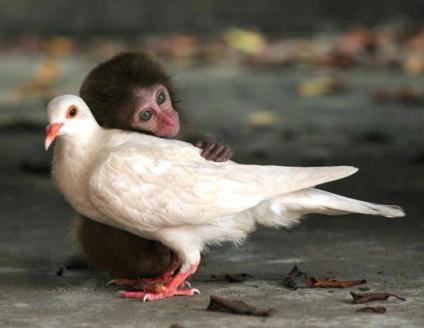 In this way, the baby-boomer echo generation are able to see oppression, injustice, and unfairness as it is played out in the lives of minorities who don’t share their (predominantly) middle-class advantages. They simply don’t “get” racism, sexism, or bigotry of any kind; it is incomprehensible to them. They strongly oppose imperialism, colonialism, or oppression of any kind. Relatedly, they support animal rights and oppose animal abuse and cruelty. They don’t understand torture and violence against fellow planetmates.
In this way, the baby-boomer echo generation are able to see oppression, injustice, and unfairness as it is played out in the lives of minorities who don’t share their (predominantly) middle-class advantages. They simply don’t “get” racism, sexism, or bigotry of any kind; it is incomprehensible to them. They strongly oppose imperialism, colonialism, or oppression of any kind. Relatedly, they support animal rights and oppose animal abuse and cruelty. They don’t understand torture and violence against fellow planetmates.
![clip_image002[4] clip_image002[4]](https://apocalypseknow.files.wordpress.com/2012/06/clip_image0024.jpg?w=321&h=321) Naturally they were helped in that awareness by the gains of previous decades, beginning in the Sixties, which had them growing up with diversity of racial and ethnic heritages—seeing things multiculturally not narrowly—in their schools and in the omnipresent media. They grew up with the environmental awareness that was set in motion in the Sixties; they don’t know of a world before recycling and energy conservation. Activism, demonstrations, and political action have been a part of their lives since they were born, unlike the several generations that preceded them and even their Boomer parents who grew up in a politically castrated Fifties.
Naturally they were helped in that awareness by the gains of previous decades, beginning in the Sixties, which had them growing up with diversity of racial and ethnic heritages—seeing things multiculturally not narrowly—in their schools and in the omnipresent media. They grew up with the environmental awareness that was set in motion in the Sixties; they don’t know of a world before recycling and energy conservation. Activism, demonstrations, and political action have been a part of their lives since they were born, unlike the several generations that preceded them and even their Boomer parents who grew up in a politically castrated Fifties.
But there is another, stronger element. This is the factor of oppression and unfairness itself. We experience compression (oppression), and frustration at our attempts to go forward, and what feels like hopeless unfairness and injustice, when in the throes of BPM II birth trauma. To see these facets of the fates of minorities, as in racism, or gender or sexual bias, points to this echo generation’s closeness to their own perinatal oppression; hence their ability to empathize with oppressed minorities.
This ability to realistically sense and respond to oppression is also the reason they would throw themselves in heartily in defense of unions, an increasingly oppressed middle class, and public sector employees.
Of Goths, Gen X, Anti-Abortionists, Pacifiers, and a Hierarchy of Healing … You Make It When You DON’T Fake It
Flaunting One’s Sickness Is Healthier Than Hiding It … Gen X, Goths, Pacifiers, and The Hierarchy of Healing
A Hierarchy of Healing?
This idea that those close to their unconscious conflicts are more likely to act them out blatantly goes completely against one of DeMause’s tenets. He wrote, “The higher the psychogenic mode of the psychoclass, the less it is necessary for it to act out its conflicts.” [Footnote 5]
However this is exactly the crux of my difference with his theory and is a  central point I am making. For from my perspective, the higher the mode of child-caring equals the less the defenses. Hence, the more it is likely that that generation’s conflicts will be close to the surface, seeking resolution … like Maslow’s hierarchy of needs theory. We might want to call it a hierarchy of healing theory. [Footnote 6]
central point I am making. For from my perspective, the higher the mode of child-caring equals the less the defenses. Hence, the more it is likely that that generation’s conflicts will be close to the surface, seeking resolution … like Maslow’s hierarchy of needs theory. We might want to call it a hierarchy of healing theory. [Footnote 6]
 In other words, our observing the supposed “acting out” of an underlying trauma does not mean that the group or person in question is actually or, at least completely, “acting it out” and defending against it. It may be that that group is resolving, healing, or integrating it—taking it inward rather than acting it out…in the world, on others…whether to a small or great extent.
In other words, our observing the supposed “acting out” of an underlying trauma does not mean that the group or person in question is actually or, at least completely, “acting it out” and defending against it. It may be that that group is resolving, healing, or integrating it—taking it inward rather than acting it out…in the world, on others…whether to a small or great extent.  Using the analogy of Pandora’s Jar, described earlier, they are opening the jar, at least a little. And I disagree with deMause in that I wish to stress that it is healthier by far to do that. Let me explain:
Using the analogy of Pandora’s Jar, described earlier, they are opening the jar, at least a little. And I disagree with deMause in that I wish to stress that it is healthier by far to do that. Let me explain:
The difference between acting out and resolving is whether the actions are done in total dissociation from the unconscious dynamics, that is to say, in a trance state—as explained earlier in regard to the World War Two generation and the Tea Party—or whether there is at least a modicum of insight into it occurring as a result of things inside of oneself, not completely projected onto the outside.
 The attitude that leads to total dissociation and acting out was expressed in a recent 2012 military movie, Act of Valor, which depicted Navy Seals engaged in anti-terrorism activity. At the end, the manner of dealing with pain recommended for these American soldiers and “men of valor” was to (paraphrasing) put all the pain in a box, shut it tight, press it down till it is smaller and smaller, and never, under any circumstances, let it out!
The attitude that leads to total dissociation and acting out was expressed in a recent 2012 military movie, Act of Valor, which depicted Navy Seals engaged in anti-terrorism activity. At the end, the manner of dealing with pain recommended for these American soldiers and “men of valor” was to (paraphrasing) put all the pain in a box, shut it tight, press it down till it is smaller and smaller, and never, under any circumstances, let it out!
 However, in non-acting-out—“acting inward” or taking back the projection—there is a tad of insight, as, for example, in the “overexamined life” of the “uncommitted” and the “self-analysis” of the young radicals of the Sixties generation. Similarly, the rock concert revivication of all current generations except the Fifties and WWII ones, as I’ve mentioned, is
However, in non-acting-out—“acting inward” or taking back the projection—there is a tad of insight, as, for example, in the “overexamined life” of the “uncommitted” and the “self-analysis” of the young radicals of the Sixties generation. Similarly, the rock concert revivication of all current generations except the Fifties and WWII ones, as I’ve mentioned, is 
 about personal experience and growth, and it is not about acting out on another; whereas an example of the extreme other end of that would be engaging, trance-like, in a mass killing against a perceived political enemy, as Loughner did, and as we do as nations in wars.
about personal experience and growth, and it is not about acting out on another; whereas an example of the extreme other end of that would be engaging, trance-like, in a mass killing against a perceived political enemy, as Loughner did, and as we do as nations in wars.
Another example of complete dissociation are the anti-abortion folks. They don’t have a clue of the connection between their own unconscious prenatal pain and the feelings they have about unborn others. They are not wrestling with their feelings, they are trying to change the world to conform to their defenses around those feelings—that is, they want the world to suppress that womb time out of existence like they have done to it in their own minds. The proof that it is acting out is that it is all about changing others’ behavior, and it involves imposing one’s inner pain on others forcefully and aggressively—which we have seen in its extreme form with the murders of physicians committed by anti-abortionists
Flaunting One’s Sickness Beats Hiding It—Generation X
The self-analysis of the Sixties Generation was followed by a different mode of struggling with perinatal pain by Generation X, which continues in abated form with the Millennial Generation.  It was manifest rather strikingly with the Goth phenomenon and the vampire fascination that began in the Eighties, coincident with Gen X’s coming of age. Goth and vampirism show blatant perinatal dynamics that are not unfelt and completely repressed as in dissociation with its trance-state aggression against others. An example of Gen X perinatal acting out of these dynamics in total dissociation and trance state was given above in the anti-abortionists. But Goth and vampire culture show folks feeling and immersed consciously in these pushes and pulls and wrestling with them, trying to work them out as opposed to act them out.
It was manifest rather strikingly with the Goth phenomenon and the vampire fascination that began in the Eighties, coincident with Gen X’s coming of age. Goth and vampirism show blatant perinatal dynamics that are not unfelt and completely repressed as in dissociation with its trance-state aggression against others. An example of Gen X perinatal acting out of these dynamics in total dissociation and trance state was given above in the anti-abortionists. But Goth and vampire culture show folks feeling and immersed consciously in these pushes and pulls and wrestling with them, trying to work them out as opposed to act them out.
Hey, It Was Tough!
This is rather clearly shown in looking at the “regression” in Europe, described by psychohistorians, which occurred in the Nineties. This behavior showed a bit of insight…and resolution happening…in that the baby song being hummed was about the very real hardships of being a baby. Therefore, an actual truth about their own lives was being faced there by those singing along with it. The song was not being used to deny or defend against those traumas.
One might suspect that as well in carrying around such blatant examples of regression as a pacifier. For  someone in a more defended mode would be highly threatened by such an obvious symbol that they are really needy children inside. More defended folks would be terrified such overt behavior would make them look wussy or sissified—that is, look like that vulnerable, frightened baby that they
someone in a more defended mode would be highly threatened by such an obvious symbol that they are really needy children inside. More defended folks would be terrified such overt behavior would make them look wussy or sissified—that is, look like that vulnerable, frightened baby that they  really feel themselves to be but are doing their damnedest to hide from everyone. Imagine how those Navy Seals described above would feel walking around sucking on a pacifier, for example.
really feel themselves to be but are doing their damnedest to hide from everyone. Imagine how those Navy Seals described above would feel walking around sucking on a pacifier, for example.
So in actually carrying around a pacifier these youth were not only displaying an insight into their feelings of sometimes being needy babies, on the inside, but  are actually flaunting this awareness, as if to shame, or slap the face of, or be “in the face” of a generation of their parents—the Fifties Generation for the most part—who did not see their needs when they were babies—however effortfully and obviously they sought to demonstrate them. Thus the symbols needed to become more and more shocking and obvious.
are actually flaunting this awareness, as if to shame, or slap the face of, or be “in the face” of a generation of their parents—the Fifties Generation for the most part—who did not see their needs when they were babies—however effortfully and obviously they sought to demonstrate them. Thus the symbols needed to become more and more shocking and obvious.
Look at What You Did to Me!
For example: the jeans with requisite holes around the knees was screaming out, “You did not take care of me; you made me feel like a poor, orphaned, ragamuffin child.”
The piercing of mouths, nose, ears, and even tongues shouted,
“
I am in pain, dammit! Can’t you see that when you stick needles in me as a little baby that I hurt? How can you be so insensitive? Can’t you see that when you refuse to breastfeed and thus nurture me orally that I am forever damaged there, ever painful there? What does it take, my sticking pins—safety pins make the point even more that it was when I was in diapers—in myself to make you see that I hurt there?”
 And, of course, the black clothes, the hideous macabre makeup, and depressed, sullen expressions was exclaiming,
And, of course, the black clothes, the hideous macabre makeup, and depressed, sullen expressions was exclaiming,
“Look, you might think we’re a wonderful family and everything is hunky-dory here; but I wish I were dead! I’ve felt so much pain, from in the womb, at birth, and right after birth, that I wish I’d never been born.
“Also, somehow in courting death, I have the feeling
that I might somehow be reborn again into a good life, not like this place of torture and tears, right from the beginning, where my welcome into the world consisted of being drugged, handled like an object or piece of meat, blasted by bright lights, scrubbed by rough cloths, having needles and suctions stuck in me, blasted with noise, made to lie on cold stainless steel surfaces, and then bundled like a tamale so that I could not move…making me feel again
like I was back in the hellish womb where in the later stages, for a time that felt like an eternity, I felt unable to move and was suffocating for lack of sufficient oxygen…and the only action that was possible was for me to scream my bloody head off for long periods of time or go into a stupor—which is what I did, alternating between them.
“Can’t you see that I’d rather be dead than live in such a world of insensitive zombies like you. Hell, in fact, to
further drive the point home, I’ll even look and act like a zombie, I’ll try to appear as unfeeling and morose as you all seemed to me, especially at my birth. And I’ll go a step further and mirror yourselves back to you by becoming enamored of vampires….
“Can’t you see that you sucked my very life force, my blood, and turned me into an unfeeling vampire like you, by suffocating me in the womb, poisoning me with your toxic blood which you both sucked from me and then forced down my throat!”
The Consciousness Revolution They Don’t Want You to Notice. It’s Inconvenient for Them, Initially Hard for Us, and Hopefully Not Too Late
The “Inconvenient” Revolution – Unacknowledged Consciousness Evolution from the WWII Generation to the Millennials … More Suffering, Less Killing
Different Levels, Different Defenses

 It is instructive at this time to note that Arthur Janov once compared the defenses that characterized the youth of the time—the late Sixties, early Seventies—with those of their parents and older people in general and came up with findings that amplify my own assertions here.
It is instructive at this time to note that Arthur Janov once compared the defenses that characterized the youth of the time—the late Sixties, early Seventies—with those of their parents and older people in general and came up with findings that amplify my own assertions here.
“Mind’s Made Up, Don’t Confuse Me With the Facts!”
Specifically, Janov found that older people—clients of his as well as others of whom he was aware—were characteristically more repressed, more split off,  more prone to dissociation, more defended and, most importantly for our uses here, tended to use defenses of denial and obfuscation against inner information and impulses. Correspondingly, they tended to use drugs that repressed and blotted out reality, such as alcohol and nicotine; and they tended to be sexually repressed. They were also more compulsive. They tended to suppress their tension and hold it in for all their worth.
more prone to dissociation, more defended and, most importantly for our uses here, tended to use defenses of denial and obfuscation against inner information and impulses. Correspondingly, they tended to use drugs that repressed and blotted out reality, such as alcohol and nicotine; and they tended to be sexually repressed. They were also more compulsive. They tended to suppress their tension and hold it in for all their worth.
“How Can You Have Any Pudding if You Don’t Eat Your Meat?”
Truth was greatly feared, and all attempts were made to fend off incoming information that might threaten the delusional reality set of the conscious mind. This left them open to the characterization: “My mind’s made up! Don’t confuse me with the facts!” which was leveled at them by anti-Vietnam War protesters. In more recent years, it is no wonder they have engaged in a war against education and against Hollywood, as really they are at war with new information. Consequently, Janov found that the dominant mode of reaction, when threatened, was to act out aggressively against the supposed “oppressor.” Like prenates up against an overpowering womb, they are in constant war with overwhelm.
“Peace, Out.”
 On the other hand, he found that his youthful clients—under 30—tended to use defenses of excess, release, and addiction, or to be unusually lacking in defense mechanisms. They were more impulsive. They tended to have weak barriers to incoming information, to be open to negative unconscious content, even at the expense of their self-esteem, and to be tension expressers. They were therefore more likely sexually promiscuous than repressed, and they tended to drugs that opened them to information and unconscious knowledge – such as
On the other hand, he found that his youthful clients—under 30—tended to use defenses of excess, release, and addiction, or to be unusually lacking in defense mechanisms. They were more impulsive. They tended to have weak barriers to incoming information, to be open to negative unconscious content, even at the expense of their self-esteem, and to be tension expressers. They were therefore more likely sexually promiscuous than repressed, and they tended to drugs that opened them to information and unconscious knowledge – such as  marijuana and LSD.
marijuana and LSD.
Consequently they were less split off from their unconscious truth…though it made them uncomfortable…were less repressed, and, if anything, used defenses of masochism, self-denial, and self-inflicted aggression or depression. Truth was more important to them than emotional comfort. They tended to go out of their way to dig up negative information about themselves, and they accepted the low self-esteem and sense of self-worth that came with that kind of openness to truth.

 Their delusional reality set — if it could be called that — entailed taking on the worries and cares of the world as their own, since their openness to their own cares and worries allowed them to empathize with others in obviously
Their delusional reality set — if it could be called that — entailed taking on the worries and cares of the world as their own, since their openness to their own cares and worries allowed them to empathize with others in obviously 
 similar situations. When triggered into their pain, their dominant reaction was to take it inward and to take it out on themselves causing depression. In doing so they showed they would rather hurt themselves than hurt another.
similar situations. When triggered into their pain, their dominant reaction was to take it inward and to take it out on themselves causing depression. In doing so they showed they would rather hurt themselves than hurt another.
Generation Gaps … Again

 I don’t believe you need to be a rocket scientist to see that Janov was discovering an historical — one might say millennial — ”changing of the guard” as regards access to the unconscious, openness to personal truth, and lessening of the tendency to act out early trauma in
I don’t believe you need to be a rocket scientist to see that Janov was discovering an historical — one might say millennial — ”changing of the guard” as regards access to the unconscious, openness to personal truth, and lessening of the tendency to act out early trauma in 
 violent or belligerent ways. The older generation had more tendencies to blame others, to find scapegoats for their ills, and to act out violently on them. The younger generation had more tendencies to look inward and to blame and punish themselves … and to prefer to hurt themselves before hurting another. They would more likely cut themselves than cut another; they would more likely commit suicide than kill.
violent or belligerent ways. The older generation had more tendencies to blame others, to find scapegoats for their ills, and to act out violently on them. The younger generation had more tendencies to look inward and to blame and punish themselves … and to prefer to hurt themselves before hurting another. They would more likely cut themselves than cut another; they would more likely commit suicide than kill.
The youthful generation might also become alcoholic, addicted to drugs, or do something else to injure themselves…rather than act it out on another.
Less Wars, More Suicides

 And this “acting in,” as opposed to acting out, is indicated as well in the rise of teen suicides in recent decades. So you might say that the tradeoff we are currently getting is a reduction in the use of wars and racism to solve problems—that is, a reduction in the tendency to act out one’s Pain on others and to scapegoat. But, since the perinatal trauma is still there, and one is even more conscious of it, we have increased suicides. We have not had a world war or dropped a nuclear weapon on people since World War II; but we suffer unceasingly from relatively less loss of life in regional conflicts and the self-inflicted harm of air, water, and food contamination and from radiation poisoning from nuclear power plants. We have not had millions killed in genocides or purges since World War II, but we have suffered lesser loss of life in uprisings for democracy in China, Iran, Syria, Southeast Asia, and the Arab world. We have not had lynchings and racial riots have ceased, but we have suffered less lethal damage from culture and class wars, increased incarceration, creeping fascism, and struggles for economic justice.
And this “acting in,” as opposed to acting out, is indicated as well in the rise of teen suicides in recent decades. So you might say that the tradeoff we are currently getting is a reduction in the use of wars and racism to solve problems—that is, a reduction in the tendency to act out one’s Pain on others and to scapegoat. But, since the perinatal trauma is still there, and one is even more conscious of it, we have increased suicides. We have not had a world war or dropped a nuclear weapon on people since World War II; but we suffer unceasingly from relatively less loss of life in regional conflicts and the self-inflicted harm of air, water, and food contamination and from radiation poisoning from nuclear power plants. We have not had millions killed in genocides or purges since World War II, but we have suffered lesser loss of life in uprisings for democracy in China, Iran, Syria, Southeast Asia, and the Arab world. We have not had lynchings and racial riots have ceased, but we have suffered less lethal damage from culture and class wars, increased incarceration, creeping fascism, and struggles for economic justice.
Overall then, less death, more suffering. Less killing in wars, more suicides. Less large scale atrocities, more depression. On a collective level, we are taking our conflicts increasingly inward.
As deMause pointed out,
Those considered ‘neurotic’ in each age may often be a higher psychogenic mode than those considered ‘normal,’ only they must stand the anxiety of not sharing the group-fantasies of the age. [Footnote 7]
Away From Hubris: Nature Balances HerSelf
 In this part on healing crisis, we have seen how perinatal acting out can be of two kinds: totally unconscious and trance-like, or semi-conscious with at least some access. We have looked at how a progression to more access to one’s perinatal underbellies has led to more acting in than acting out. We have seen how it has led to less violence and more depression.
In this part on healing crisis, we have seen how perinatal acting out can be of two kinds: totally unconscious and trance-like, or semi-conscious with at least some access. We have looked at how a progression to more access to one’s perinatal underbellies has led to more acting in than acting out. We have seen how it has led to less violence and more depression.
Suffering Beats Dying.
At this point, one could make the point that the tradeoff is worth it: That individuals suffering more emotional pain and trauma is preferable to the horrors of world war and nuclear or genocidal holocaust…put bluntly, suffering beats dying.
 But we are still looking at the situation from the microcosmic scale. We are talking and acting here like we are the only ones on Earth that matter.
But we are still looking at the situation from the microcosmic scale. We are talking and acting here like we are the only ones on Earth that matter.
This is natural of course, in that this is always the way we have thought of things—that is to say, as if all things were to be considered around the concerns of humans. This is called anthropocentrism—a form of species-centrism—in which Homo sapiens is considered the reason for the existence of the rest of the Universe.
 With the Universe as awesomely and unimaginably large as it is, one might wonder at our hubris in our considering things in only this way—that is, from our perspective.
With the Universe as awesomely and unimaginably large as it is, one might wonder at our hubris in our considering things in only this way—that is, from our perspective.
Likewise, with a mind-boggling number of species living or having lived on this planet alone—species numbering in the hundreds of millions, if not trillions—again one might question the validity of choosing the perspective of our species alone in making our analyses.
How ‘Bout We Step Outside?
Yet this is the way we have always done it. And this is the way I have been slanting my perspective so far in this book.
 But now let us do something radically different. Let us walk out of ourselves — figuratively speaking — and seek to stand upon that Archimedean point from which we might view the events currently transpiring.
But now let us do something radically different. Let us walk out of ourselves — figuratively speaking — and seek to stand upon that Archimedean point from which we might view the events currently transpiring.
From such an attempted non-species-centric viewpoint let us view this emerging perinatal unconscious, with its wounded deer and centaurs, as it is currently manifesting in humans. However tenuous our attempt, let us at least try such a new-paradigm viewpoint. For certainly all old-paradigm ones—containing all the hubris of anthropocentrism that they do—have failed in their attempts to save our species and indeed have contributed to such a likelihood.
Let us attempt to see through the eyes of Gaia, now—from the viewpoint of Earth itself—as we look at how the current human predicament may in fact be an example of Nature balancing HerSelf. With both perspectives in mind, we can have a complete picture. We will return then to look at where there is cause for hope, what we are doing wrong as well as where there are positive trends and forces at work, and how we might let go of the self-defeating and instead apply ourselves to fostering the forces of good going on in global consciousness and the globe itself.
Continue with Eden Arise and a Message to All Wounded Deer and Centaurs: It’s a Consciousness Revolution, Aided by Gaia We Are Rediscovering Our Natural Self
Return to We Have Manifested a World That Mirrors and Re-Creates Our Traumatic Human Births: Life or Death Matters We Need to Face to Survive
Footnotes
1. “Zombie” by the Cranberries lyrics:
Another head hangs lowly
Time is slowly taken
And the violence causes silence
Who are we mistaken?
Let he see, it’s not me
It’s not my family
In your head, in your head
They are fightin!
With their tanks, and their bombs
And their bombs, and their guns
In your head, in your head
They are cryin!
In your head! In your head!
Zombie! Zombie! Zombie!
Whats in your head, in your head?
Zombie! Zombie! Zombie!
Another mother’s breaking
Heart is taken over.
When the violence causes silence
We must be mistaken.
It’s the same old theme
Since 1916!
In your head, in your head
They’re still fightin!
With their tanks, and their bombs
And their bombs, and their guns
In your head, in your head!
They are dyin!
In your head! In your head!
Zombie! Zombie! Zombie!
What’s in your head, in your head?
Zombie! Zombie! Zombie!
2. Alice Miller, For Your Own Good. New York: Farrar, Straus and Giroux, 1984; and Lloyd deMause, “Restaging Early Traumas in War and Social Violence.” The Journal of Psychohistory 23 (1995): 344-391. Reprinted, with permission, on Primal Spirit site as “Restaging Prenatal and Birth Traumas in War and Social Violence”)
3. Stanislav Grof, “Planetary Survival and Consciousness Evolution: Psychological Roots of Human Violence and Greed.” Primal Renaissance: The Journal of Primal Psychology 2(1): 3-26, p. 23. (Article reprinted, with permission, on this Primal Spirit website).
4. See “It’s the Attack on Privacy, Stupid! What Republicans and Pundits Don’t Get About Clinton’s Support,” on the Primal Spirit site, for more on the angry electorate and how it played out in the 1996 election.
5. Lloyd deMause, The Foundations of Psychohistory. New York: Creative Roots, 1982, p. 139. See also “Are Some ‘Sick’ People More Healthy Than Normals?”
6. See also “Are Some ‘Sick’ People More Healthy Than Normals?” on the Primal Spirit site.
7. Lloyd deMause, The Foundations of Psychohistory. New York: Creative Roots, 1982, p. 143.
Continue with Eden Arise and a Message to All Wounded Deer and Centaurs: It’s a Consciousness Revolution, Aided by Gaia We Are Rediscovering Our Natural Self
Return to We Have Manifested a World That Mirrors and Re-Creates Our Traumatic Human Births: Life or Death Matters We Need to Face to Survive
Invite you to join me on Twitter:
http://twitter.com/sillymickel
friend me on Facebook: https://www.facebook.com/sillymickel
We Are the Centaurs, My Friends: We Are the Necessary Heroes for Deluded Promethean “Fathers,” Open the Jar, Pandora, and Why the Gods Are LOL
Posted by sillymickel in activism, allegory, authenticity, being yourself, Class, Culture, economics, Generations, globalrevolution, History, individualism, life, meaning, nonconform, occupywallstreet, philosophy, Politics, psychology, spirituality on January 20, 2013
We’ve Fallen and We Can’t Get Up: Like Chiron, We Need to Take Inside Us the “Sins” of Promethean Fathers to Stop Millennial Cycles of Suffering
Wounded Deer and Centaurs, Chapter Seven: Return of the Centaur and How We Look to the Gods
Enter the Centaur: Wherein Lies Real Hope – Sixties and Millennial Generations Are Shamans for Deluded Promethean “Fathers”
Blind Hope vs. Real Hope … Chiron Is Martyr for The Sins of the Fathers
Prometheus Brought Us Blind Hopes
Another aspect of this is that Prometheus is said to have “caused blind hopes to live in the hearts of men.” Indeed, we are also now seeing how blind was our reliance on technology and the vaunted but vain “rational mind”—which has now been seen to be a rationalizing mind.
For we realize this self-congratulatory thinking has been keeping out uncomfortable truths and building illusory, manic Atman projects of escape from the consequences of our actions. None of which, we are now finding out, are capable of working.
Enter the Centaur: Real Hopes – Chiron

 But to jump ahead. There is hope in the Prometheus myth as well. There is shown a way forward for humanity, which at this particular time in history appears to have been prophetic. For Prometheus is saved from his sufferings by the Centaur, Chiron. Chiron sacrifices himself—Christ-like—taking on Prometheus’s suffering and dying in his stead.
But to jump ahead. There is hope in the Prometheus myth as well. There is shown a way forward for humanity, which at this particular time in history appears to have been prophetic. For Prometheus is saved from his sufferings by the Centaur, Chiron. Chiron sacrifices himself—Christ-like—taking on Prometheus’s suffering and dying in his stead.
Return to The Centaur
Earthy, Sensual, Noble

 The Centaur — half human, half animal — does not, like Icarus, paste on wings and try to separate from groundedness in the Earth. No.
The Centaur — half human, half animal — does not, like Icarus, paste on wings and try to separate from groundedness in the Earth. No.  Centaur qualities are earthy, sensual, sexual. They embrace the noble qualities of
Centaur qualities are earthy, sensual, sexual. They embrace the noble qualities of  the horse … reminding us that as primal beings, early humans, we were noble humans … as they say, a bit ethnocentrically, “noble savages.” We once stood, sure-footed and tall, and we walked confidently upon the Earth, knowing we belonged here.
the horse … reminding us that as primal beings, early humans, we were noble humans … as they say, a bit ethnocentrically, “noble savages.” We once stood, sure-footed and tall, and we walked confidently upon the Earth, knowing we belonged here.
Wounded Healers, Shamans, Gardeners of Consciousness, Poets … Brave and Foolhardy Journeyers Into the Unapproved and Hidden
 Traditionally associated with intoxicants and with the bacchanalian, centaurs can see into other realities, nonordinary ones. They are open to altered states of consciousness. They are not averse to looking into their deeper natures, their “undersides,” their unconscious; that is how they came to be
Traditionally associated with intoxicants and with the bacchanalian, centaurs can see into other realities, nonordinary ones. They are open to altered states of consciousness. They are not averse to looking into their deeper natures, their “undersides,” their unconscious; that is how they came to be 
 one with Nature in the first place.
one with Nature in the first place.
Indeed, Chiron is also known as the wounded healer and is associated with the shamanic. Being, like Chiron, healers, centaurs are skilled in both physical and mental health. Thus they are wholistic and psychotherapeutical. They are philosophical. Plato was one. Walt Whitman was one. They are poetic.
Mystics, Scapegoats, Natural … A-mused and A-musing Not Deluded and A-mazed

 They are scapegoated, like Chiron was, for the sins of society, and in modern times they have scornfully been referred to as “hippies” and
They are scapegoated, like Chiron was, for the sins of society, and in modern times they have scornfully been referred to as “hippies” and  “beatniks” — but they include the bohemian types of all times. Being rooted in a more fundamental nature or reality they are mystic. Jesus was one. Following a “different drummer,” as it were, they are the Wayseers.
“beatniks” — but they include the bohemian types of all times. Being rooted in a more fundamental nature or reality they are mystic. Jesus was one. Following a “different drummer,” as it were, they are the Wayseers.
 Connected to the real source of truth in Nature and the Divine,
Connected to the real source of truth in Nature and the Divine,  they are in touch with their muse … and are both a-mused and a-musing…but they are not into the maze of culture, the matrix, they are not fooled or a-mazed.
they are in touch with their muse … and are both a-mused and a-musing…but they are not into the maze of culture, the matrix, they are not fooled or a-mazed.
The Centaur is completely in tune with her  and his planetmate-nature, the Divine and Natural
and his planetmate-nature, the Divine and Natural  order—as in the Jungian and mystic understandings of individuation as being a re-uniting with a fundamental and earlier reality — returning home, humble and prodigal-son like.
order—as in the Jungian and mystic understandings of individuation as being a re-uniting with a fundamental and earlier reality — returning home, humble and prodigal-son like.
The Opposite of Ordinary Folks…Who Build Stairways to Heaven and Towers to Their Vanity

 This is the opposite of most folks who spend their lives seeking to vainly build stairways to heaven, Towers of Babel to the divine, to be muscular Nietzchian supermen, or to struggle up Wilberian ladder-style paths for imaginary achievements and to an understandably elusive “enlightenment.”
This is the opposite of most folks who spend their lives seeking to vainly build stairways to heaven, Towers of Babel to the divine, to be muscular Nietzchian supermen, or to struggle up Wilberian ladder-style paths for imaginary achievements and to an understandably elusive “enlightenment.”
We Are the Centaurs, My Friends
 This self-sacrificing tendency in humans I will be talking about at length at the end of this book where I point out how we need to stop acting out and begin taking back the projections we make onto the Unknown and
This self-sacrificing tendency in humans I will be talking about at length at the end of this book where I point out how we need to stop acting out and begin taking back the projections we make onto the Unknown and  thereby stop the Promethean cycles of
thereby stop the Promethean cycles of 
 suffering going on for millennia. We need to, like Chiron, take upon ourselves the “sins of the fathers.” As Tom Waits sang it, “I’m gonna take the sins of my father (mother, brother, sister), down to the pond…I’m gonna wash them.”
suffering going on for millennia. We need to, like Chiron, take upon ourselves the “sins of the fathers.” As Tom Waits sang it, “I’m gonna take the sins of my father (mother, brother, sister), down to the pond…I’m gonna wash them.”

 Exactly that. We must make the heroic sacrifice of taking inside ourselves those perennial urges to act out on others what was done to us. In environmental terms we must make the sacrifices of lowering our standard of living
Exactly that. We must make the heroic sacrifice of taking inside ourselves those perennial urges to act out on others what was done to us. In environmental terms we must make the sacrifices of lowering our standard of living 
 and cutting back on the lavish appetites and lazy indulgences fed
and cutting back on the lavish appetites and lazy indulgences fed  by excessive technology, cultural trinkets, and superfluous commercialism, which other generations were allowed to take to the limits of their times. For if we do not, then there will be very little left for future generations—assuming there’ll be any.
by excessive technology, cultural trinkets, and superfluous commercialism, which other generations were allowed to take to the limits of their times. For if we do not, then there will be very little left for future generations—assuming there’ll be any.

 These cultural “achievements” — wrought of burning of fossil fuels, release of fiery energy from the atom, and despoiling of natural resources — all of them in some way rooted in the theft of fire long ago,
These cultural “achievements” — wrought of burning of fossil fuels, release of fiery energy from the atom, and despoiling of natural resources — all of them in some way rooted in the theft of fire long ago,  which started it all, must be let go of. We
which started it all, must be let go of. We  must refrain from being driven by these addictions and substitutes for actual felt experience, take the “fire” within instead of burning it up without.
must refrain from being driven by these addictions and substitutes for actual felt experience, take the “fire” within instead of burning it up without.  So in
So in  physical terms we must bring those excessive urges home within ourselves and ground them in Nature, bring them back into our physical bodies, we must be Centaurs. And within our bodies experience the discomfort of such a monumental millennial turnabout.
physical terms we must bring those excessive urges home within ourselves and ground them in Nature, bring them back into our physical bodies, we must be Centaurs. And within our bodies experience the discomfort of such a monumental millennial turnabout.
So, no. This is not easy or comfortable.
No. Not easy or comfortable.
Real Hope Lies in Pandora’s Jar and Return of the Centaur … Since the Last Time Was 1961, It’s None Too Soon
Open the Jar, Pandora, and Return of The Centaur … Wherein Lies Real Hope
Open the Jar, Pandora
 In psychological terms, real change lies in peering deep into the Pandora’s jar of the
In psychological terms, real change lies in peering deep into the Pandora’s jar of the  unconscious to recover the real hope that is there. Remember, Zeus punished humanity for Prometheus’s theft by sending Pandora. Pandora opened the jar she was told never to look into—another broken law of the Divine, like that of Eve and Prometheus—and out came all the ailments that now plague humankind. It is said Pandora tried to close it but “it was too late.” Still, the legend tells us what was left inside was hope.
unconscious to recover the real hope that is there. Remember, Zeus punished humanity for Prometheus’s theft by sending Pandora. Pandora opened the jar she was told never to look into—another broken law of the Divine, like that of Eve and Prometheus—and out came all the ailments that now plague humankind. It is said Pandora tried to close it but “it was too late.” Still, the legend tells us what was left inside was hope.
 I don’t think you have a better description of the way most folks, including most psychologists, handle the discomfort of early pain:
I don’t think you have a better description of the way most folks, including most psychologists, handle the discomfort of early pain:  They can’t help but be affected by it…some of it does “leak out.” But they expend all kinds of efforts toward bottling it up as much as possible, suppressing, repressing, using all kinds of defenses—including what mainstream psychotherapists call “healthy” ones.
They can’t help but be affected by it…some of it does “leak out.” But they expend all kinds of efforts toward bottling it up as much as possible, suppressing, repressing, using all kinds of defenses—including what mainstream psychotherapists call “healthy” ones.
Well, There’s No Sense Going Half Way!
 Yet I can tell you as a primal therapist, breathworker, and primal person that is the exact wrong thing to do.
Yet I can tell you as a primal therapist, breathworker, and primal person that is the exact wrong thing to do.  From the perspective of deep experiential psychotherapy and Holotropic Breathwork one must open the “jar” all the way up. One must surrender to the discomfort within—not acting it out but acting it in…or rather, surrendering to the feelings that come up and expressing them (opening the jar wide).
From the perspective of deep experiential psychotherapy and Holotropic Breathwork one must open the “jar” all the way up. One must surrender to the discomfort within—not acting it out but acting it in…or rather, surrendering to the feelings that come up and expressing them (opening the jar wide).
 The jar is the personal unconscious, and what we find is that the only answer to all these troubles is to look deeply into them; for when we do we find the real hope that lies beneath the pain. Or as I have phrased it, there comes a time when one feels through the “negative grids” (the “pain grids”) to the “positive grids” (the “joy grids”). Therein is the hope.
The jar is the personal unconscious, and what we find is that the only answer to all these troubles is to look deeply into them; for when we do we find the real hope that lies beneath the pain. Or as I have phrased it, there comes a time when one feels through the “negative grids” (the “pain grids”) to the “positive grids” (the “joy grids”). Therein is the hope.
What we find is that when one has faced and integrated perinatal pain, then the blissful experiences from earlier in womb time opens up. In Grof’s terms referred to earlier in this book, when one allows oneself to experience the depression of BPM II (constricted womb) and the tribulations of BPM III (birth itself), then one is open to the euphoria of BPM I (early womb experience). Rather than seeing through a veil of perinatal negativity and illusion and acting out from the unreal self or ego, one is getting closer to one’s real self as a positive, truly creative being, .
This is not a fleeting experience, for it allows a completely new perception on one’s life, vastly different from what one normally thinks. One has access to positive patterns laid down at earlier and more fundamental times in one’s life. One can build a life that works, for once. One can make choices that trigger one into happiness, not ones that are self-destructive and conducive to unhappiness.
This is true in therapy and on the spiritual path but also in ordinary life. For any time one confronts or looks deeply into one’s discomforts there is a time when there is release from it, there is a time when one is in a better place for having faced it. As the Tao symbol indicates, there is a seed of light in the depths of darkness.

 Additionally I can tell you that opening up even more to the reality of consciousness, as opposed to constructing egoic “castles in the sky,” leads to uncovering the “spiritual grids” beyond even the “positive grids.” That is
Additionally I can tell you that opening up even more to the reality of consciousness, as opposed to constructing egoic “castles in the sky,” leads to uncovering the “spiritual grids” beyond even the “positive grids.” That is  when we go beyond even hope
when we go beyond even hope  to actual redemption, re-union with estranged divinity, faith, empathy, love, and finally compassion. And that is when we as Centaurs go from being just wounded and suffering to being, like Chiron, healers…and caring teachers.
to actual redemption, re-union with estranged divinity, faith, empathy, love, and finally compassion. And that is when we as Centaurs go from being just wounded and suffering to being, like Chiron, healers…and caring teachers.

 So, for centaurs, for those who take this path, it is more depressive than aggressive. And up to the euphoric culmination I described above, it is painful and ongoing as well, just as
So, for centaurs, for those who take this path, it is more depressive than aggressive. And up to the euphoric culmination I described above, it is painful and ongoing as well, just as  Chiron’s wound was incurable and tormenting. These become the shamans and wounded healers, like Chiron, throwing
Chiron’s wound was incurable and tormenting. These become the shamans and wounded healers, like Chiron, throwing  themselves into the fire, rather than shooting fire all about themselves at others. Centauric folks take on the suffering lest they end up being like all those before them who sheepishly and selfishly passed the burden down.
themselves into the fire, rather than shooting fire all about themselves at others. Centauric folks take on the suffering lest they end up being like all those before them who sheepishly and selfishly passed the burden down.
Return of the Centaur
In another part of this book I point out how there are, beginning with the Sixties, now generations who are doing just that—working out these pains, not acting them out.

 I just recently delineated the way these primal pains are emerging and how they are being worked through, not acted out, in younger generations and in alternative, rock music, and therapeutic cultures for a number
I just recently delineated the way these primal pains are emerging and how they are being worked through, not acted out, in younger generations and in alternative, rock music, and therapeutic cultures for a number  of decades now.
of decades now.
 Finally, in a related work of mine, Culture War, Class War, I have written how the Sixties Generation is a centaur generation and how the millennial generation is continuing that tradition. I’ve pointed out Sixties folk are centauric in standing upon (sitting upon) the achievements of previous generations but also reversing the perverse Promethean human direction by reuniting with our rootedness in Nature.
Finally, in a related work of mine, Culture War, Class War, I have written how the Sixties Generation is a centaur generation and how the millennial generation is continuing that tradition. I’ve pointed out Sixties folk are centauric in standing upon (sitting upon) the achievements of previous generations but also reversing the perverse Promethean human direction by reuniting with our rootedness in Nature.
Chiron Return…Every Fifty-One Years

 This humble and correct primal returning has been done, is continuing to be done, and will keep on being done as the Sixties generation continues working out its power struggle at the top, but now aided by a Millennial
This humble and correct primal returning has been done, is continuing to be done, and will keep on being done as the Sixties generation continues working out its power struggle at the top, but now aided by a Millennial  generation—comprised mainly of their
generation—comprised mainly of their  daughters and sons — who are rather centaur-like themselves … as this book and the related works continue to show.
daughters and sons — who are rather centaur-like themselves … as this book and the related works continue to show.

 And who, because of this, following different stars grounded in realities both deeper and higher, they boldly confront their societies, bringing about change, creating rapid evolution, revolution; and in doing this they have already created an
And who, because of this, following different stars grounded in realities both deeper and higher, they boldly confront their societies, bringing about change, creating rapid evolution, revolution; and in doing this they have already created an  Arab Spring and an Occupy Wall Street movement. They will bring about profound change in that they are opposed to the powers
Arab Spring and an Occupy Wall Street movement. They will bring about profound change in that they are opposed to the powers  that be, just as their parents were opposed to the “establishment” of their day and created a “counter” culture.
that be, just as their parents were opposed to the “establishment” of their day and created a “counter” culture.
The Chiron cycle is fifty-one years, meaning the last time we had energies like we do now in 2013 was in 1962.  If you lived through or know about that decade, you know that 1962 through 1972 were
If you lived through or know about that decade, you know that 1962 through 1972 were  among the most transformative, progressive, and revolutionary years in the history of the world…and it indeed was a worldwide phenomenon. Considering the dire developments and challenges being laid at our feet, as this book has been laying them out…and requiring as much social but personal change as well…the centaurs couldn’t have returned any too soon.
among the most transformative, progressive, and revolutionary years in the history of the world…and it indeed was a worldwide phenomenon. Considering the dire developments and challenges being laid at our feet, as this book has been laying them out…and requiring as much social but personal change as well…the centaurs couldn’t have returned any too soon.
How We Look to the Gods and Prometheus Redux … Building More Nukes and Drilling More Holes – Icarus Keeps Flapping and the Gods Can’t Stop Laughing
View From the Heavens and Prometheus Redux … Icarus Is Flapping and the Gods Are Laughing as We Build Nukes and Drill Holes
Prometheus Redux
Before leaving Prometheus for good, let us consider some other interesting  aspects of its rendering that provide insight into this book’s exploration of the deepest psychological—perinatal—roots of our apocalypse now:
aspects of its rendering that provide insight into this book’s exploration of the deepest psychological—perinatal—roots of our apocalypse now:
There are four legends of the Prometheus myth—all of them are reflected, coincidentally, in themes in this and its related books, Culture War, Class War and The Great Reveal. They are
- According to the first, he was clamped to a rock in the Caucasus for betraying the secrets of the gods to men, and the gods sent eagles to feed on his liver, which was perpetually renewed.
 “Betraying the secrets of gods to men” includes the biggest divine prerogative—dominion over death. Also, this implies that humans were given the forbidden knowledge which humans are incapable of controlling, which I dealt with at length in a previous section, using as modern examples our stirring up the forces of the atom and the secrets of the DNA.
“Betraying the secrets of gods to men” includes the biggest divine prerogative—dominion over death. Also, this implies that humans were given the forbidden knowledge which humans are incapable of controlling, which I dealt with at length in a previous section, using as modern examples our stirring up the forces of the atom and the secrets of the DNA.
- According to the second, Prometheus, goaded by the pain of the tearing beaks, pressed himself deeper and deeper into the rock until he became one with it.
 One of the results of Promethean hubris
One of the results of Promethean hubris  was control of Nature but therein also detachment from Nature. As I have been showing, our birth pain led us to the Promethean mistake of fire and meat. Both of these contribute to what I have called the thingification of humans, especially in
was control of Nature but therein also detachment from Nature. As I have been showing, our birth pain led us to the Promethean mistake of fire and meat. Both of these contribute to what I have called the thingification of humans, especially in  modern/postmodern times. By that I mean our extraordinary pain coming into the world and then in general in life causes us to split off from the feelings in our bodies. We objectify all of Nature: We remove all its feeling and spiritual components and leave Things as the only reality, including ourselves and other humans. We “thingify” our babies; and as adults we embrace thingification (repression, detachment, estrangement, suppression, alienation) as a way of defending against this pain.
modern/postmodern times. By that I mean our extraordinary pain coming into the world and then in general in life causes us to split off from the feelings in our bodies. We objectify all of Nature: We remove all its feeling and spiritual components and leave Things as the only reality, including ourselves and other humans. We “thingify” our babies; and as adults we embrace thingification (repression, detachment, estrangement, suppression, alienation) as a way of defending against this pain.
- According to the third, his treachery was forgotten in the course of thousands of years, forgotten by the gods, the eagles, forgotten by himself.
This separation from the pain creates the personal unconscious. But as a species, we have created a collective unconscious—what I have called the Unapproved and Hidden of all cultures. And as I have said, the truth became increasingly invisible over time…our real nature, what we did, and the true cost of our estrangement became ever more buried, obscure…eventually unknowable.
- According to the fourth, everyone grew weary of the meaningless affair. The gods grew weary, the eagles grew weary, the wound closed wearily.

 This refers to what happens when we face these uncomfortable truths and resolve them. Ultimately we leave behind these dramas when we have dealt with them so much they no longer have any charge for us… in other words, they become boring… we “weary.” The patterns are still there, but they contain no charge for us.
This refers to what happens when we face these uncomfortable truths and resolve them. Ultimately we leave behind these dramas when we have dealt with them so much they no longer have any charge for us… in other words, they become boring… we “weary.” The patterns are still there, but they contain no charge for us.
 So the first legend asserts that we are damaged and pained as karmic retribution
So the first legend asserts that we are damaged and pained as karmic retribution  for our defiance of Nature. And in these last three legends we have the ways we have reacted to the Promethean wound within us: ”We become unfeeling, detached, rock-like. We become one with our defenses, thingified.
for our defiance of Nature. And in these last three legends we have the ways we have reacted to the Promethean wound within us: ”We become unfeeling, detached, rock-like. We become one with our defenses, thingified.
The second says that we repress this information and it becomes increasingly hidden (“forgotten”) as our species has “evolved,” but also individually, as we get older in life. This is generally what is done with the Promethean wound of birth pain. The third says that some of us face and deal with the wounds. Eventually they are gone beyond, truly gone beyond, as eventually all the charge on them disappears, they have no more control over us or pull on us, as we just naturally weary of them…they dissipate.
- There remains the inexplicable mass of rock. The legend tried to explain the inexplicable. As it came out of a substratum of truth it had in turn to end in the inexplicable.[28]

 Finally, inexplicable substratum of truth is a pretty damn good description of the Unapproved and Hidden … also known as the Collective Unconscious… But in my rendering of it—dealing with our species unconscious, not just personal, “racial,” societal, or cultural—it contains much more than Jung imagined and because of that reverses many of the interpretations and meanings arising from it from what the Jungians, Joseph Campbell, or Freud understood.
Finally, inexplicable substratum of truth is a pretty damn good description of the Unapproved and Hidden … also known as the Collective Unconscious… But in my rendering of it—dealing with our species unconscious, not just personal, “racial,” societal, or cultural—it contains much more than Jung imagined and because of that reverses many of the interpretations and meanings arising from it from what the Jungians, Joseph Campbell, or Freud understood.
Finally – Futility… The Gods Are Laughing at Us
One final message can be taken from these ancient minings of unconscious Truth which is also a commentary on our current mainstream reactions to the dire developments which are now reaching an apocalyptic peak:
Icarus Flapping – LOL

 In the Icarus myth, “Icarus kept flapping his wings but soon realized that he had no feathers left and that he was only flapping his bare arms.” I don’t
In the Icarus myth, “Icarus kept flapping his wings but soon realized that he had no feathers left and that he was only flapping his bare arms.” I don’t  think there is a better image for the way we look in our actions in the face of apocalypse. The gods,
think there is a better image for the way we look in our actions in the face of apocalypse. The gods,  aliens, Titans, angels, and the planetmates must be laughing their asses off at the sight of
aliens, Titans, angels, and the planetmates must be laughing their asses off at the sight of  humans continued “flapping” about with ever more technology, pushing ever forward into the face of doom and apocalypse—the sun, the fire for Icarus—even as the Earth below us continues to fail, disintegrate, get polluted and poisoned, and no longer support our continued hubris.
humans continued “flapping” about with ever more technology, pushing ever forward into the face of doom and apocalypse—the sun, the fire for Icarus—even as the Earth below us continues to fail, disintegrate, get polluted and poisoned, and no longer support our continued hubris.
We’re Falling and We Can’t Get Up
Oh, yes, we’ve started the Icarus fall…our wings of technology are “melting” —literally in the case of Fukushima—but ever faster we “flap”—seeking to build more nuclear plants, hiding from the populace the extinction level events that are happening RIGHT NOW at Fukushima, seeking to drill ever more even with the BP spill clear as can be in the rear view mirror,
—literally in the case of Fukushima—but ever faster we “flap”—seeking to build more nuclear plants, hiding from the populace the extinction level events that are happening RIGHT NOW at Fukushima, seeking to drill ever more even with the BP spill clear as can be in the rear view mirror,  lining the Koch Brothers pockets in touting the benefits of coal as an energy source, melting the rocks around natural gas so that our tap water catches fire and poisons folks who drink it, and so much more. So, yes, even more furiously we flap, the harder for every increase in our fall.
lining the Koch Brothers pockets in touting the benefits of coal as an energy source, melting the rocks around natural gas so that our tap water catches fire and poisons folks who drink it, and so much more. So, yes, even more furiously we flap, the harder for every increase in our fall.
We furiously pick up litter as our organs rot from radiation poisoning. Oh, yes, we’ll die. But where we fall it will be tidy. We register voters and sign petitions as our organs rot from radiation poisoning. Oh, yes, we’ll die. But we’ll all be able to vote. [Footnote 1]
View From the Edge
 We’ve had a long journey through the world of ancient myths and prehistory in delving into the way our prenatal state of
We’ve had a long journey through the world of ancient myths and prehistory in delving into the way our prenatal state of  oxygen insufficiency has pushed us to make fire and polluted environments attractive to us. We’ve seen how these early pushes have set us apart from all other species and placed us on an inexorable slide—which we in good time embraced and claimed as a goal and achievement even—to the edge of an apocalyptic abyss.
oxygen insufficiency has pushed us to make fire and polluted environments attractive to us. We’ve seen how these early pushes have set us apart from all other species and placed us on an inexorable slide—which we in good time embraced and claimed as a goal and achievement even—to the edge of an apocalyptic abyss.
Next we look at how this unconscious state of an Oliver Twist style of oxygen deprivation affects us politically and socially…no matter any conscious or moral rearranging of “furniture” on the decks of our individual Titanics.
Continue with Prenatal Hunger Games and “Blood Wars”: The Fetal Fight About “Pure Blood” We Act Out in Politics, War, and Oppression … Class War, Culture War, Revolution….
Return to Will “Progress of Man” Be Humanity’s Epitaph? Apocalyptic Foretellings Hidden in Myth and a Re-Visioning of “Civilization” in Light of Impending Ecocide
Footnote
1. Every time I look at this, It looks worse than I thought. This one makes me think there’s no way any of us will survive this. And if we do, then our children won’t. It’s that bad. And what pisses me off is that progressives want to poo-poo this.
Continue with Prenatal Hunger Games and “Blood Wars”: The Fetal Fight About “Pure Blood” We Act Out in Politics, War, and Oppression … Class War, Culture War, Revolution….
Return to Will “Progress of Man” Be Humanity’s Epitaph? Apocalyptic Foretellings Hidden in Myth and a Re-Visioning of “Civilization” in Light of Impending Ecocide
Invite you to join me on Twitter:
http://twitter.com/sillymickel
friend me on Facebook: https://www.facebook.com/sillymickel










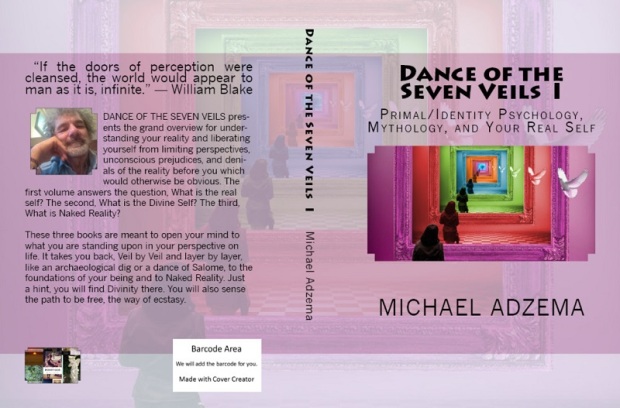




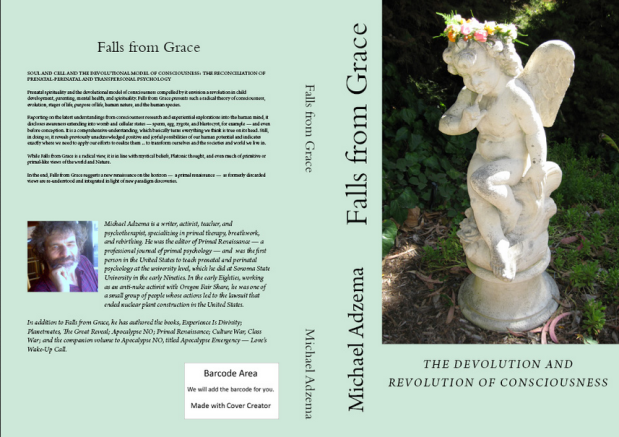



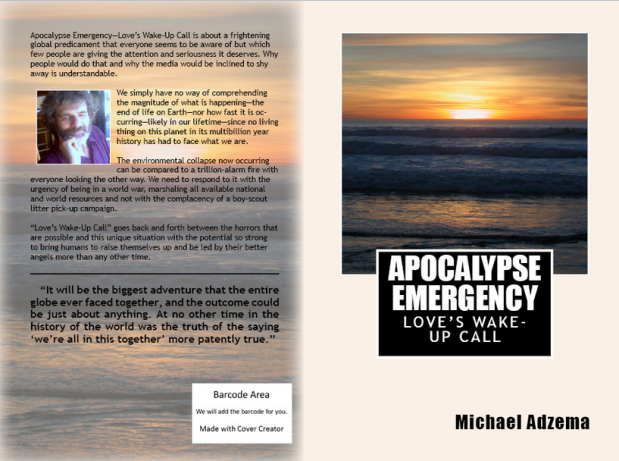
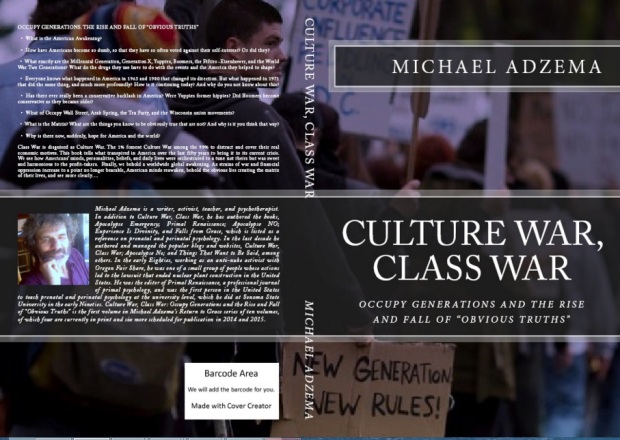









































































![100604-hitler-020_thumb[1] 100604-hitler-020_thumb[1]](https://apocalypseknow.files.wordpress.com/2012/07/100604-hitler-020_thumb1_thumb.jpg?w=628&h=501)
![rock concert_thumb[2] rock concert_thumb[2]](https://apocalypseknow.files.wordpress.com/2012/07/rock-concert_thumb2_thumb.jpg?w=632&h=433)
![clip_image008[1] clip_image008[1]](https://apocalypseknow.files.wordpress.com/2012/07/clip_image00811.jpg?w=621&h=225)
![goths_thumb[2] goths_thumb[2]](https://apocalypseknow.files.wordpress.com/2012/07/goths_thumb2_thumb.jpg?w=644&h=487)
![The Wall Movie 1982 (3)_thumb[2] The Wall Movie 1982 (3)_thumb[2]](https://apocalypseknow.files.wordpress.com/2012/07/the-wall-movie-1982-3_thumb2_thumb.jpg?w=634&h=417)

![PercyJackson_Characters_thumb[2] PercyJackson_Characters_thumb[2]](https://apocalypseknow.files.wordpress.com/2012/07/percyjackson_characters_thumb2_thumb.png?w=637&h=637)
![world-peace-090420e_thumb[1] world-peace-090420e_thumb[1]](https://apocalypseknow.files.wordpress.com/2012/07/world-peace-090420e_thumb1_thumb.jpg?w=526&h=526)






























































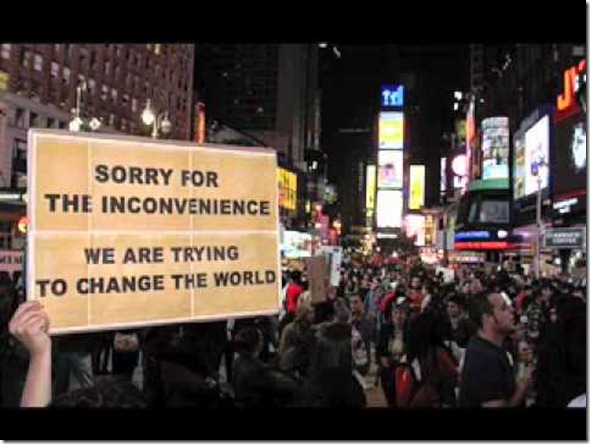
































































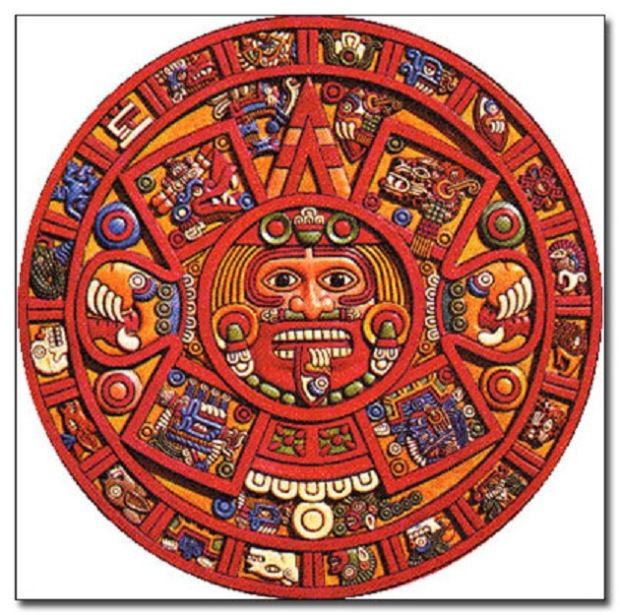



































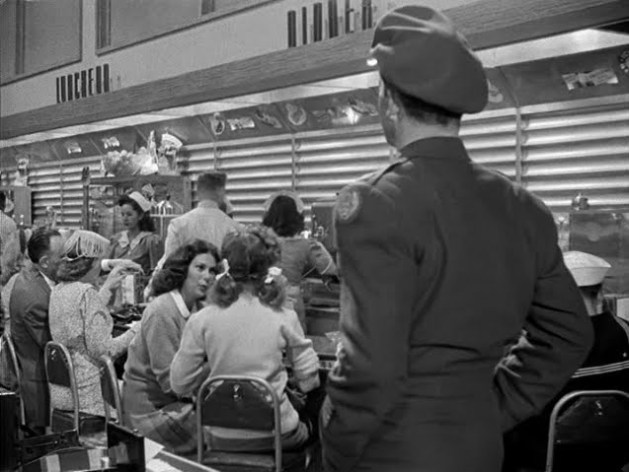


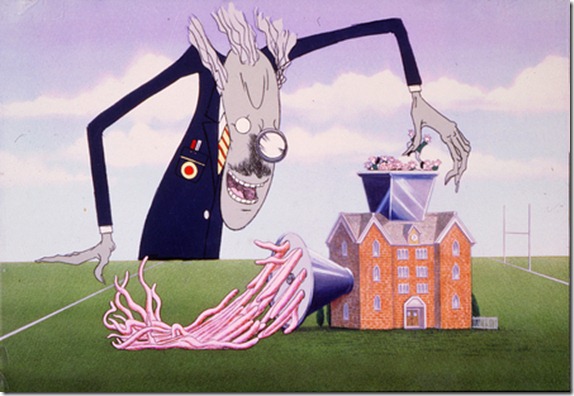


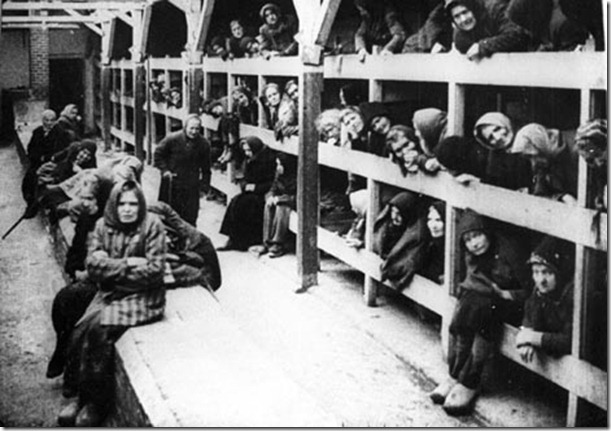



































![clip_image006[4] clip_image006[4]](https://apocalypseknow.files.wordpress.com/2012/06/clip_image0064.jpg?w=615&h=242)
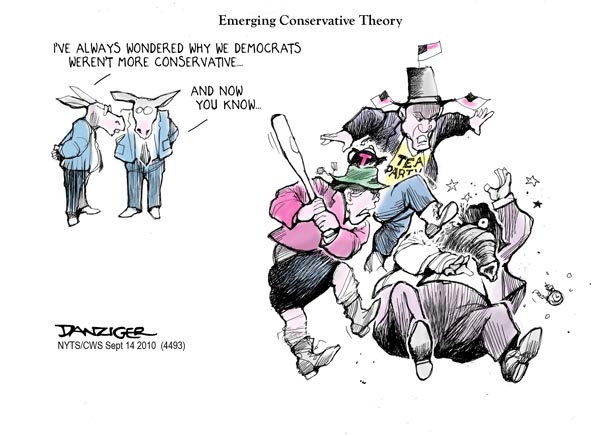















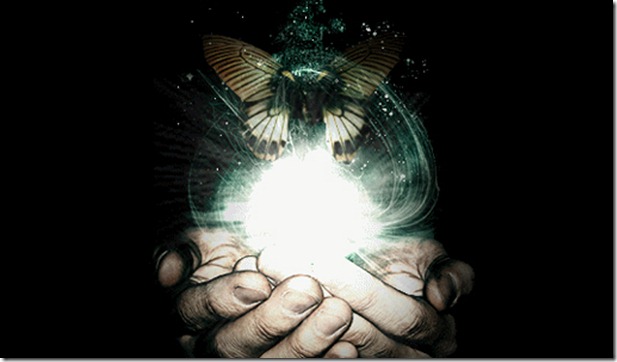














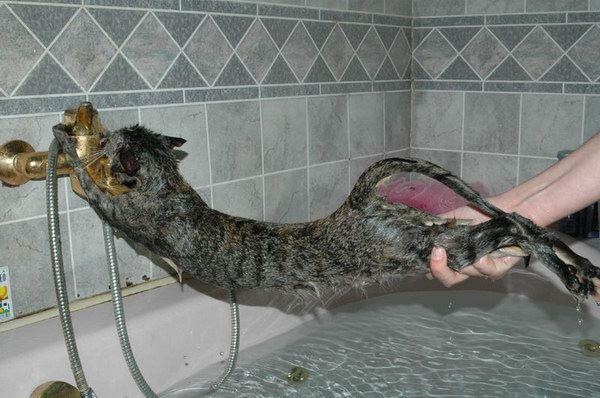



































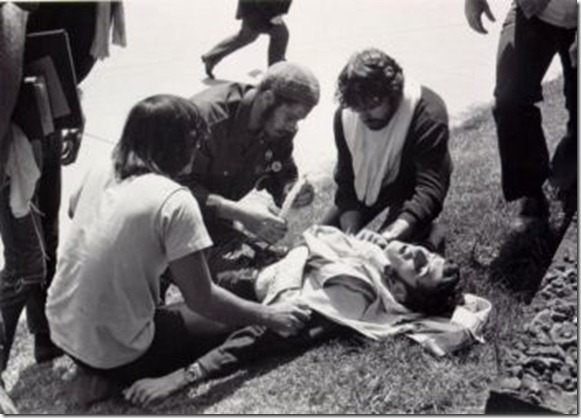































![6488199-vector-colorful-illustration[2] 6488199-vector-colorful-illustration[2]](https://apocalypseknow.files.wordpress.com/2012/05/6488199-vector-colorful-illustration2_thumb1.jpg?w=614&h=575)


























































































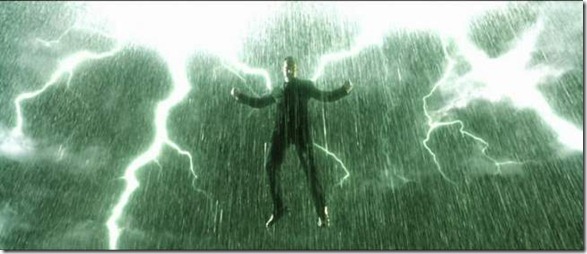




 The rock groups and their lyrics themselves are often blatantly perinatal. The most obvious example of this was the group, Nirvana, who came out with a CD titled “In Utero.” The fact that the leader of the group, Kurt Cobain, committed suicide is a strong indication of his closeness and access to his perinatal trauma…as I will soon explain.
The rock groups and their lyrics themselves are often blatantly perinatal. The most obvious example of this was the group, Nirvana, who came out with a CD titled “In Utero.” The fact that the leader of the group, Kurt Cobain, committed suicide is a strong indication of his closeness and access to his perinatal trauma…as I will soon explain. 











































